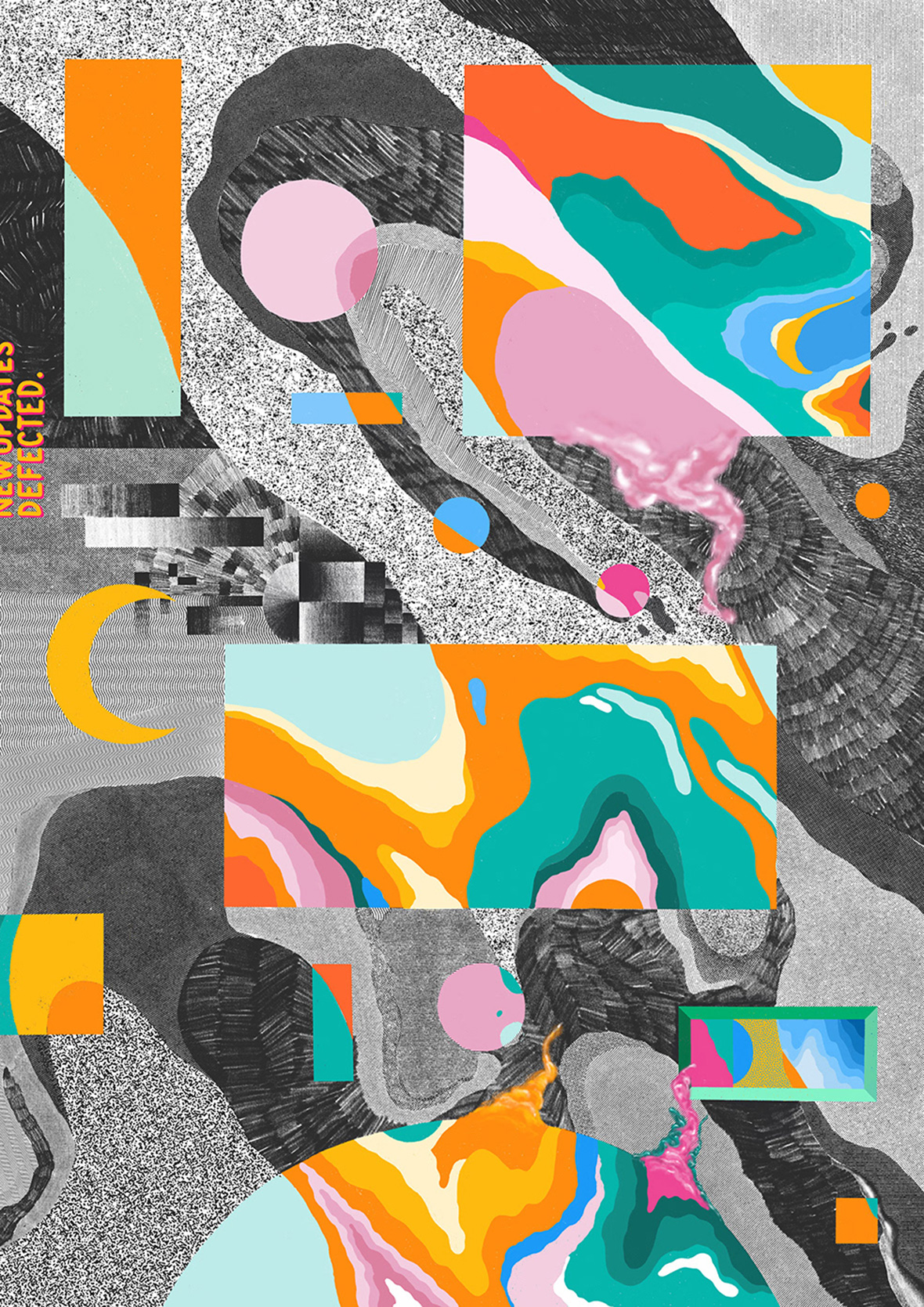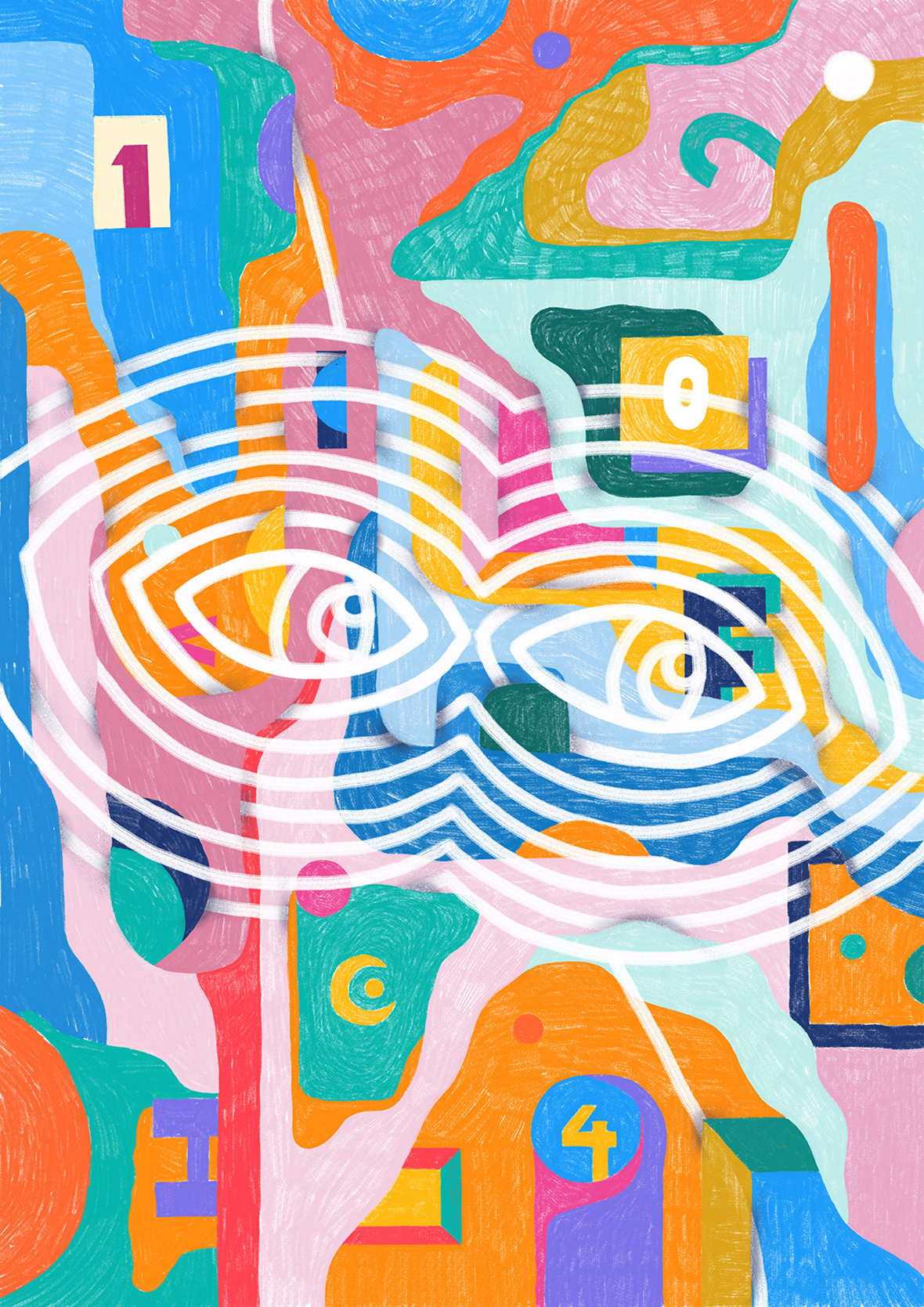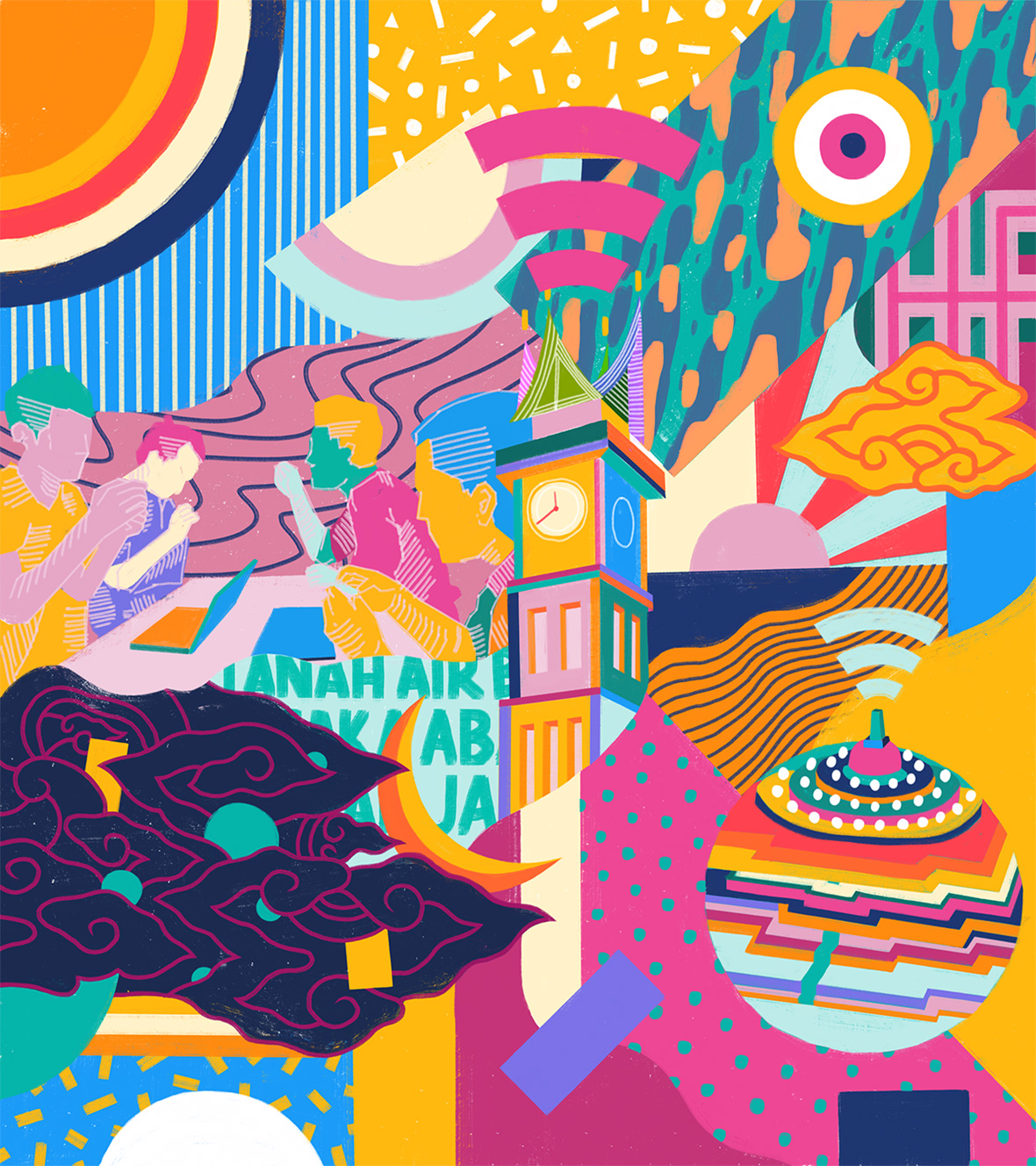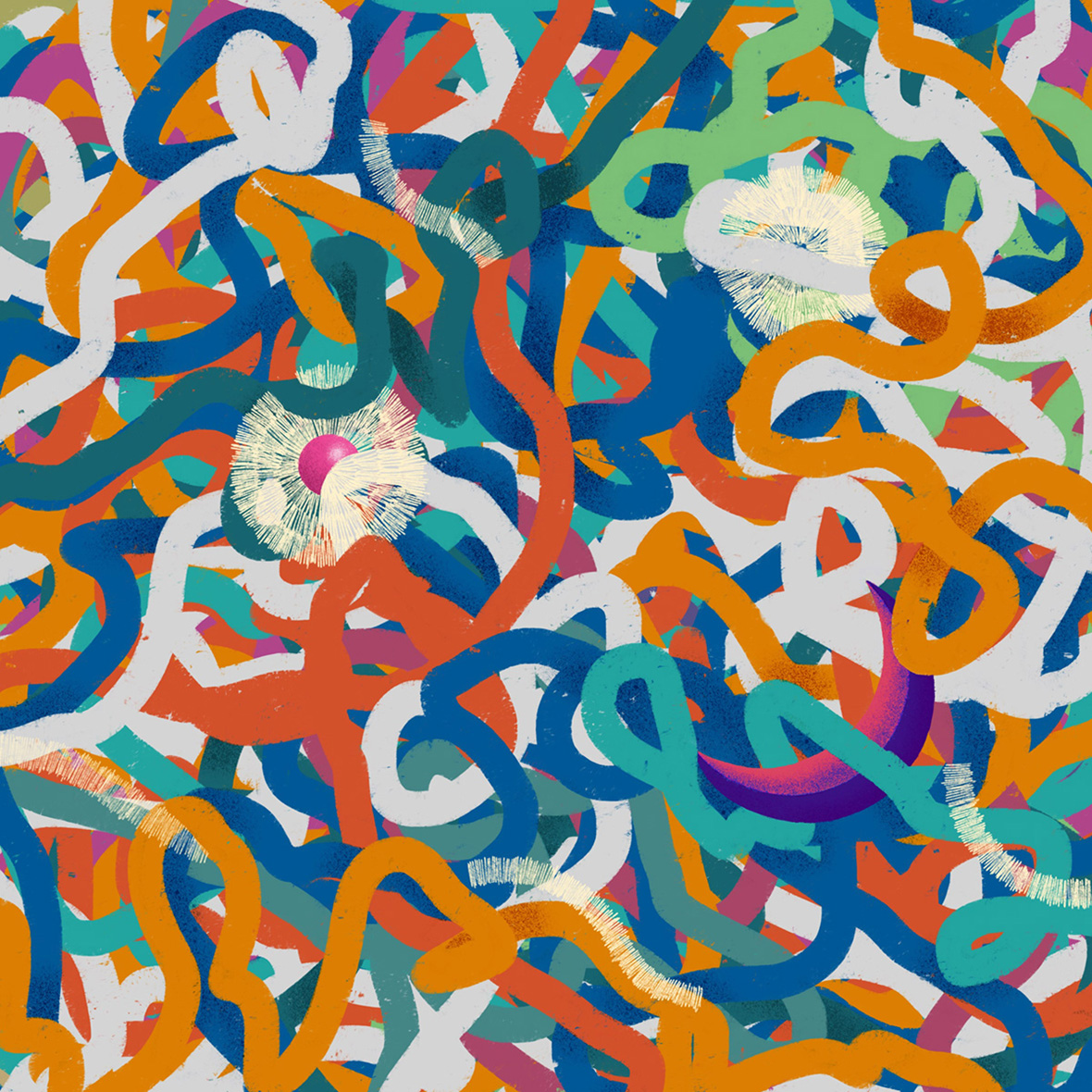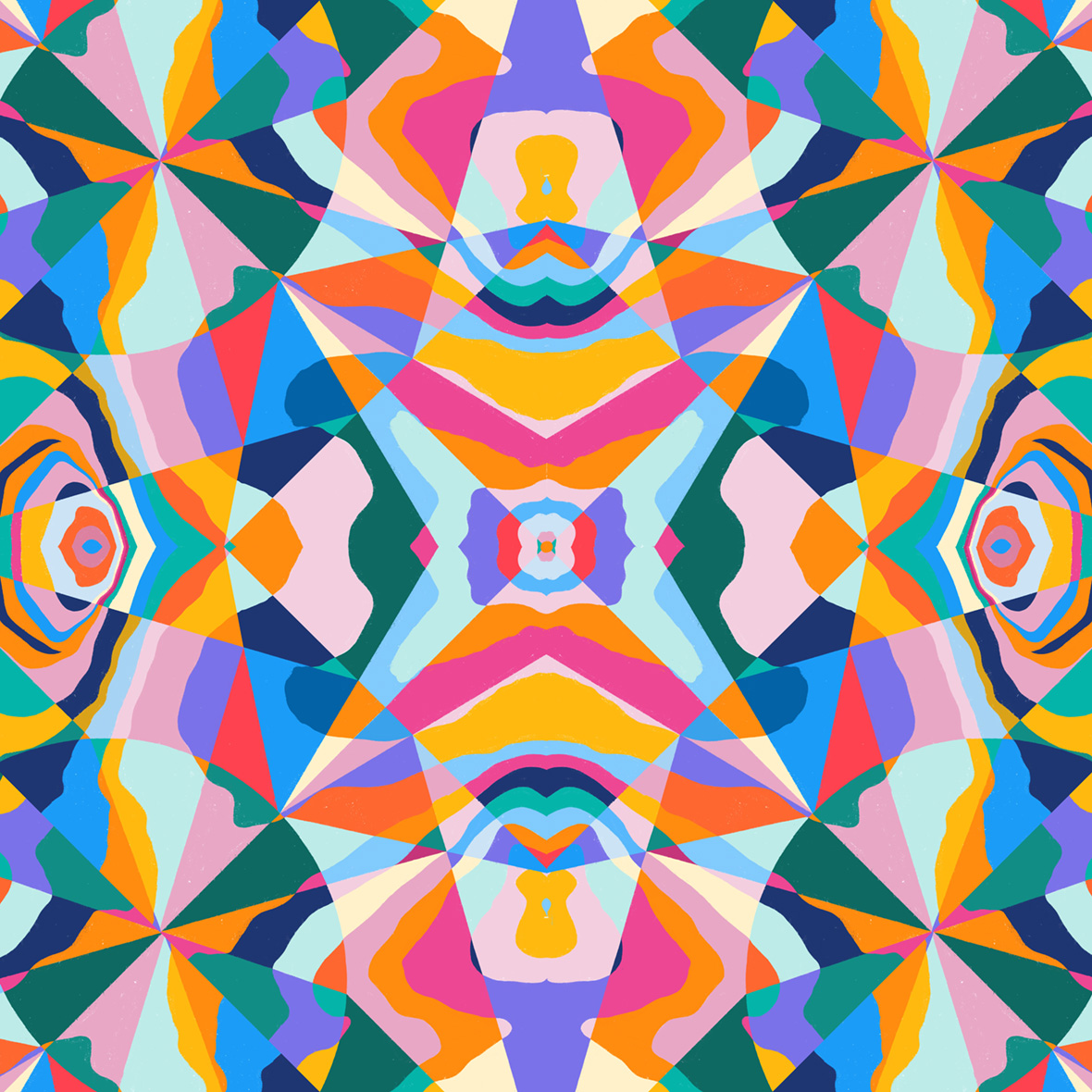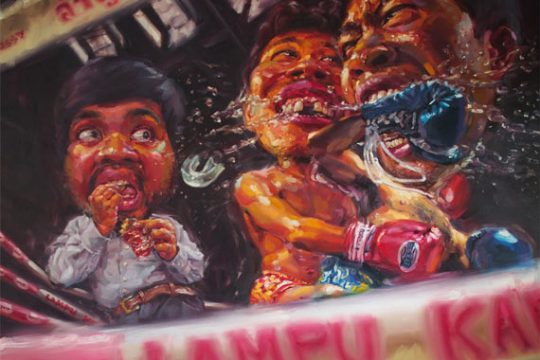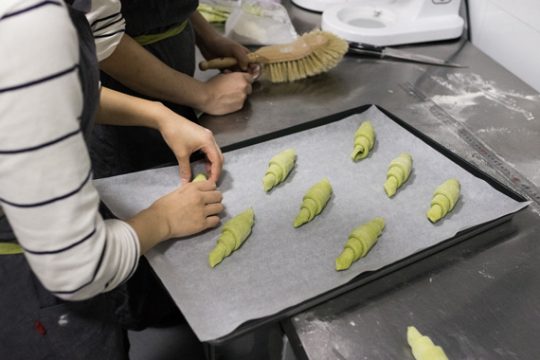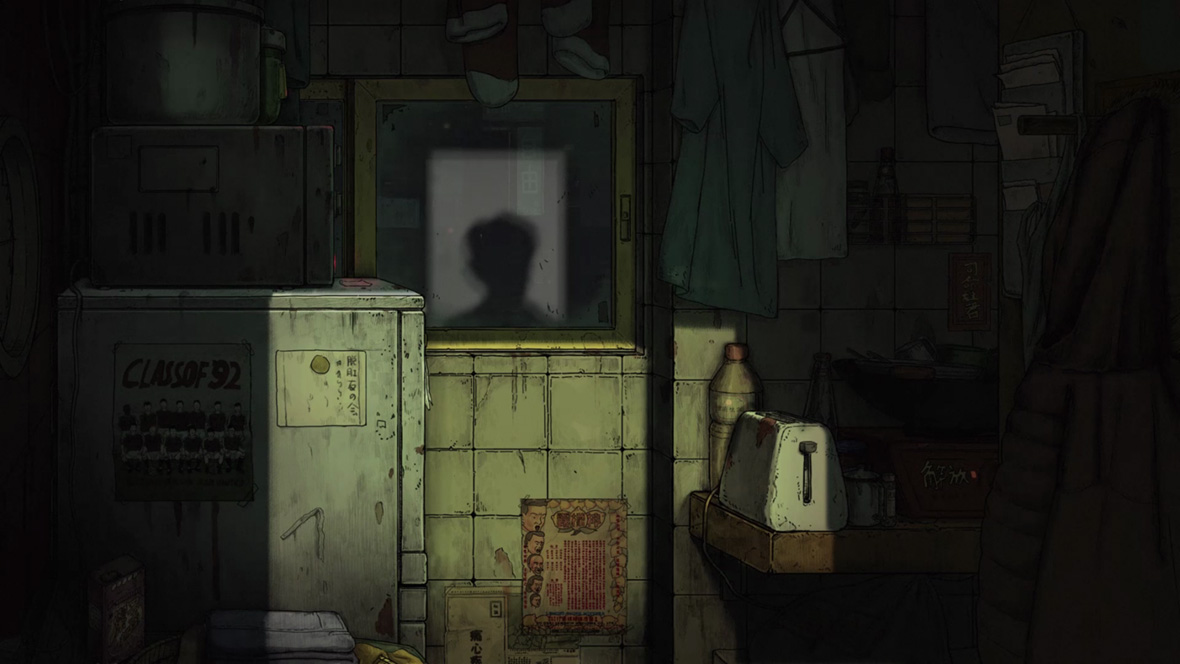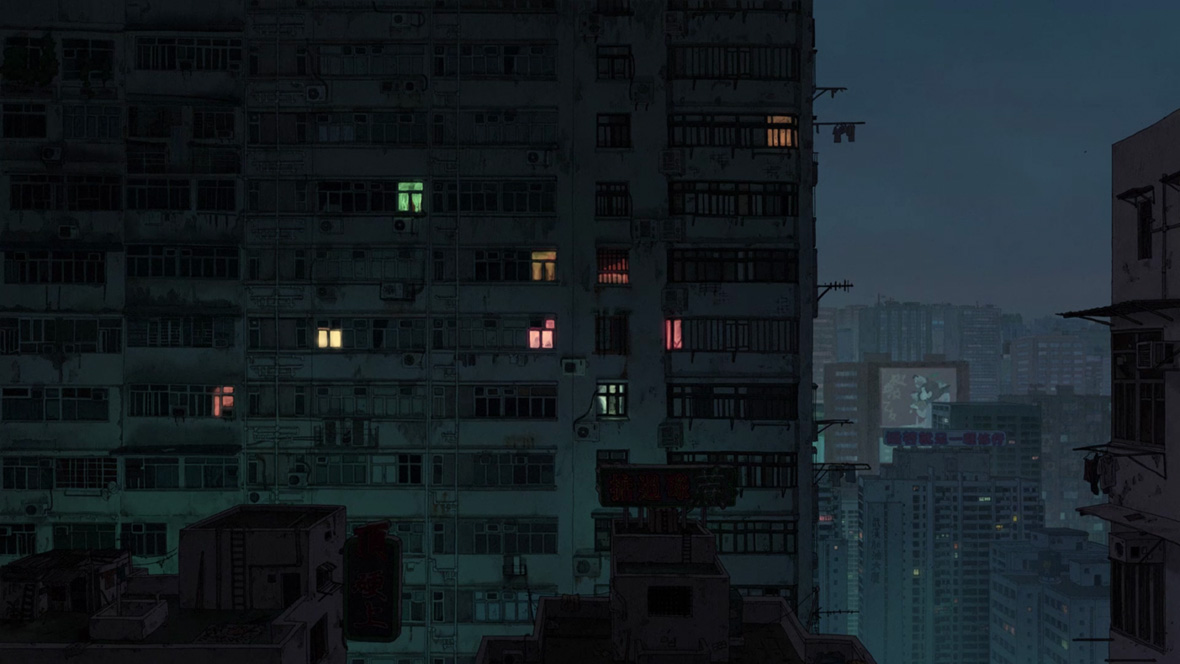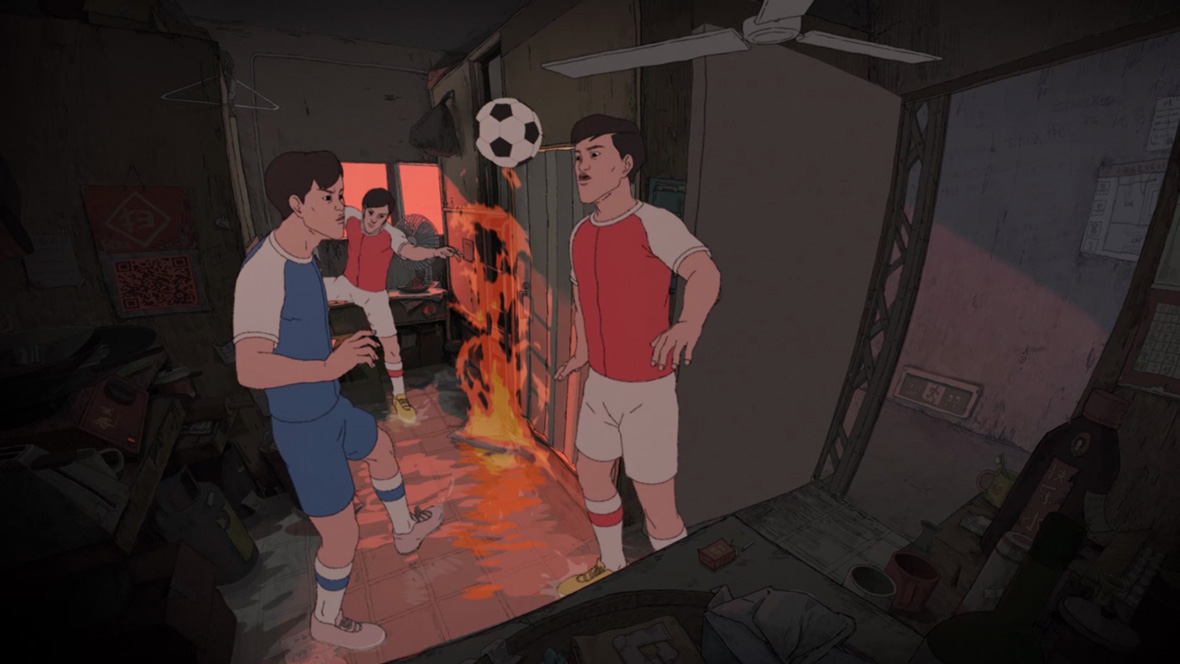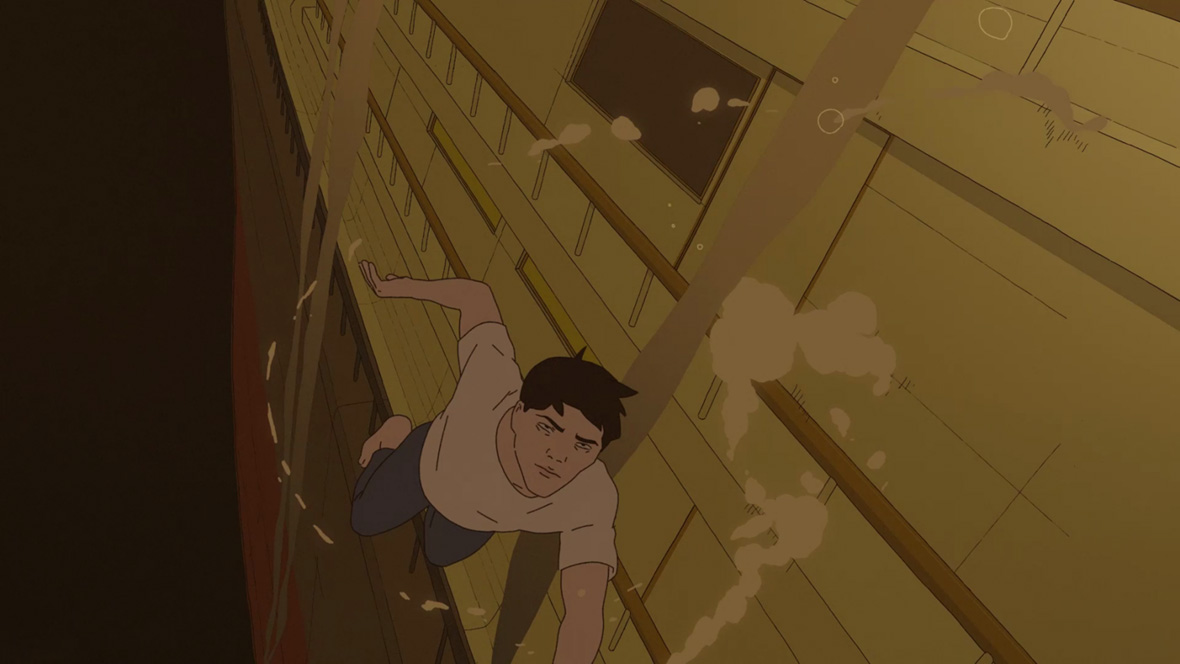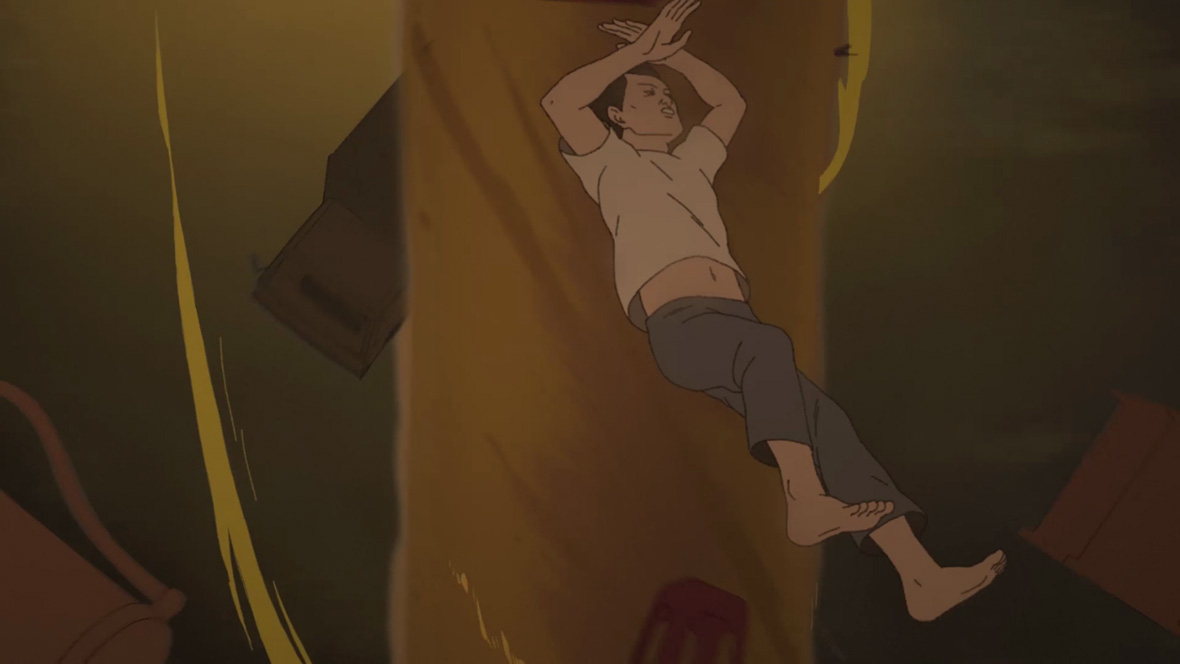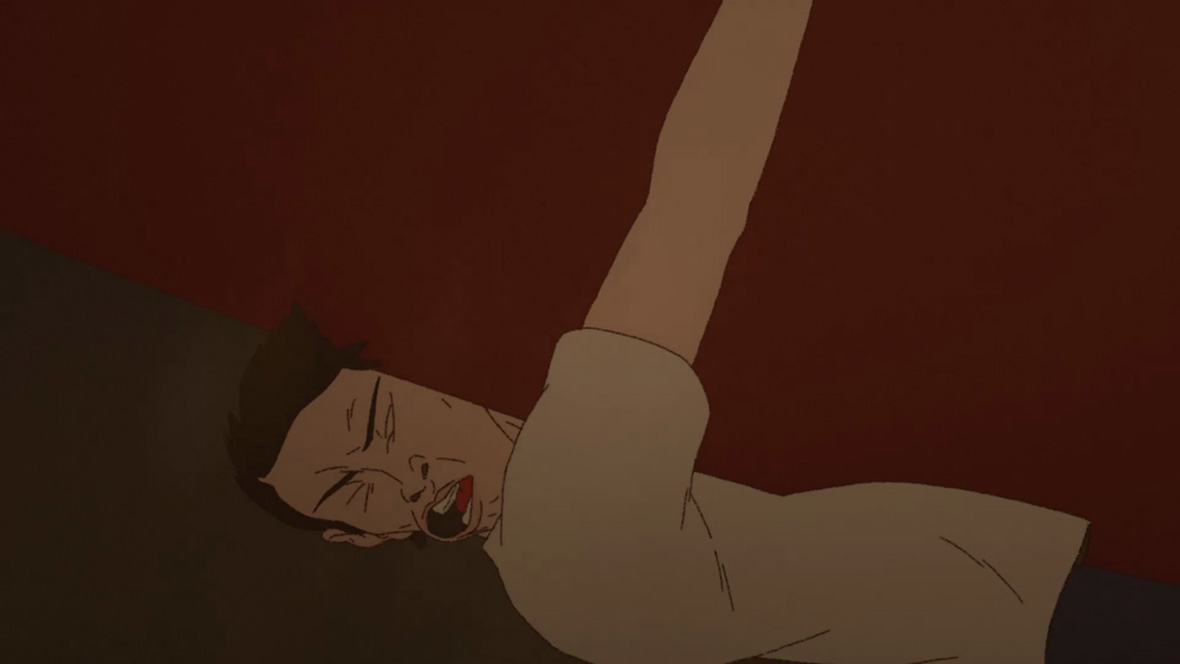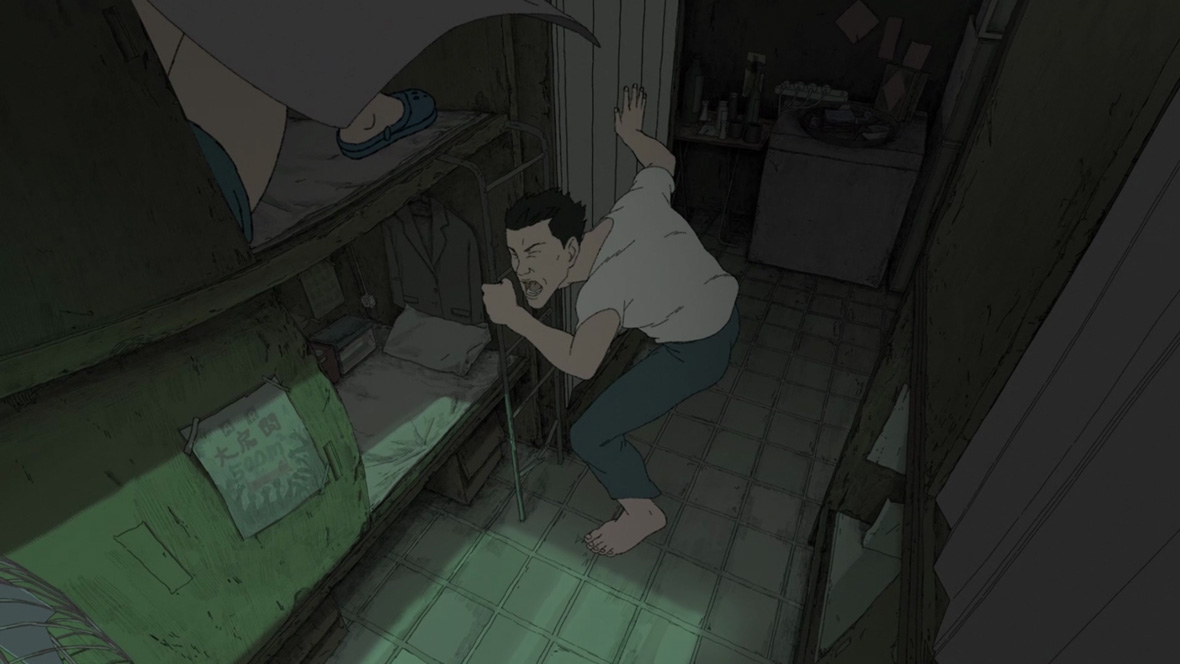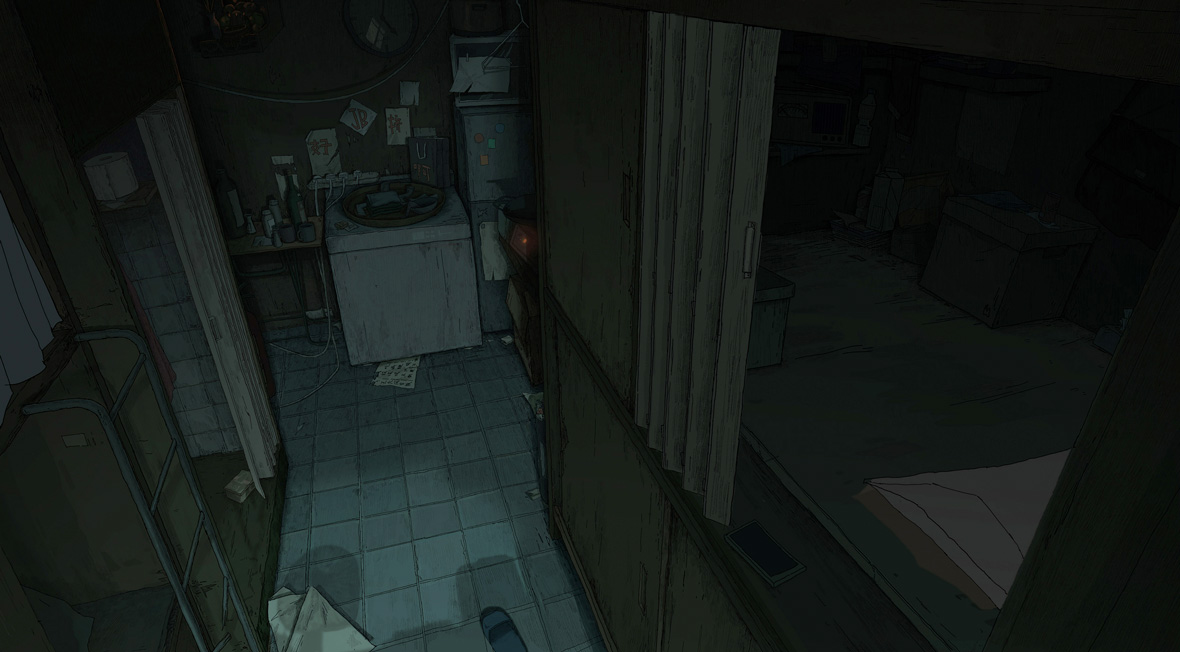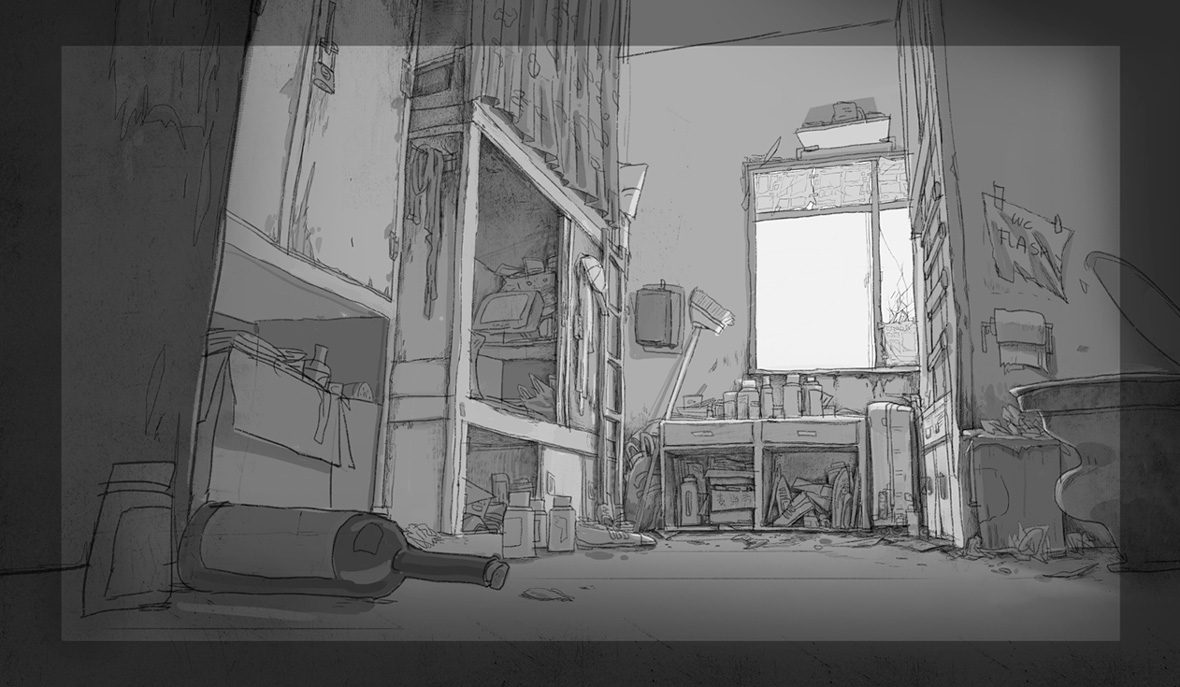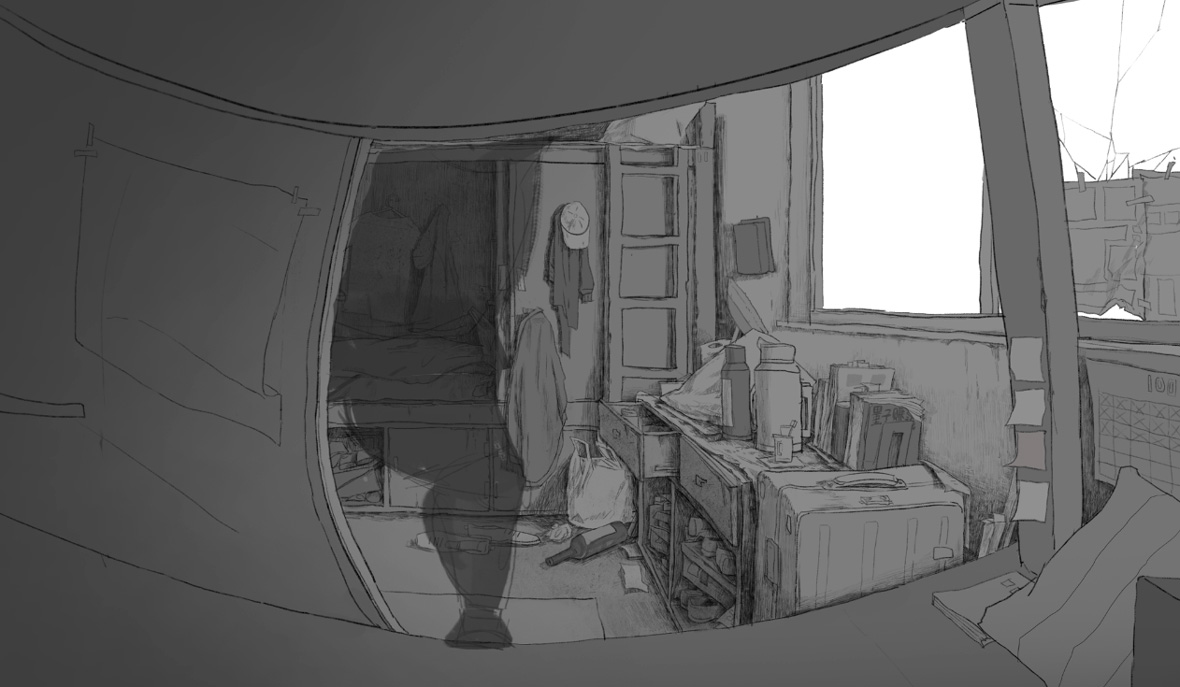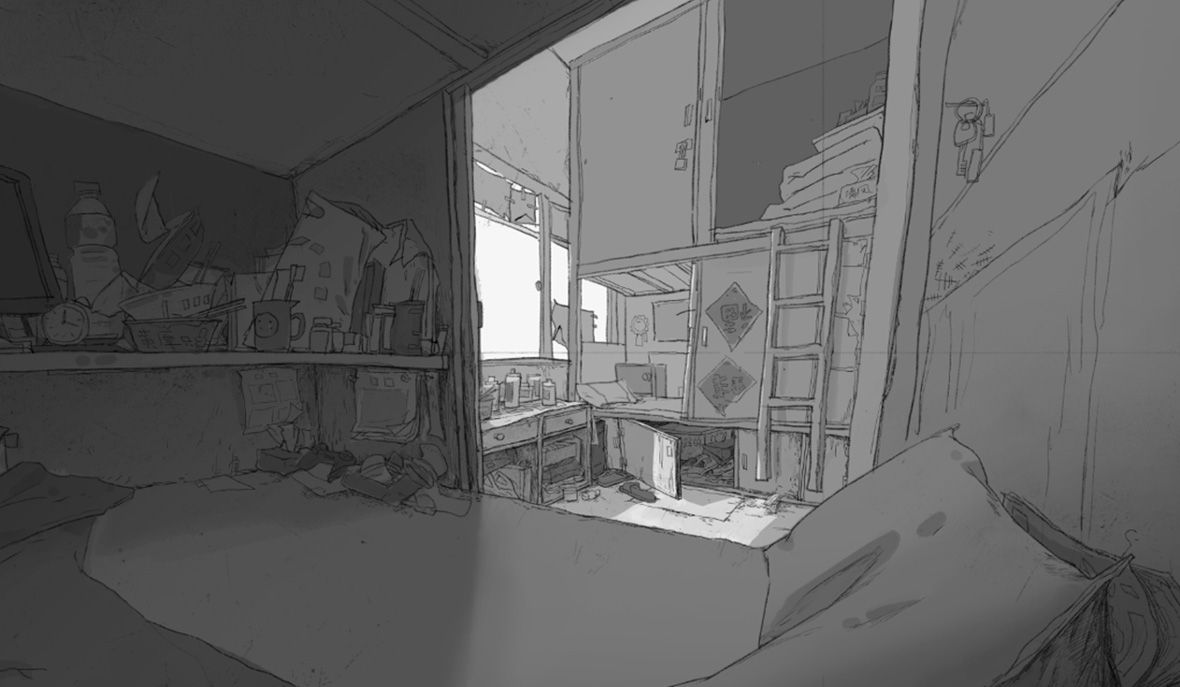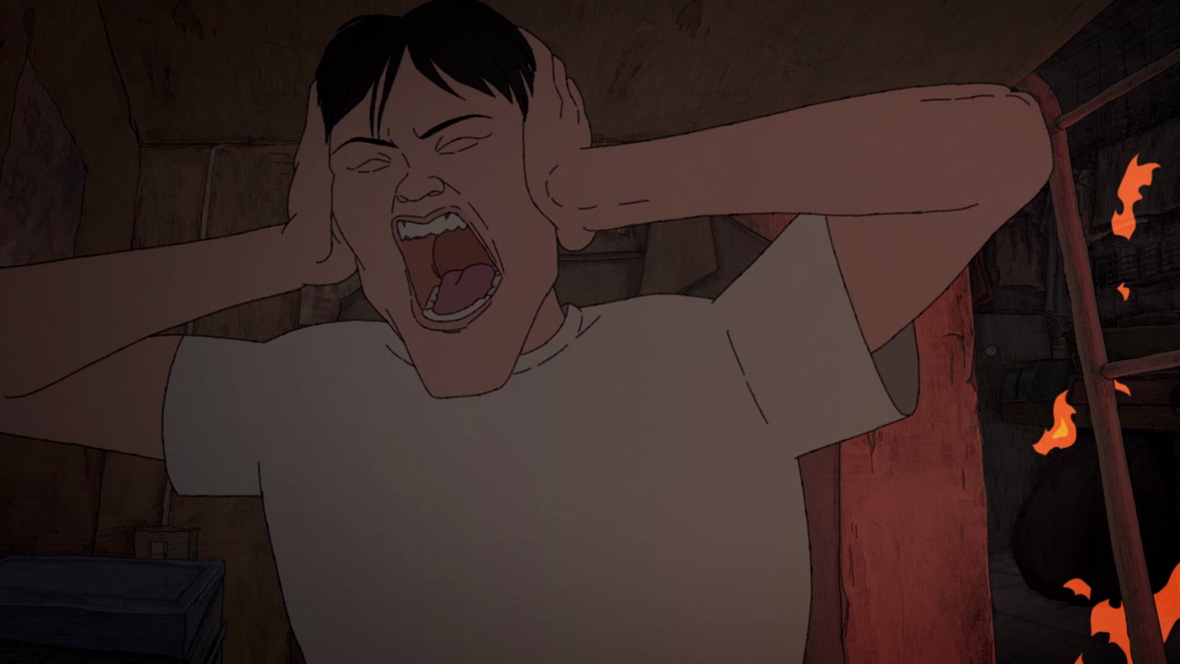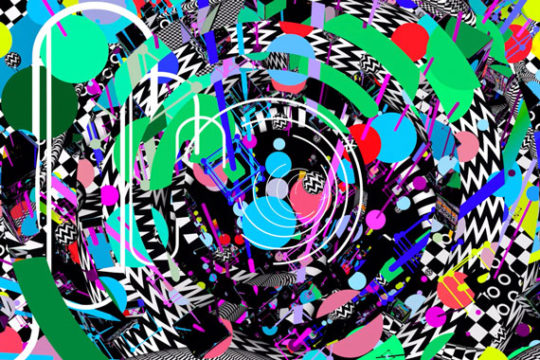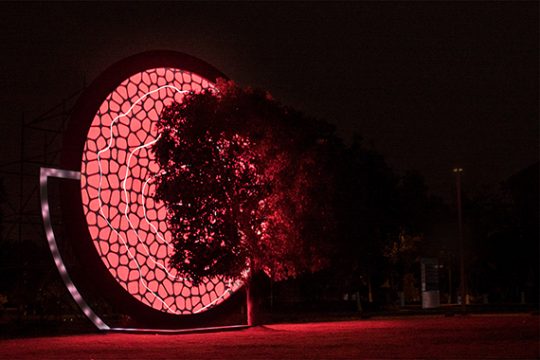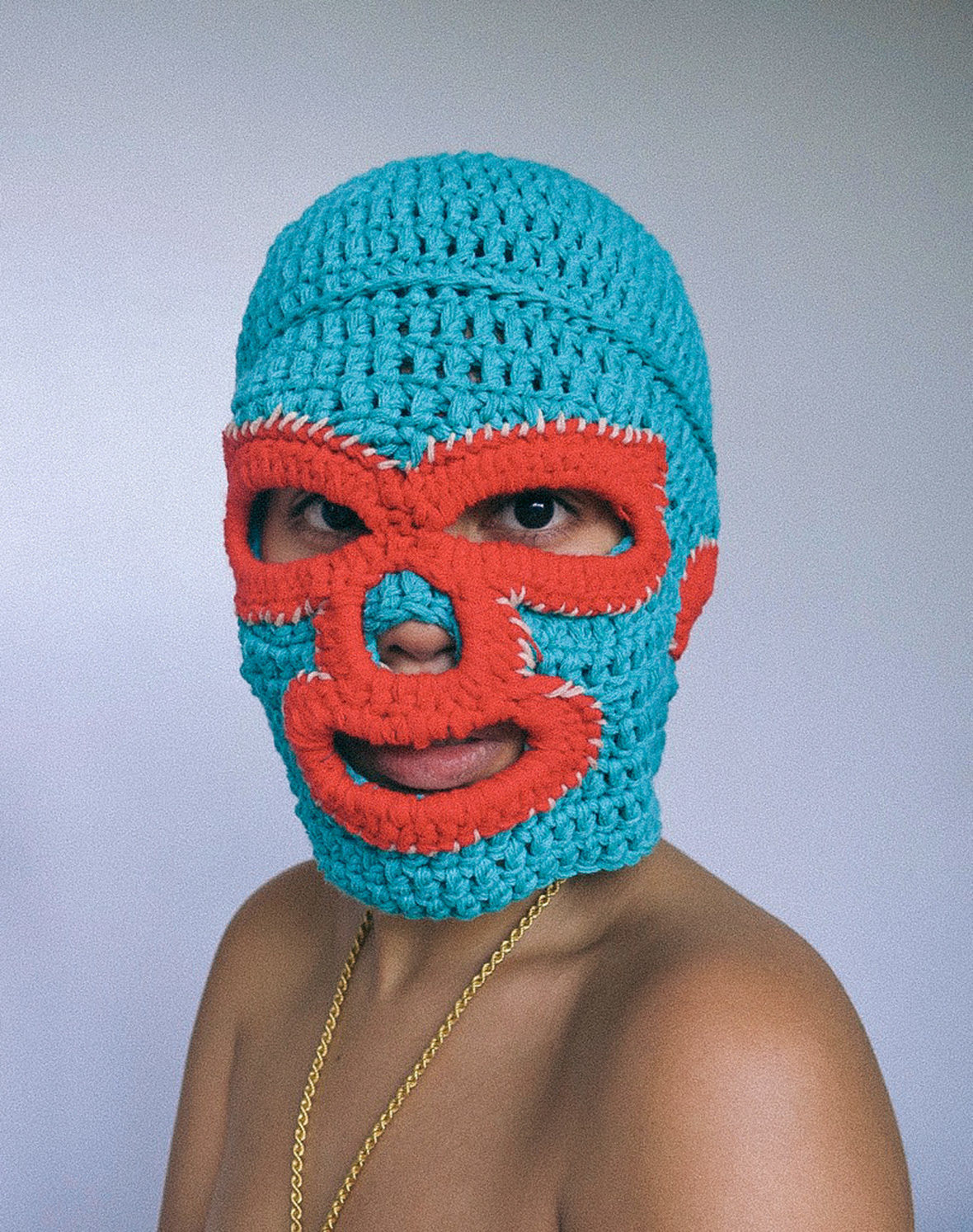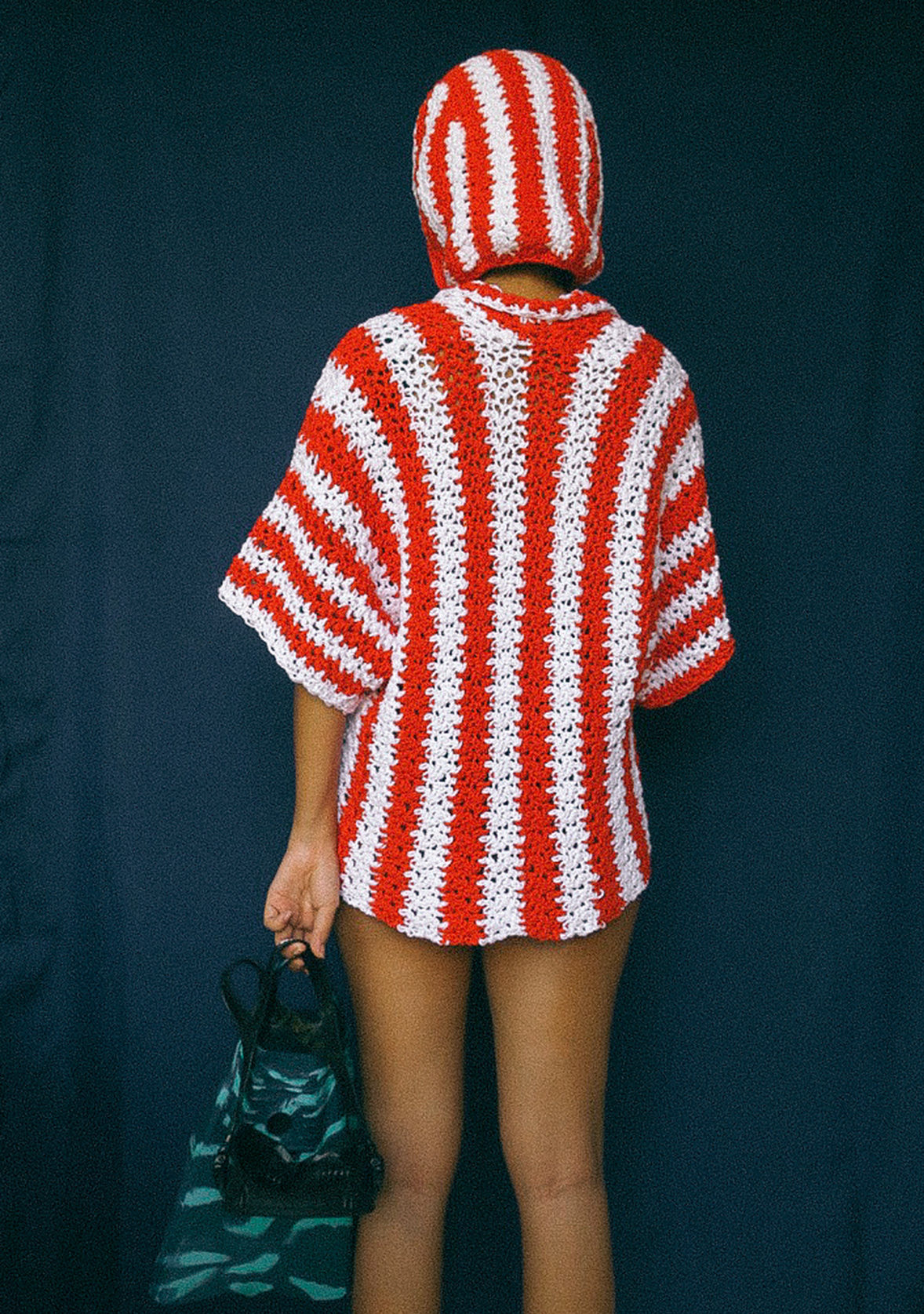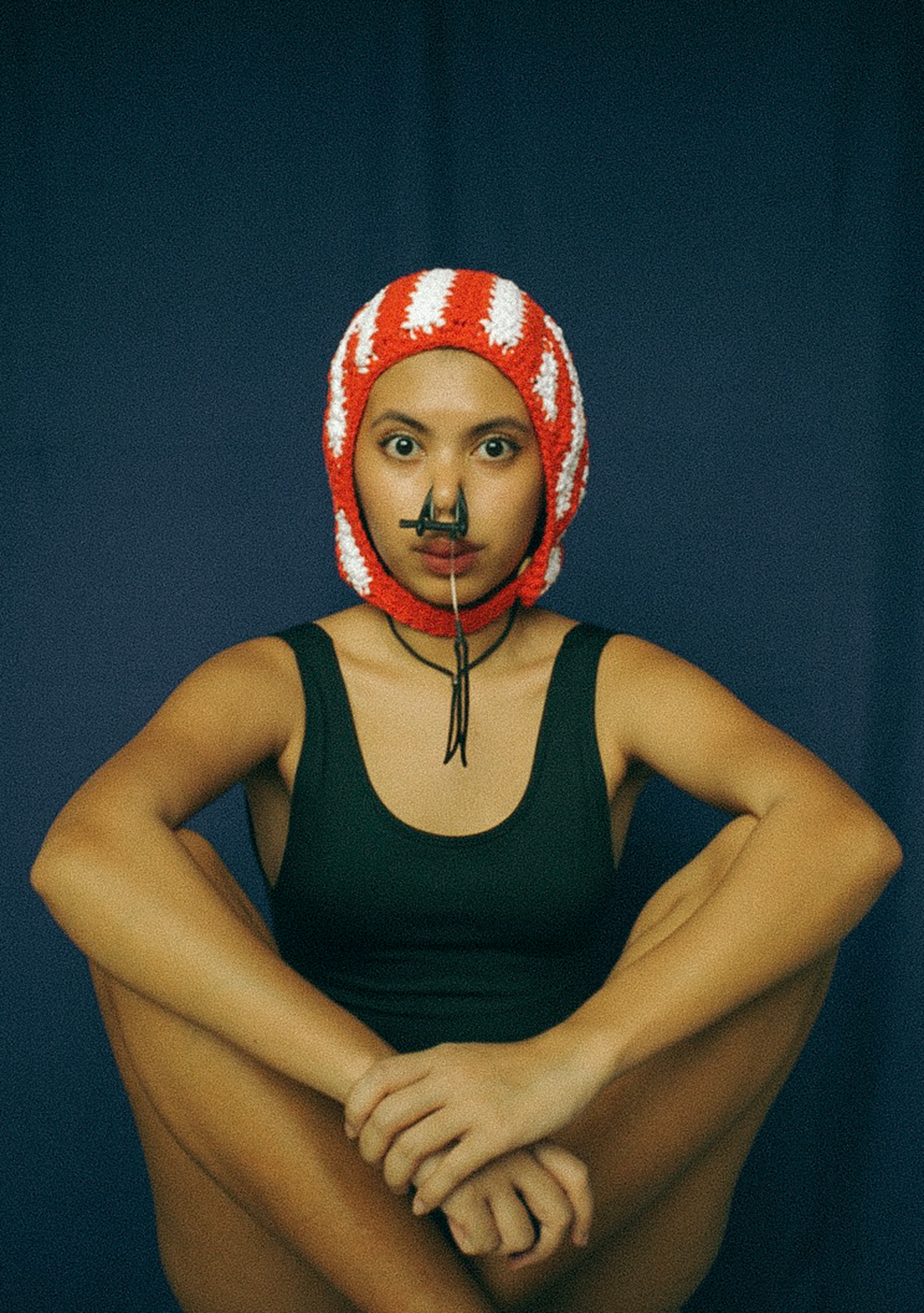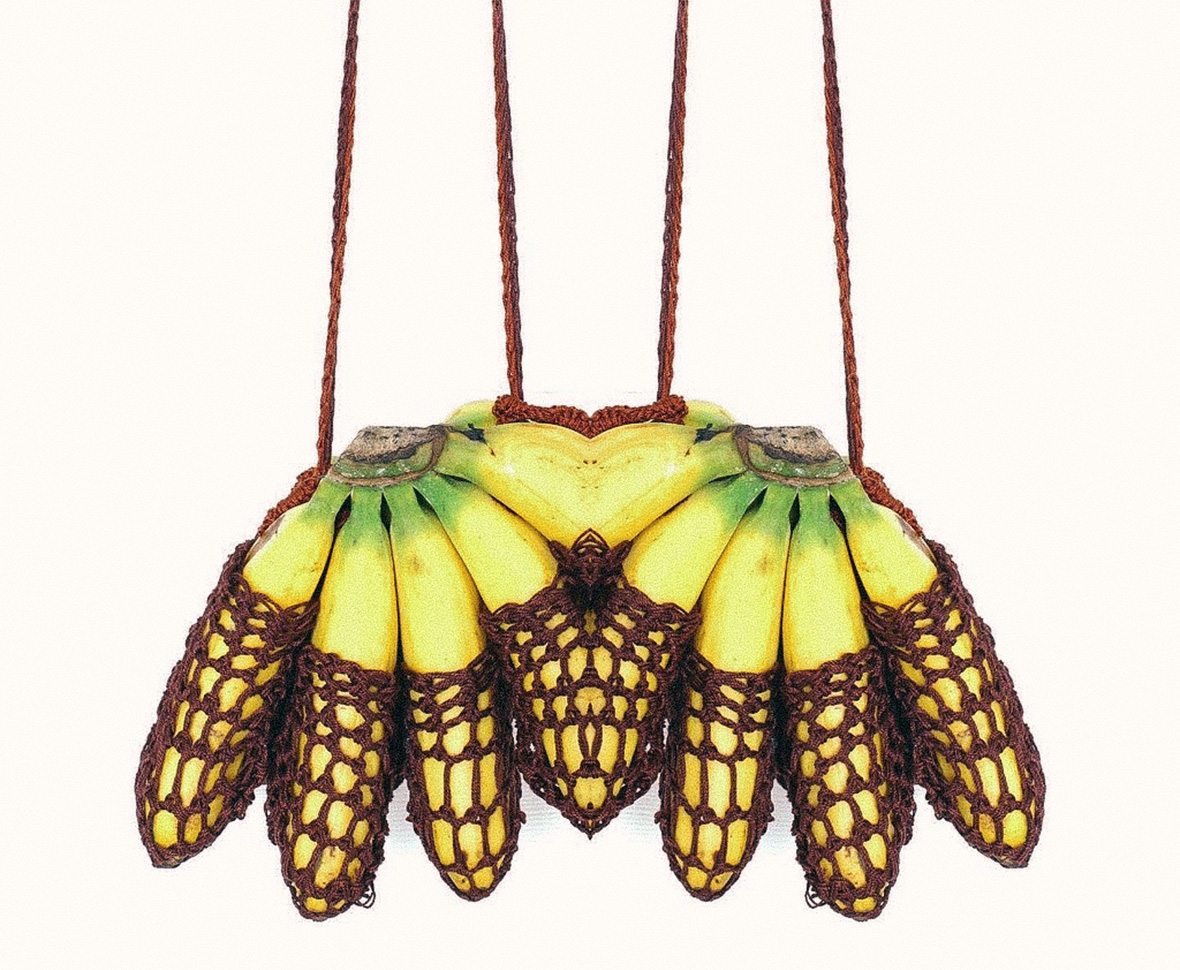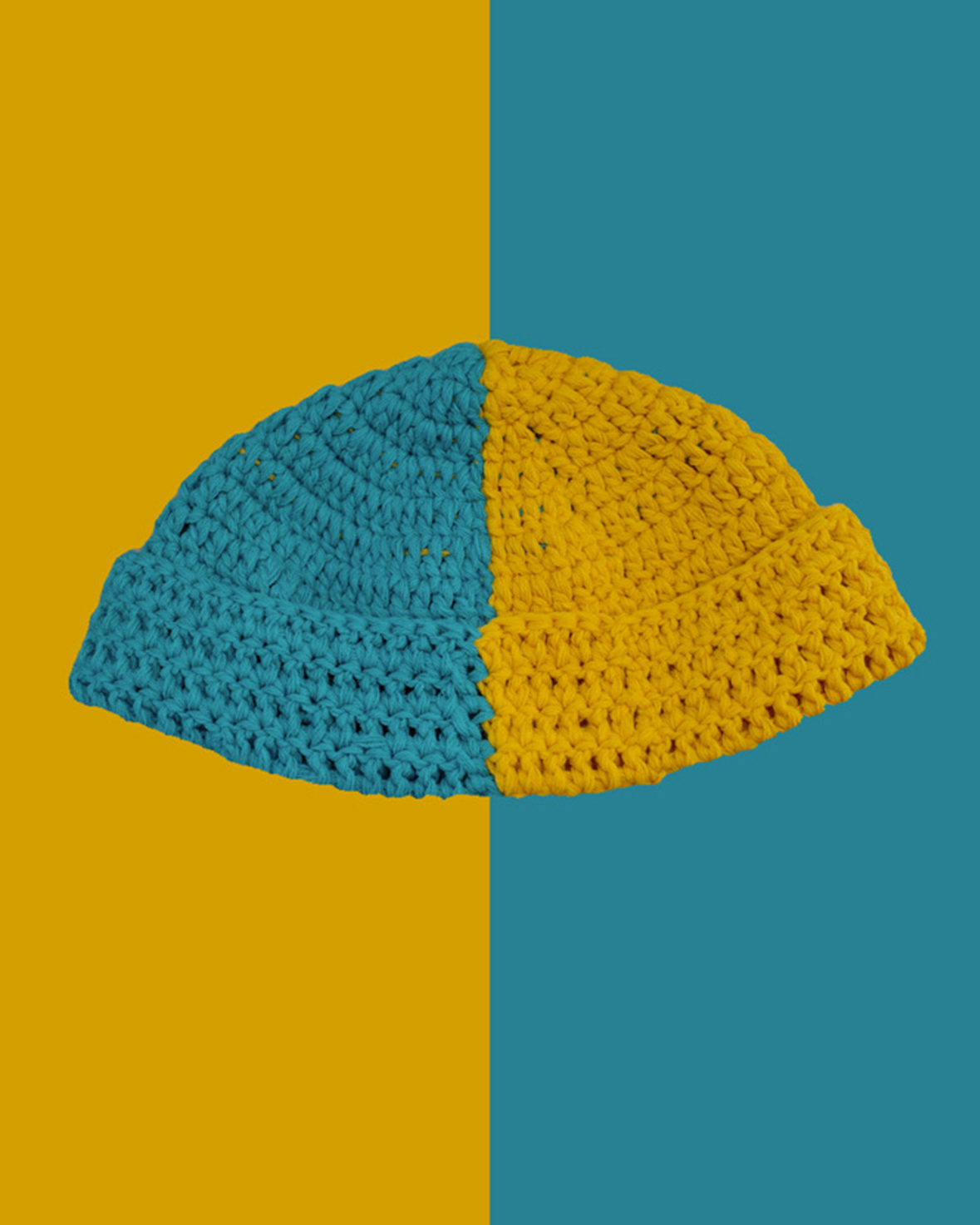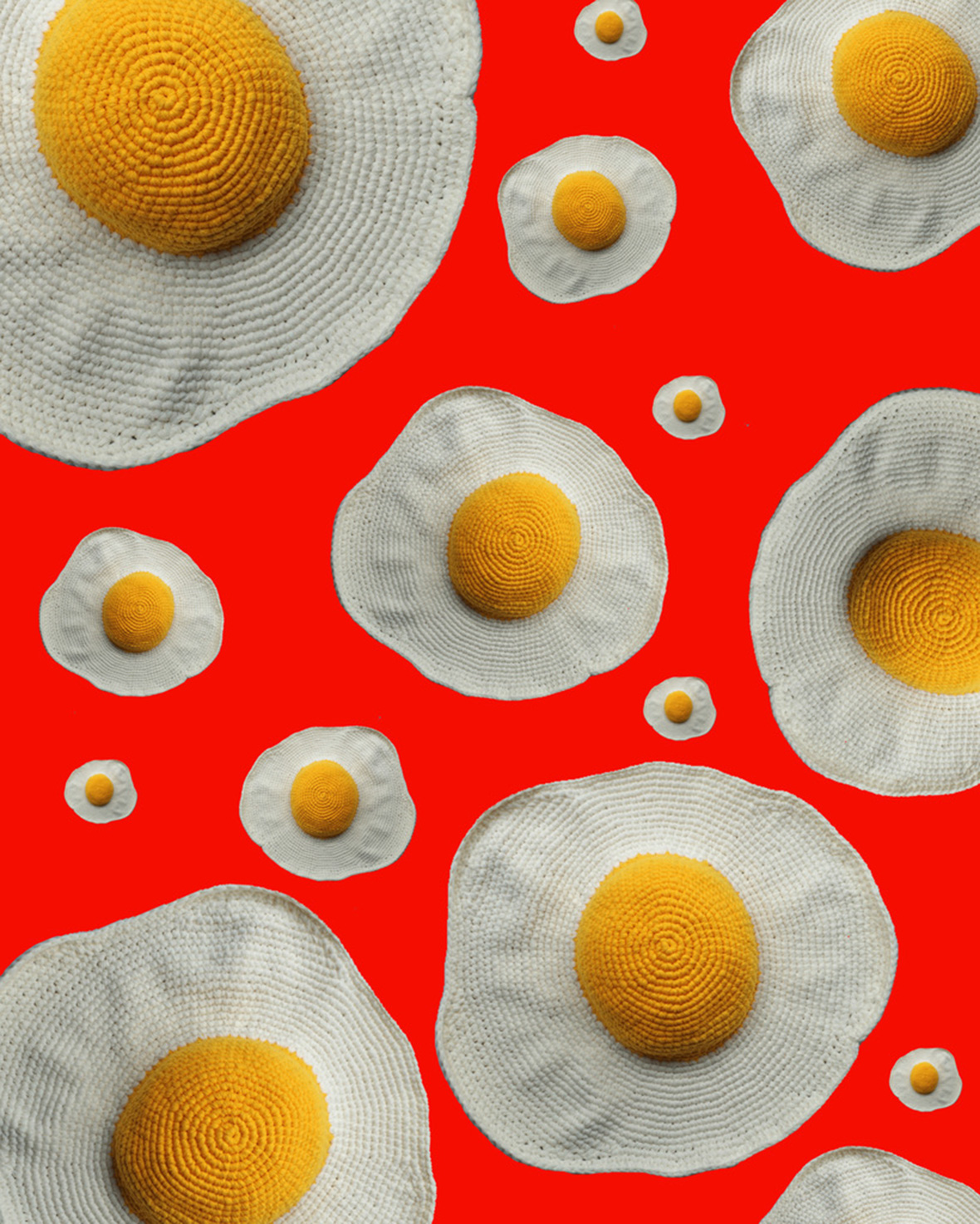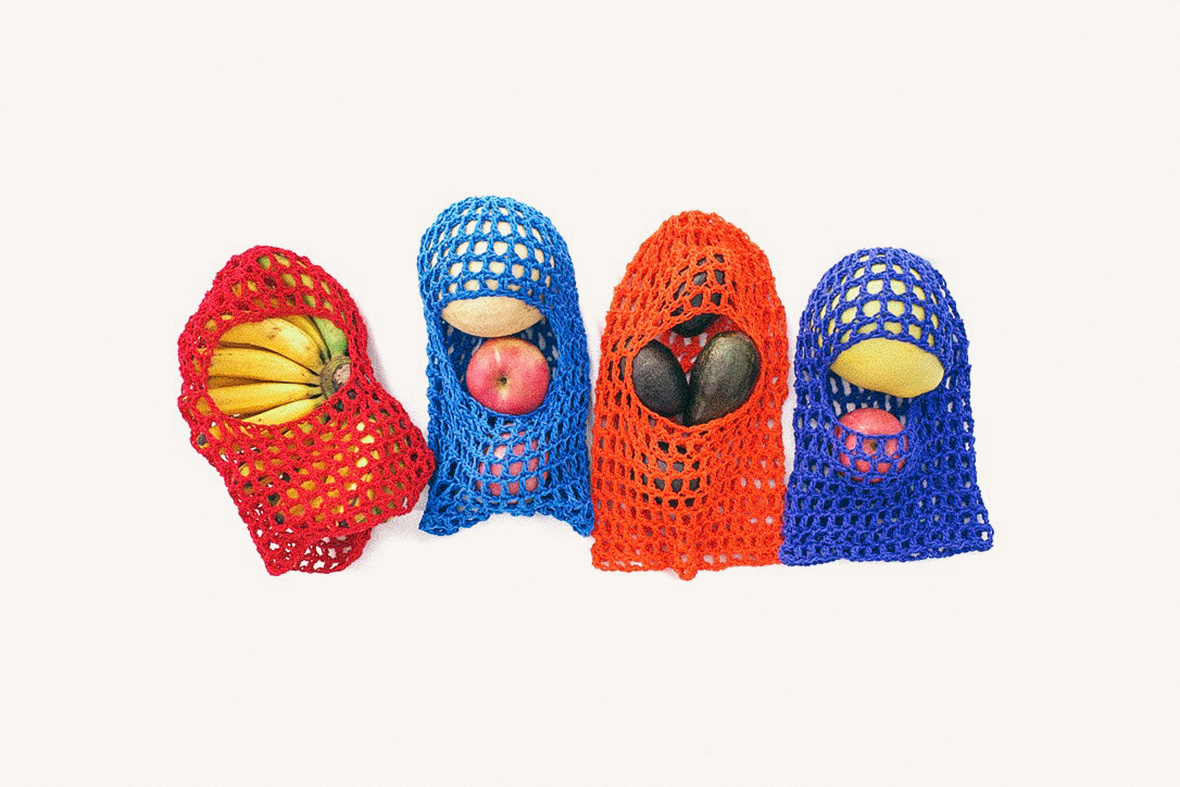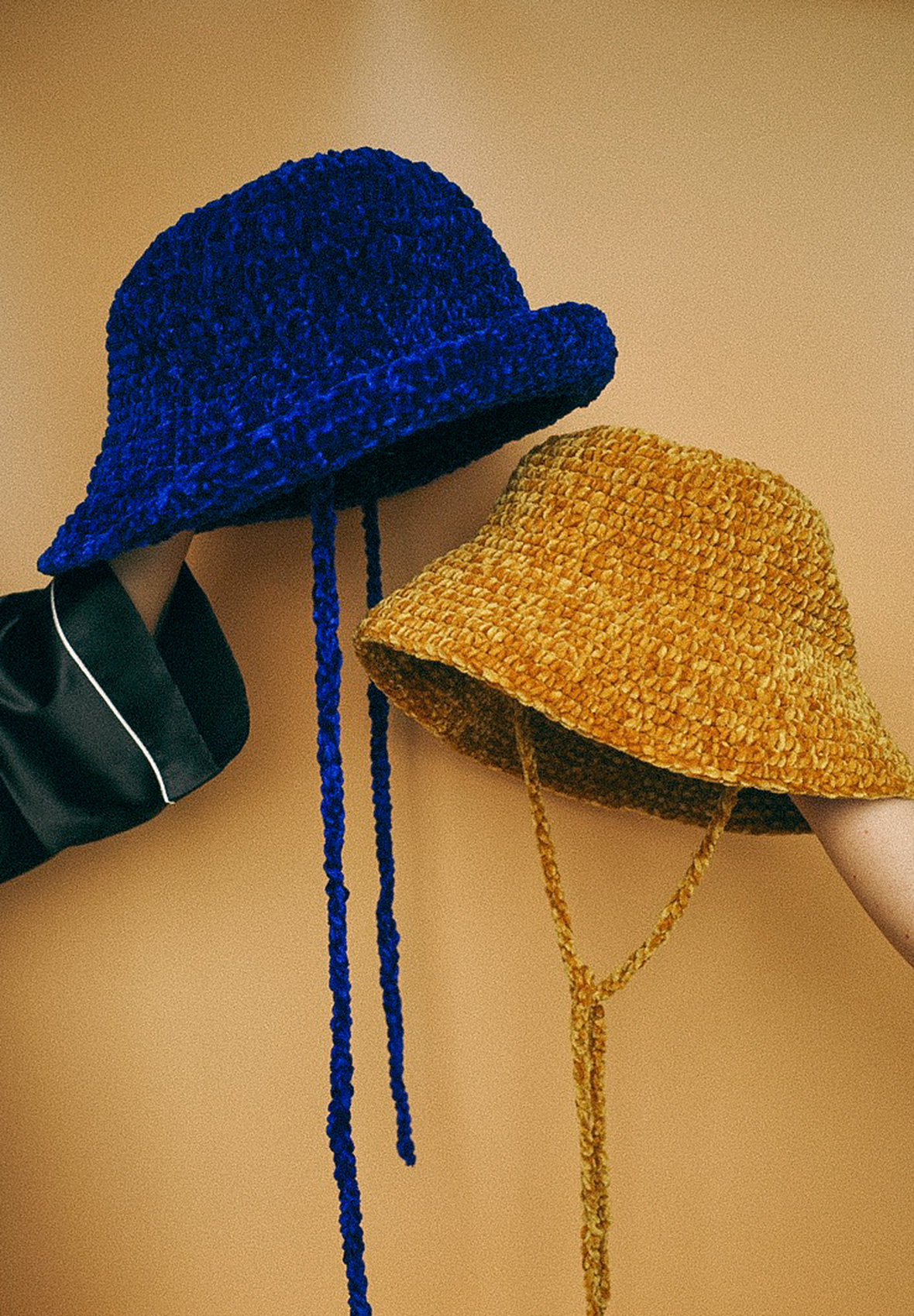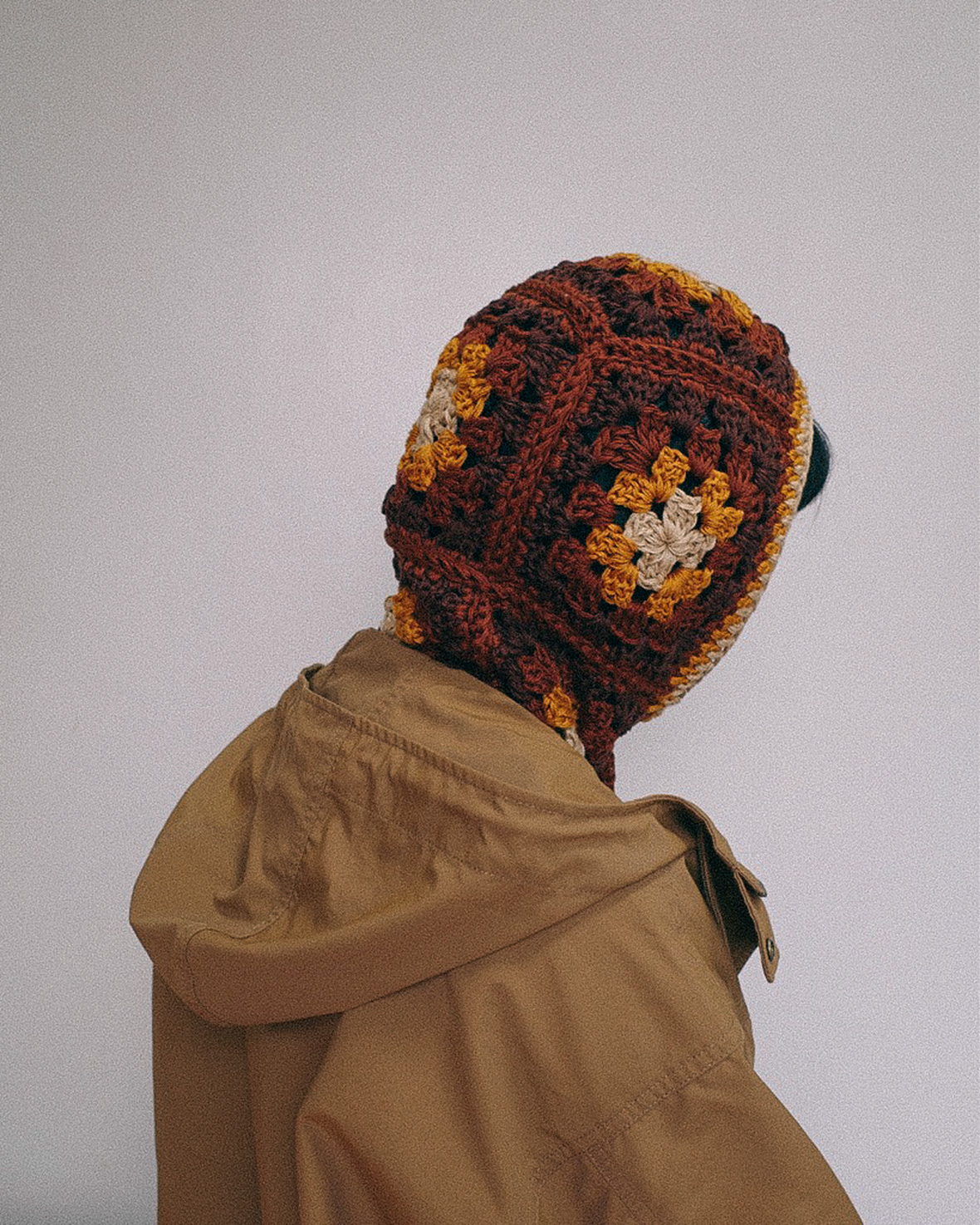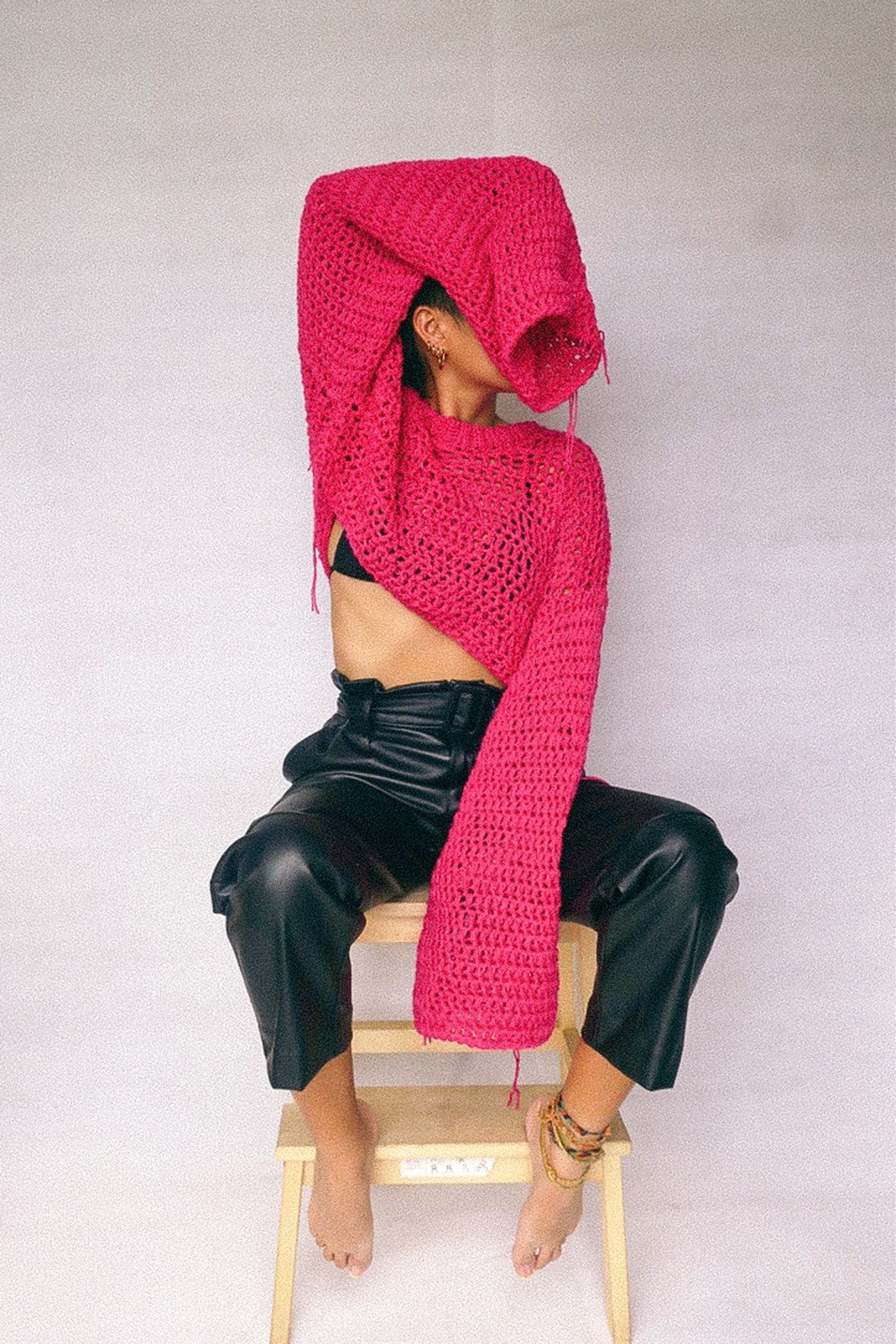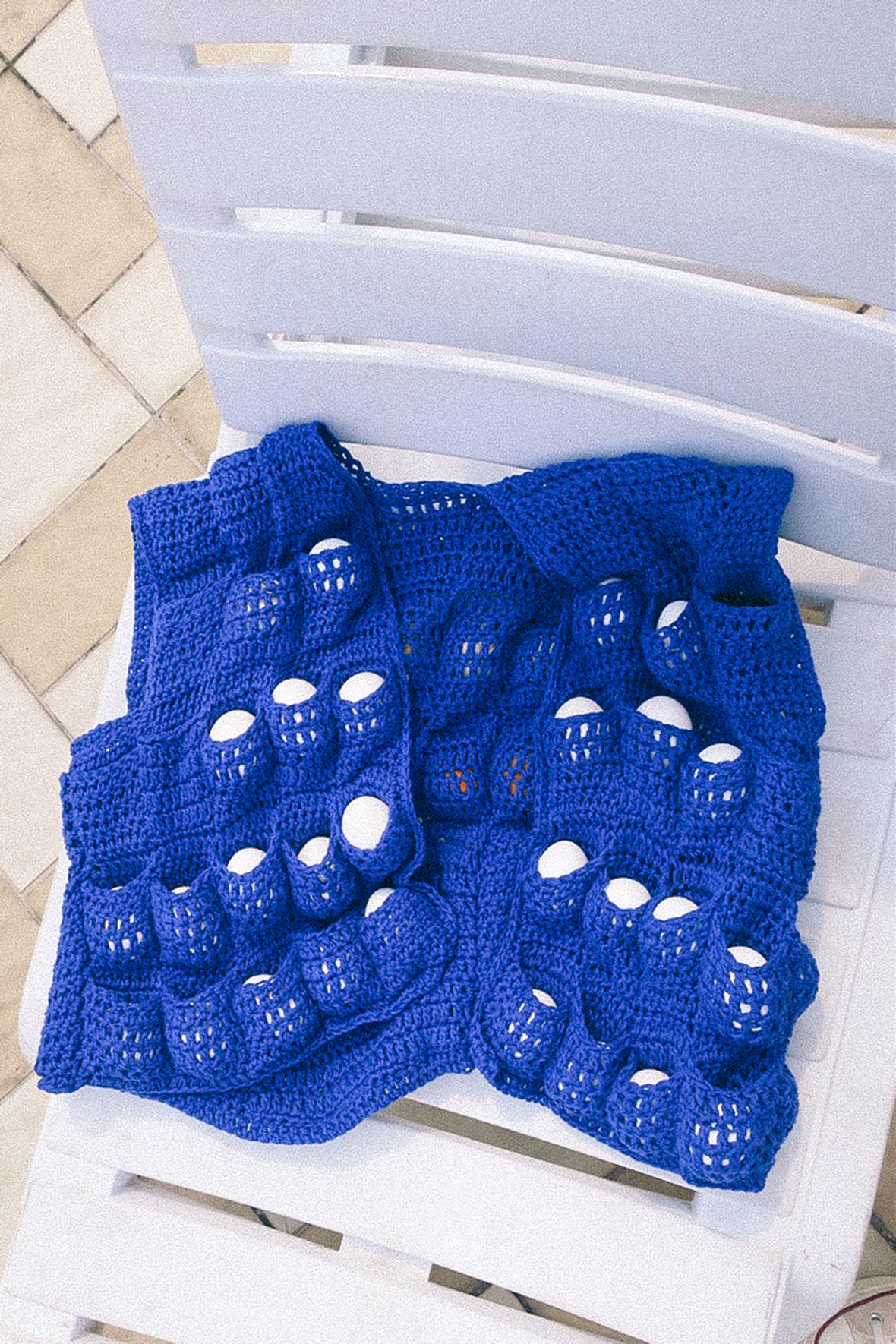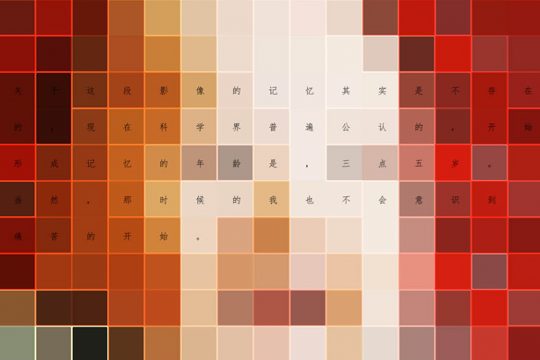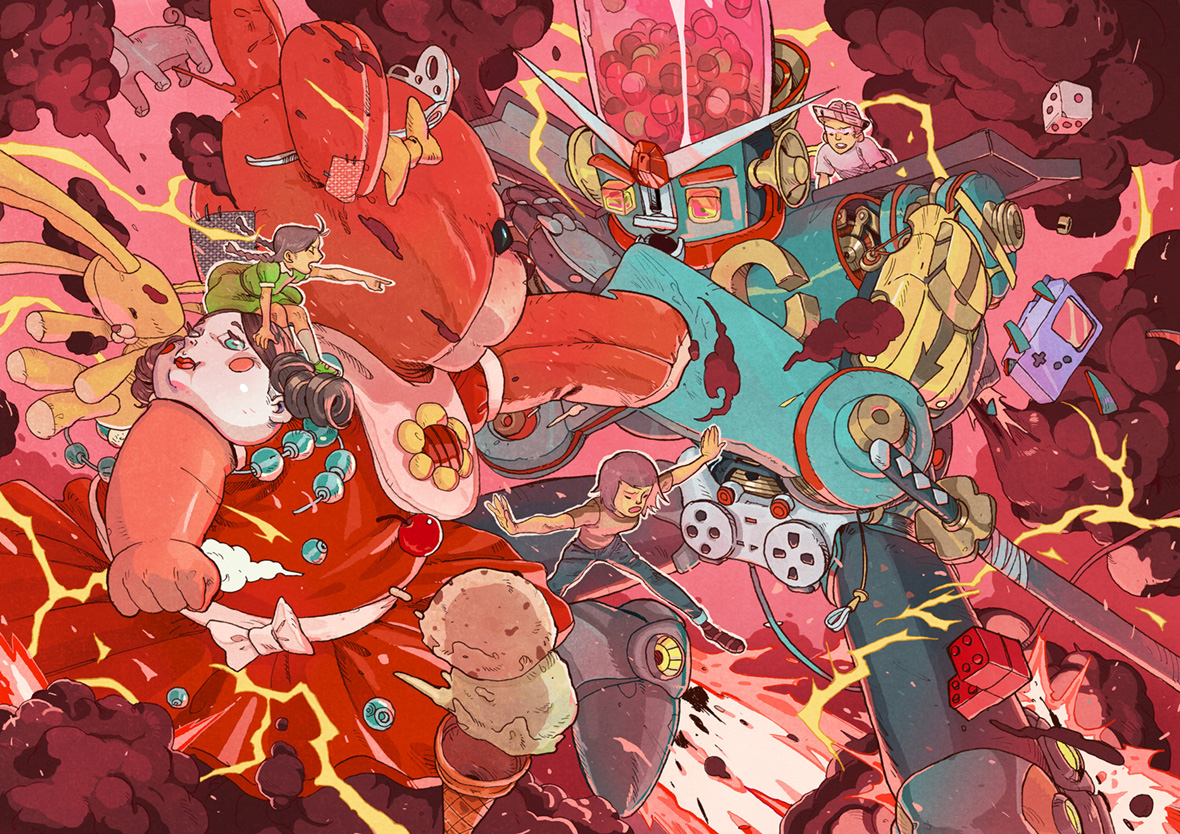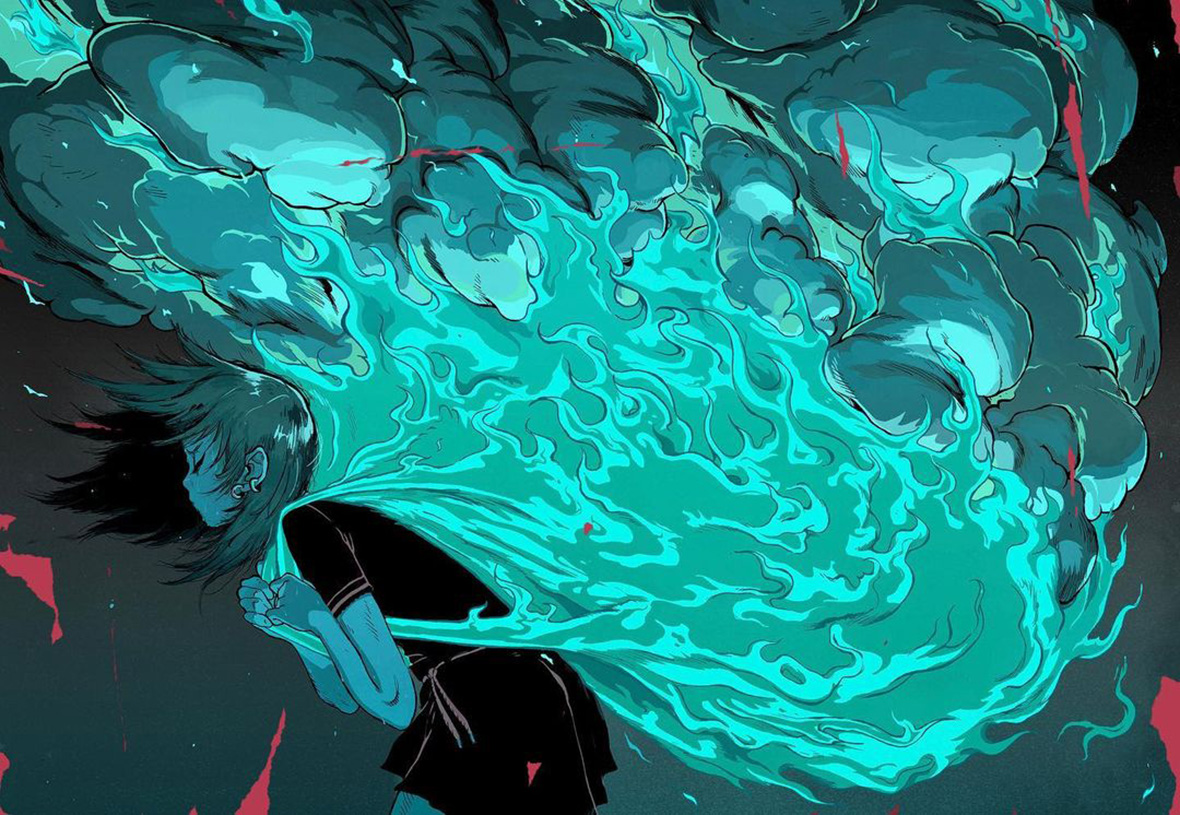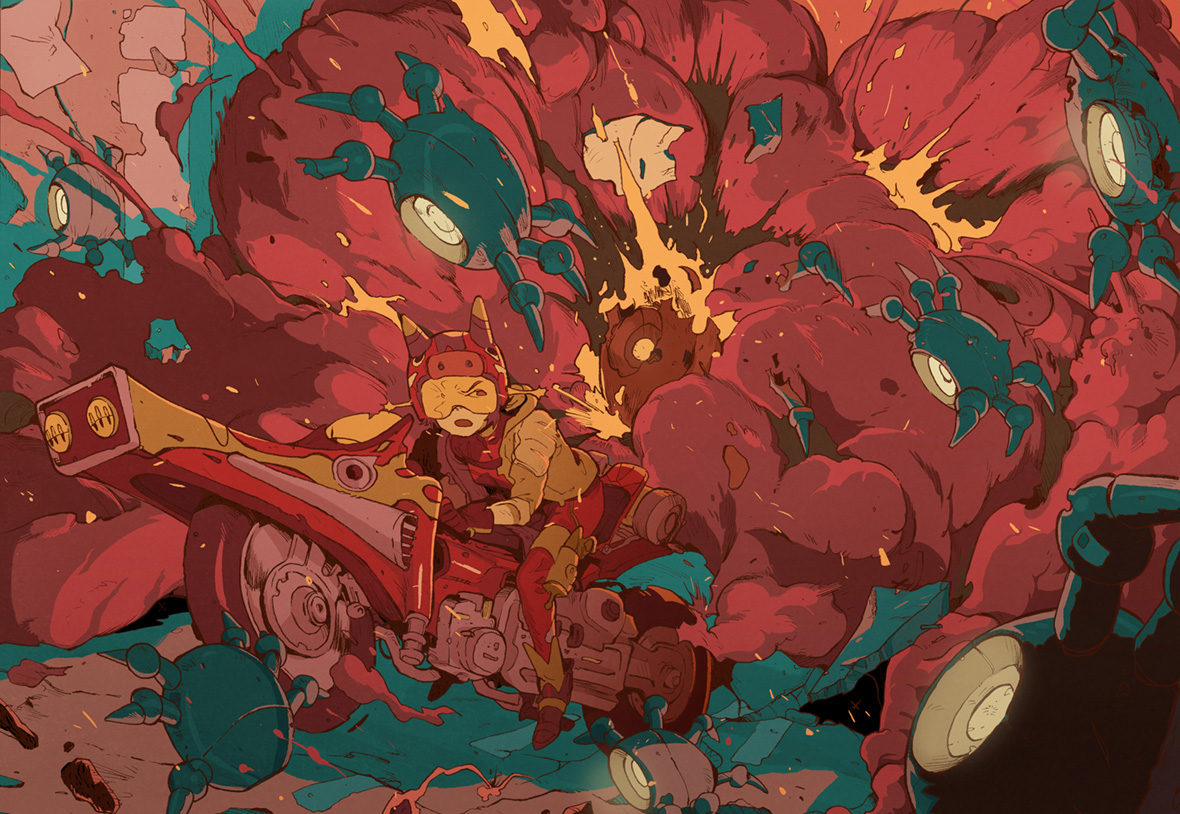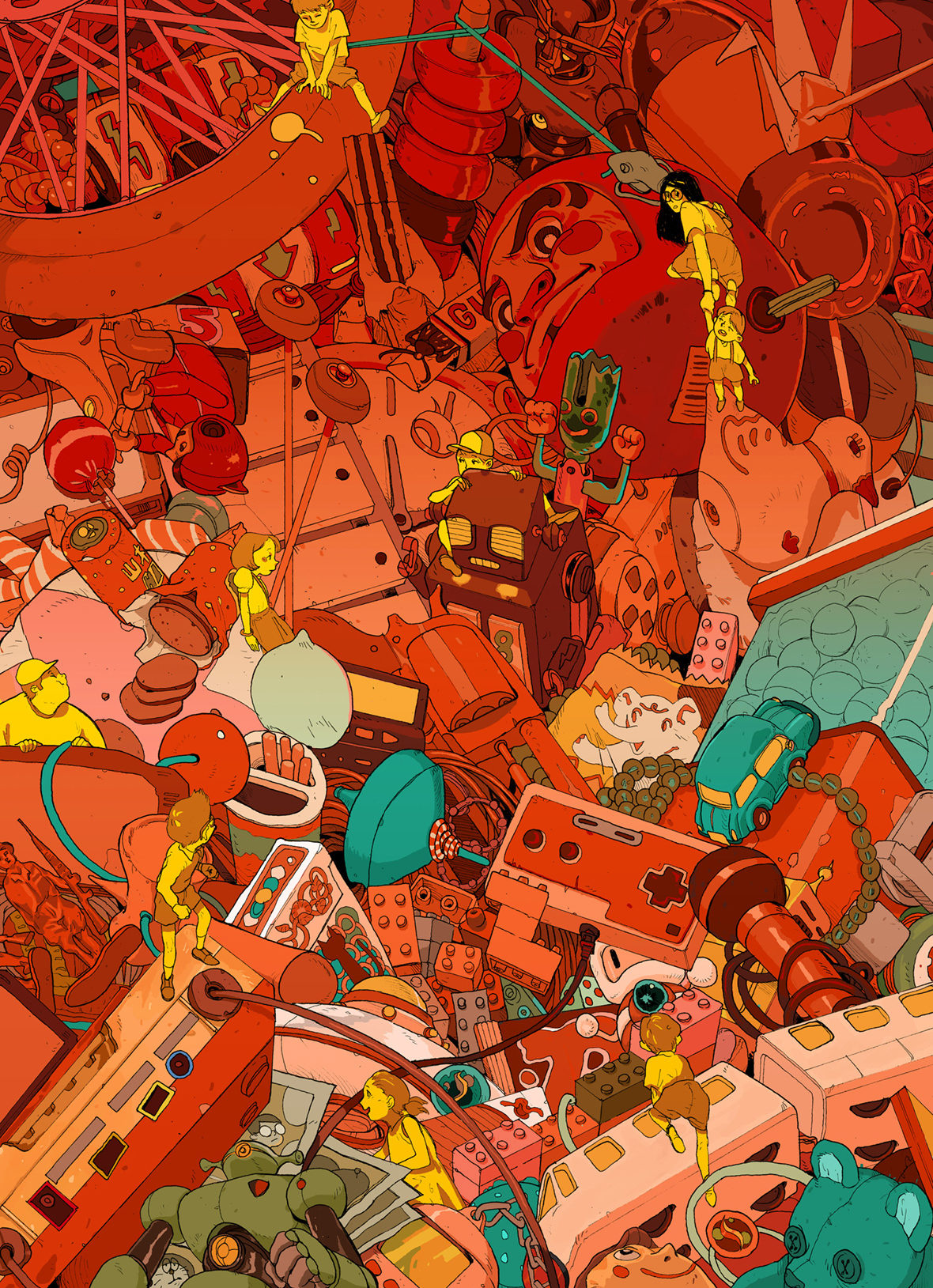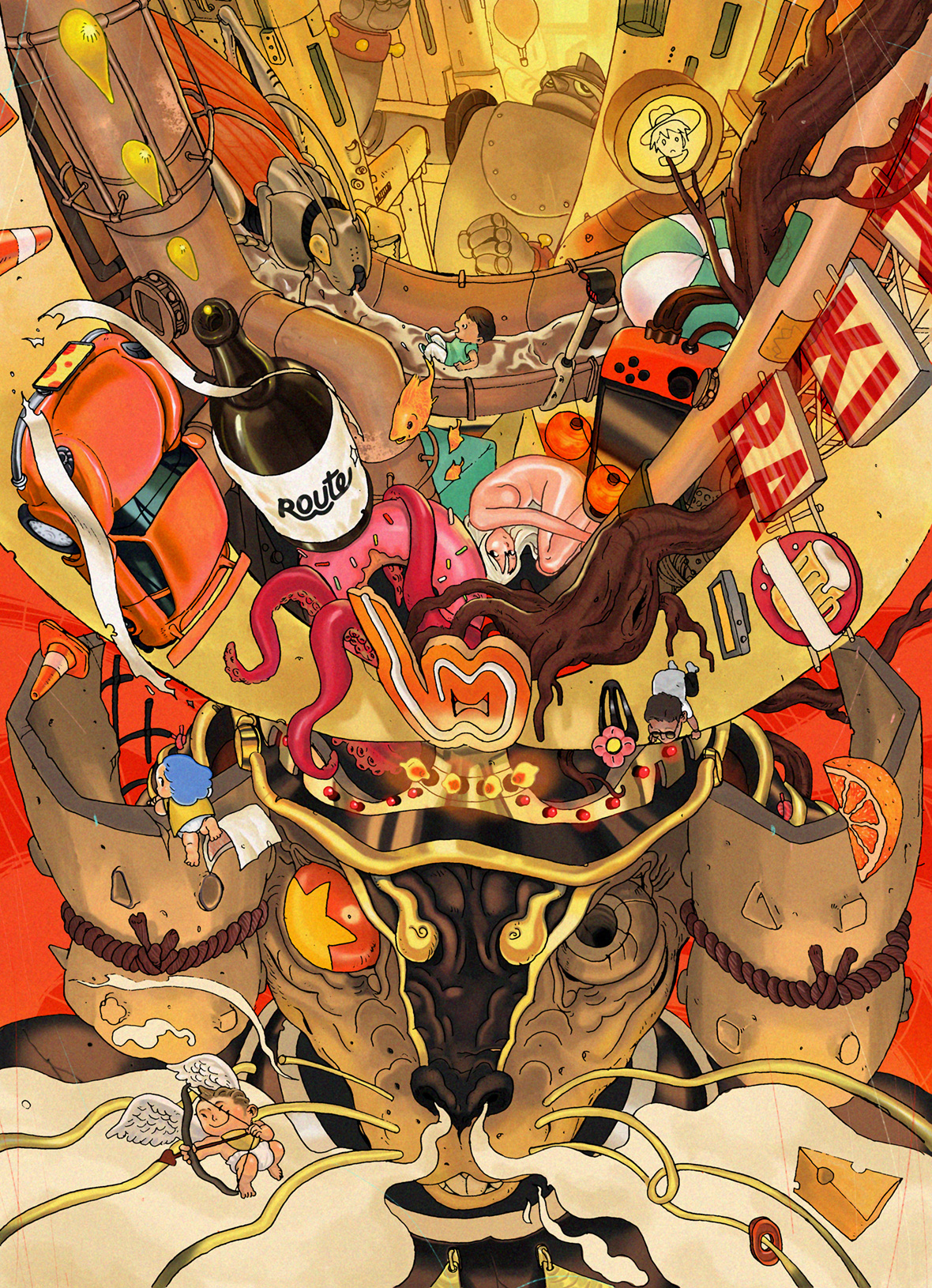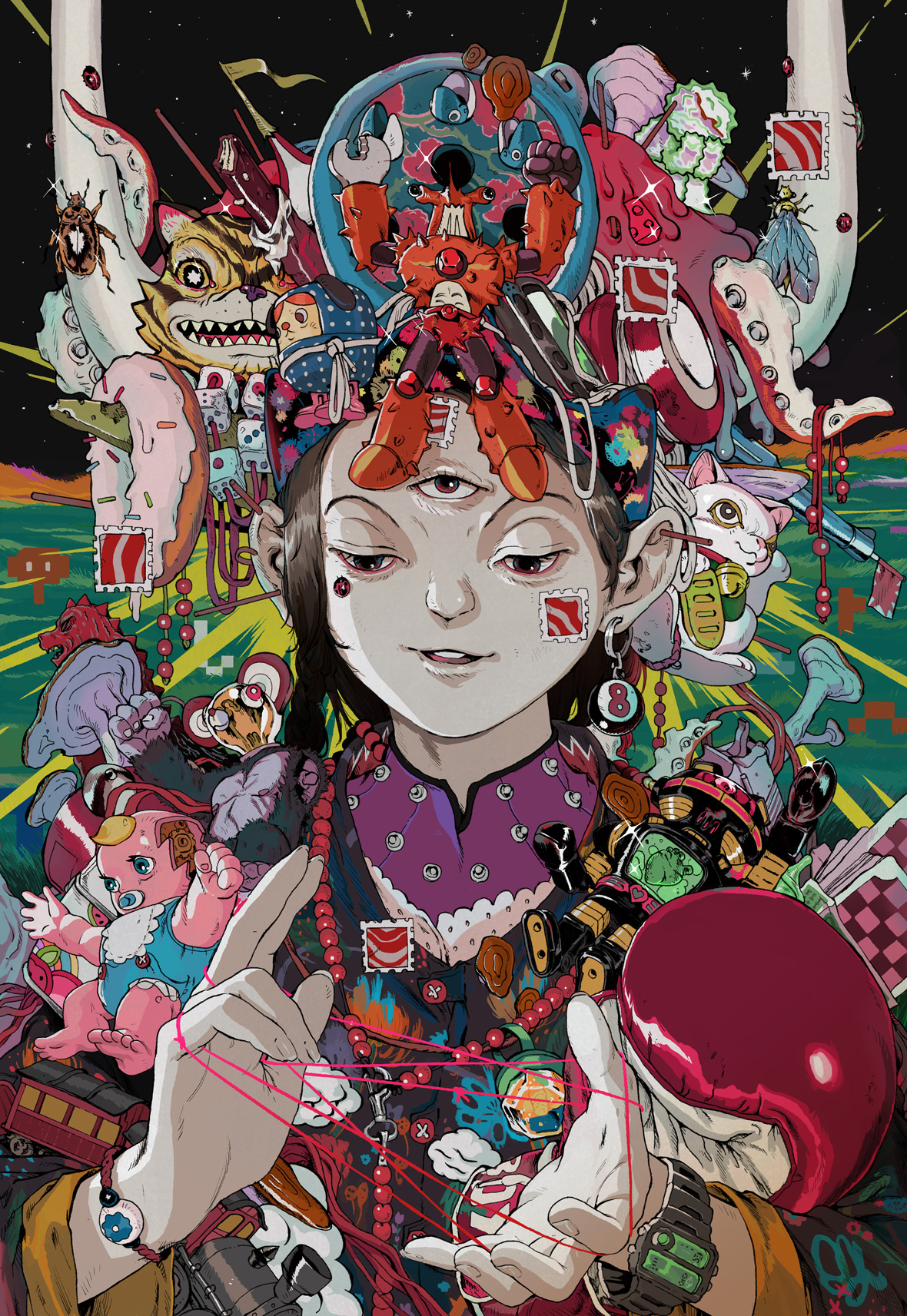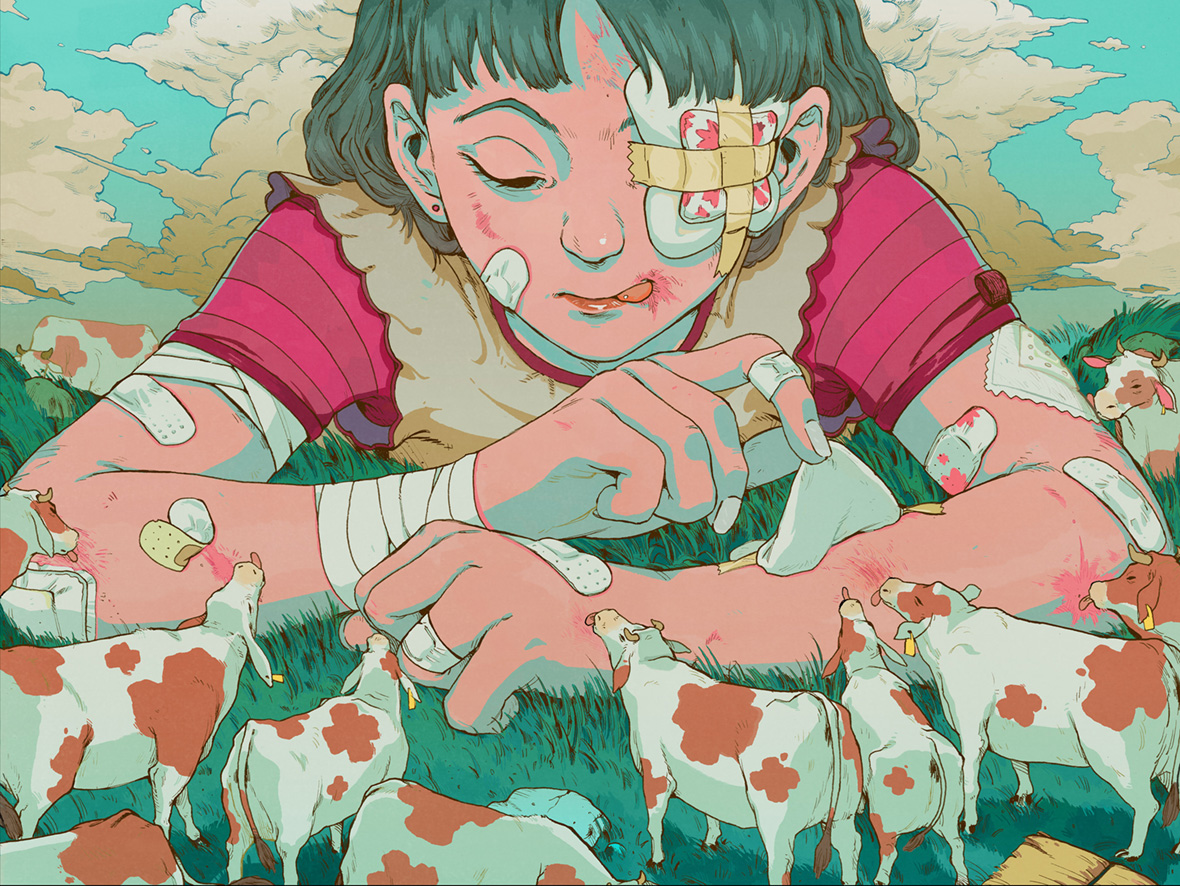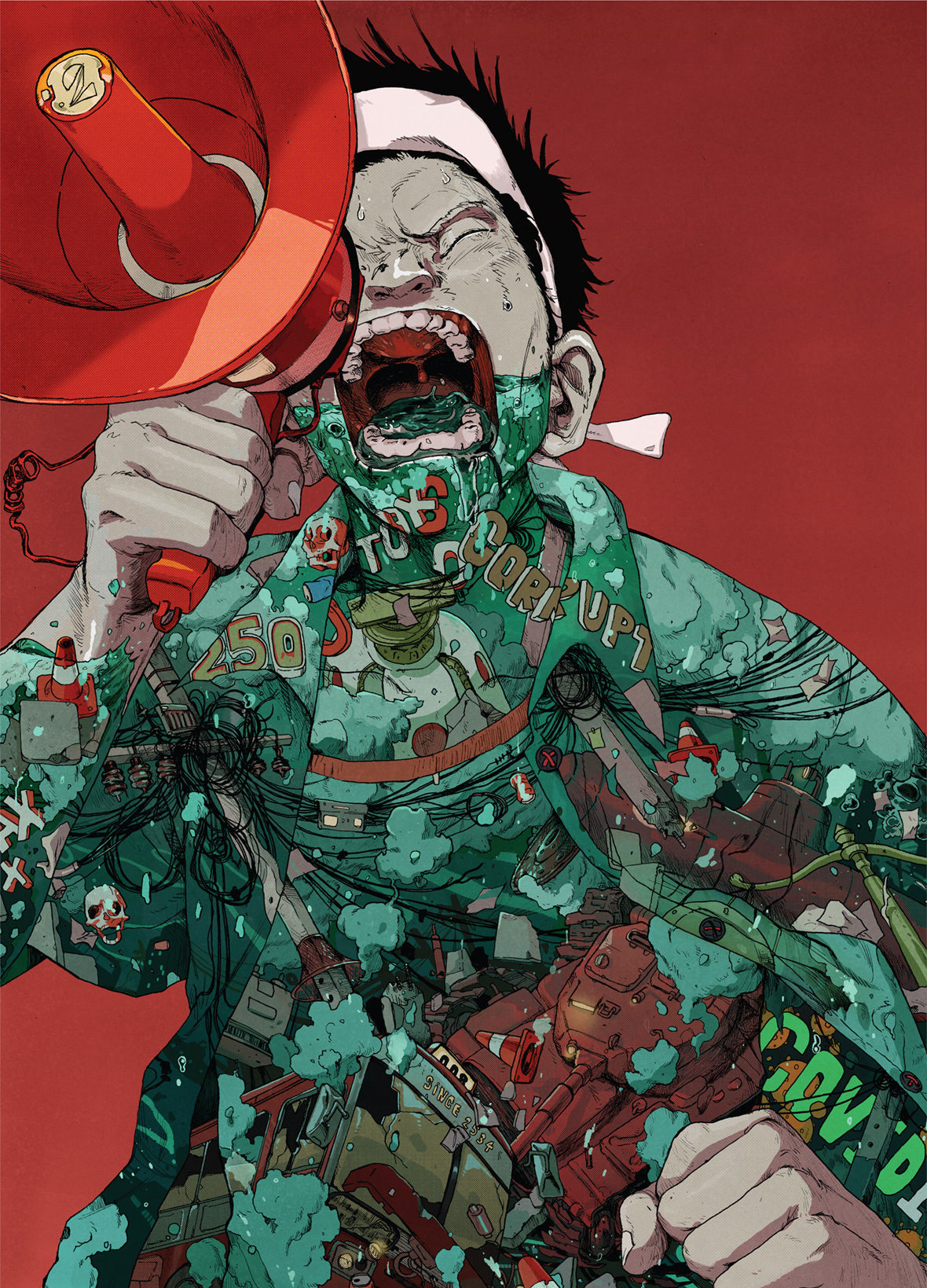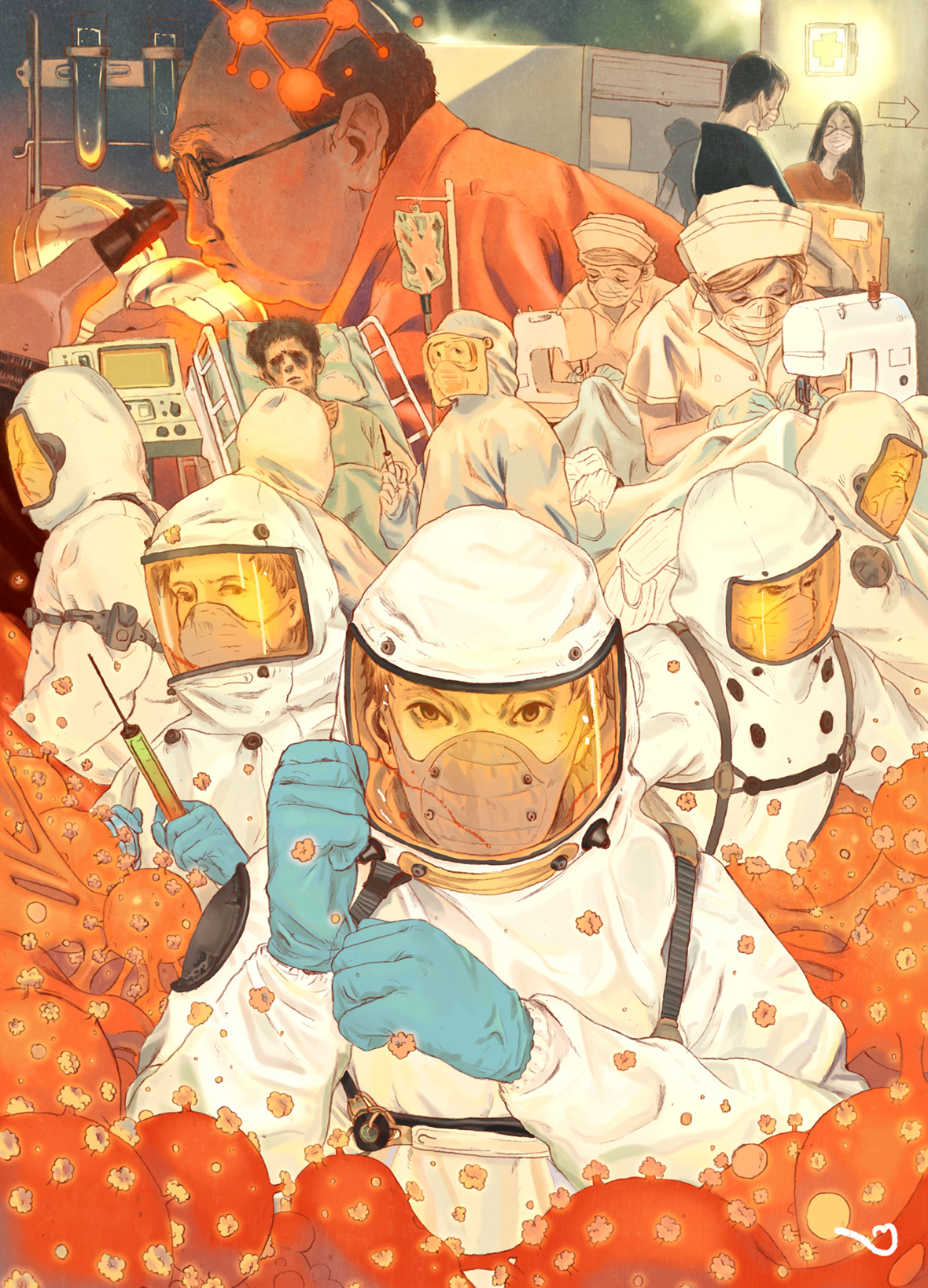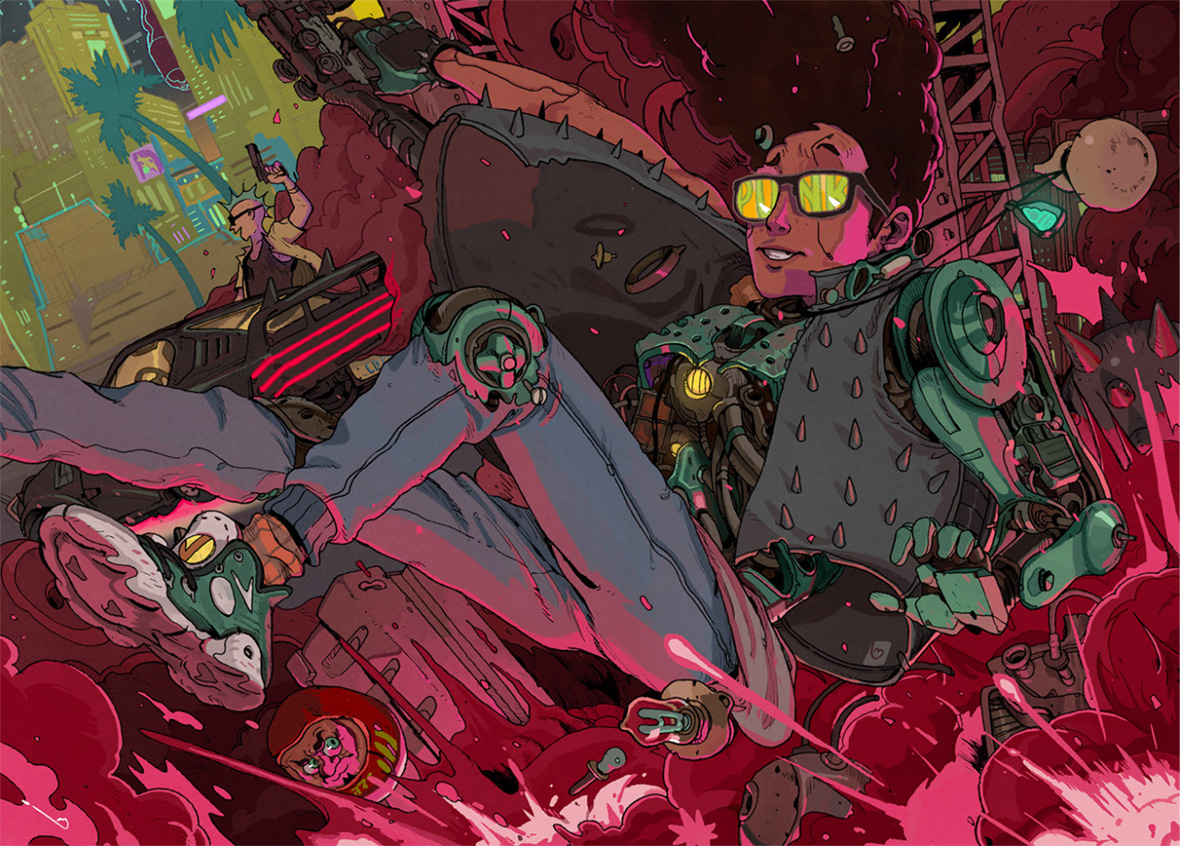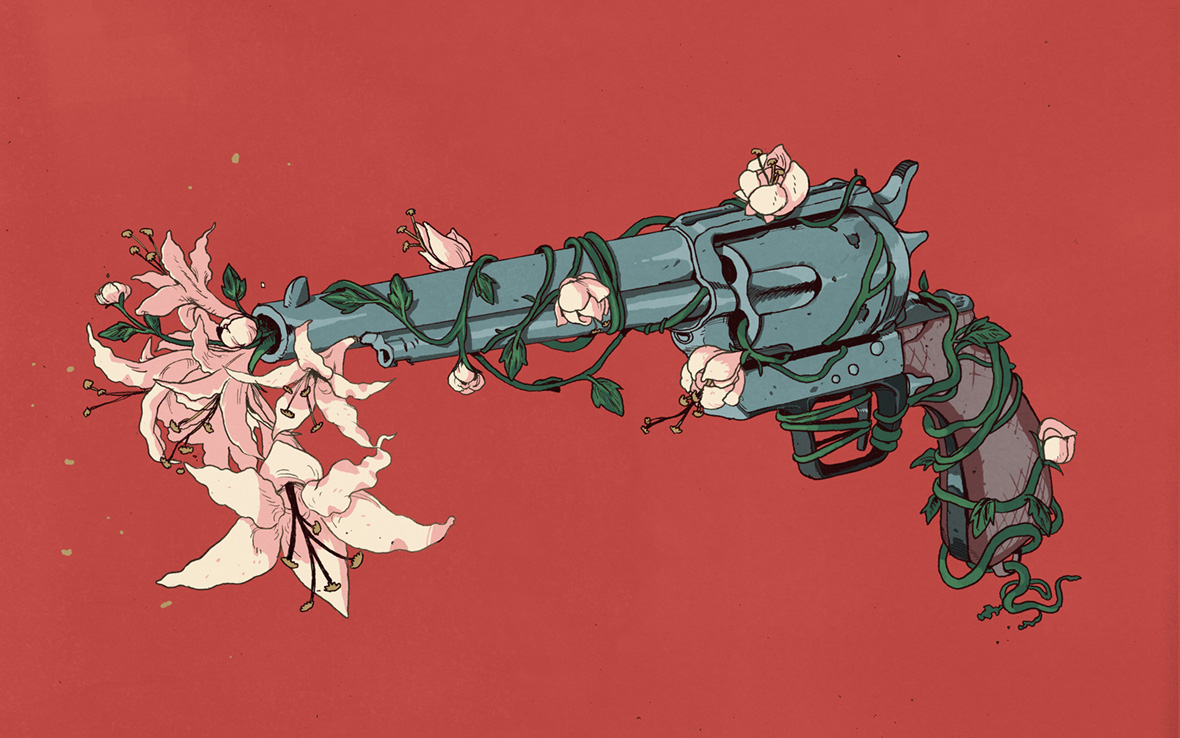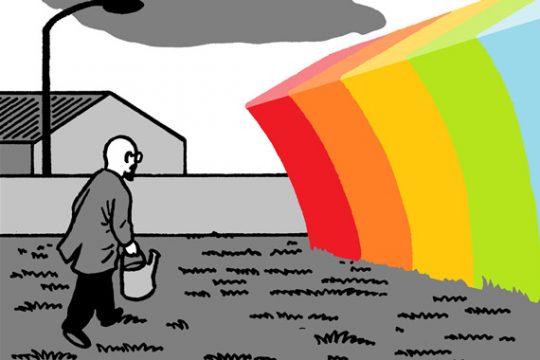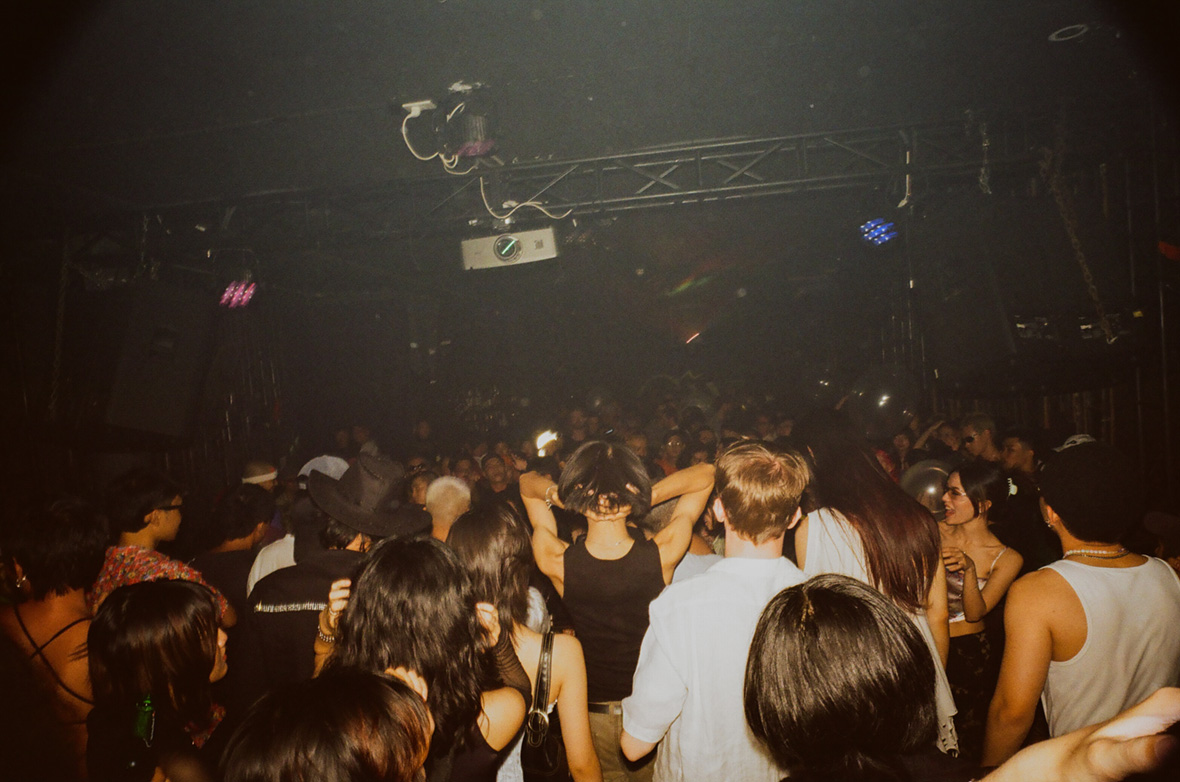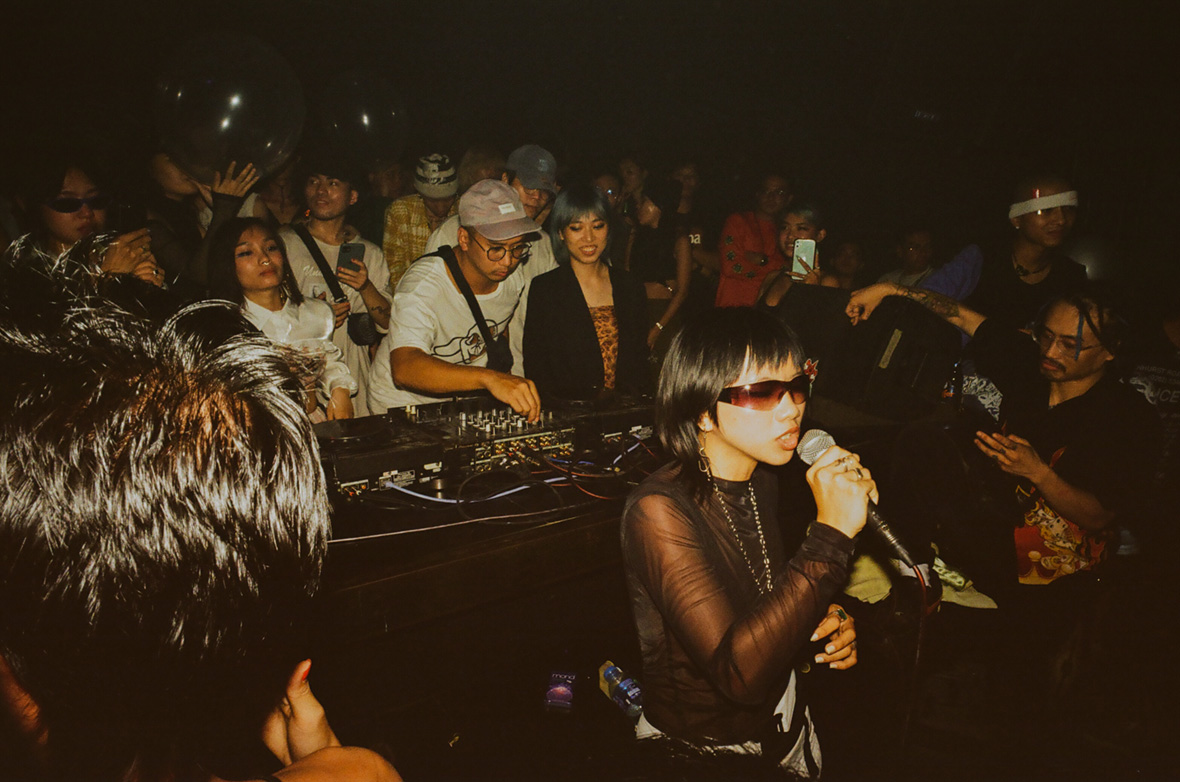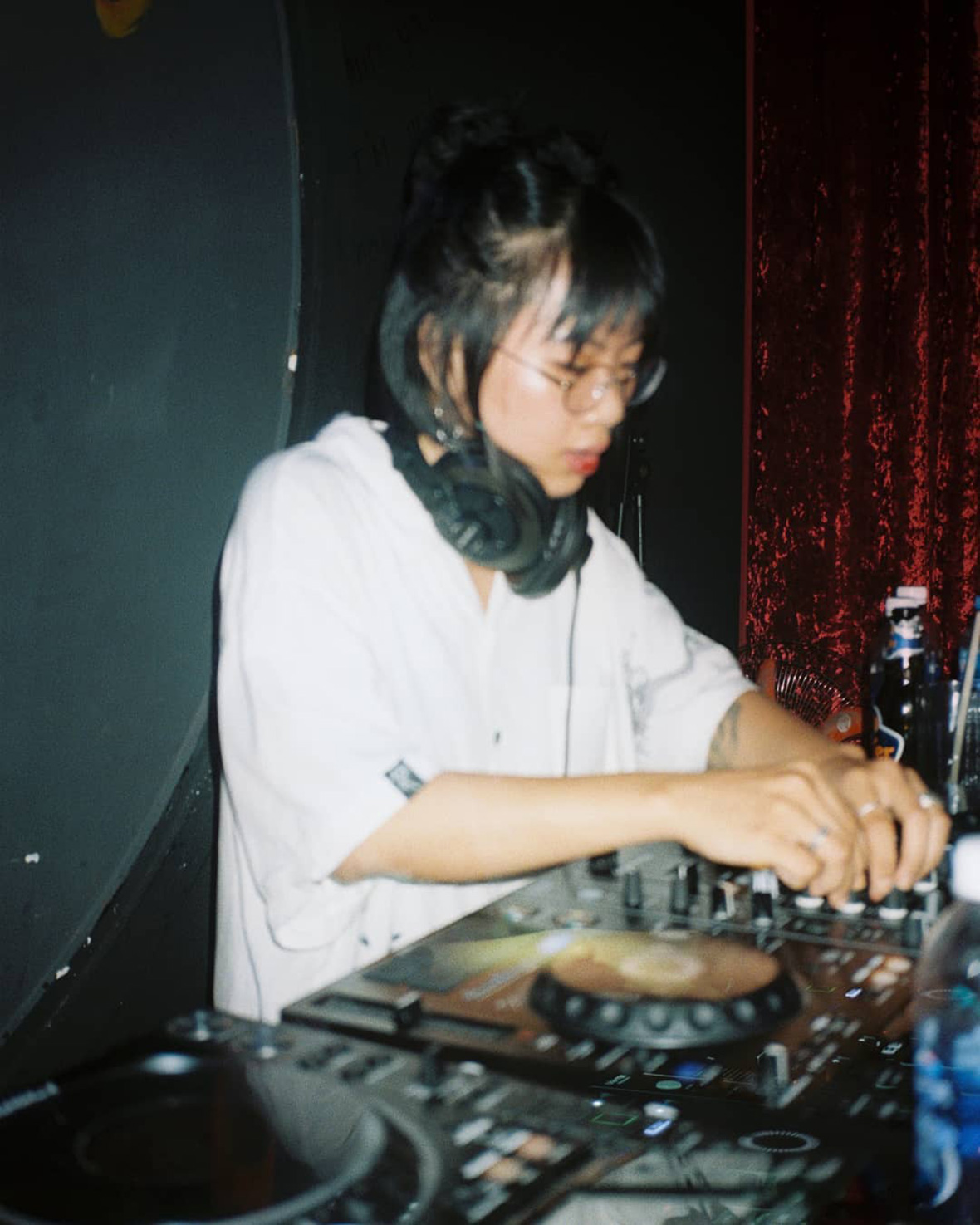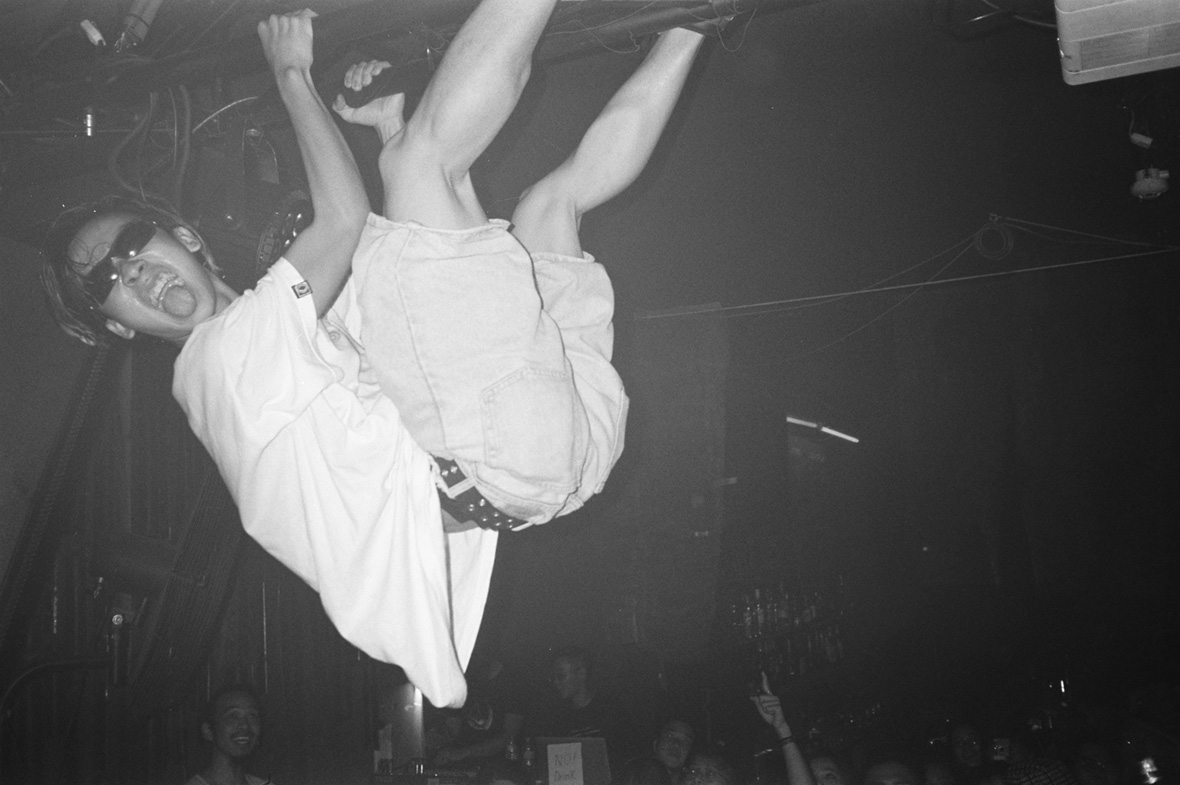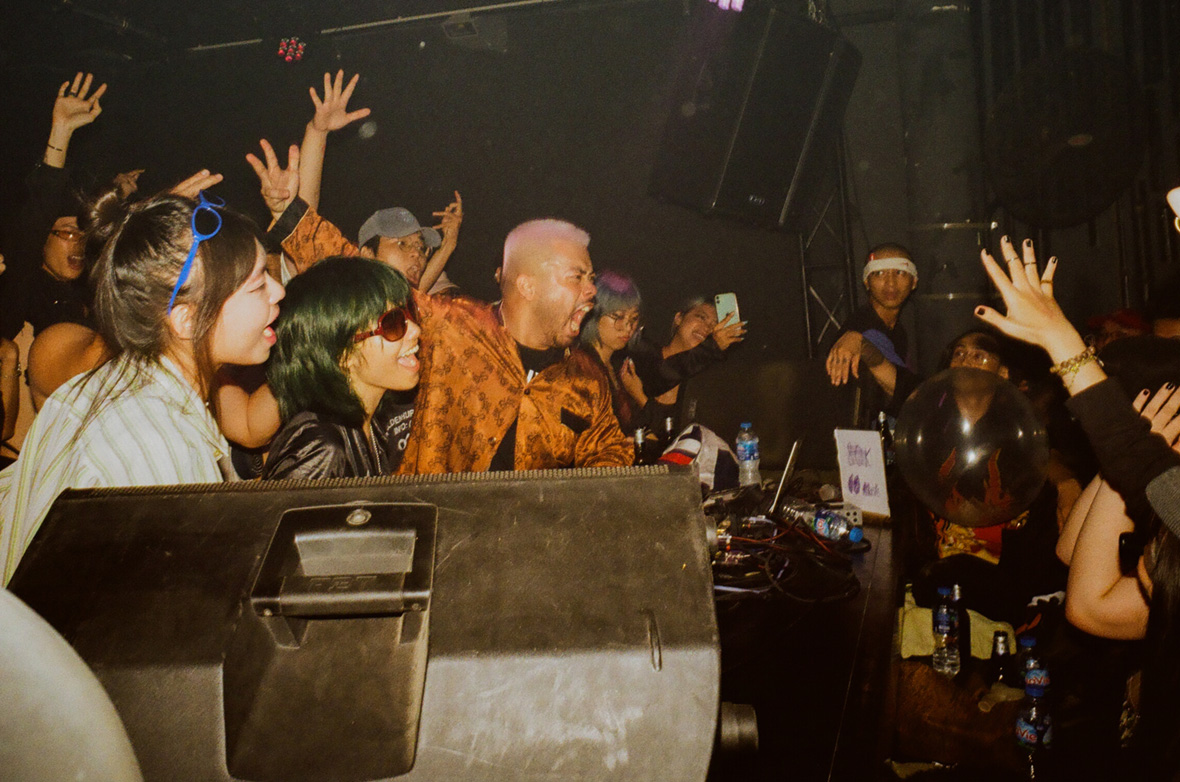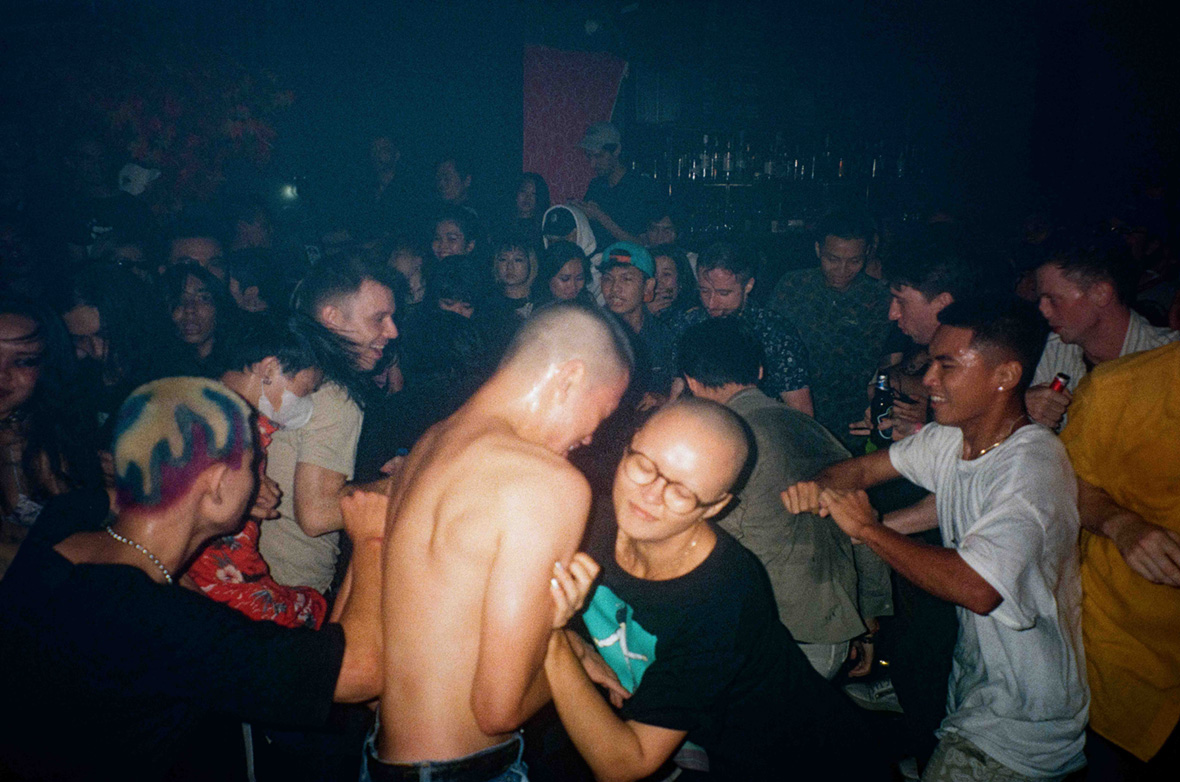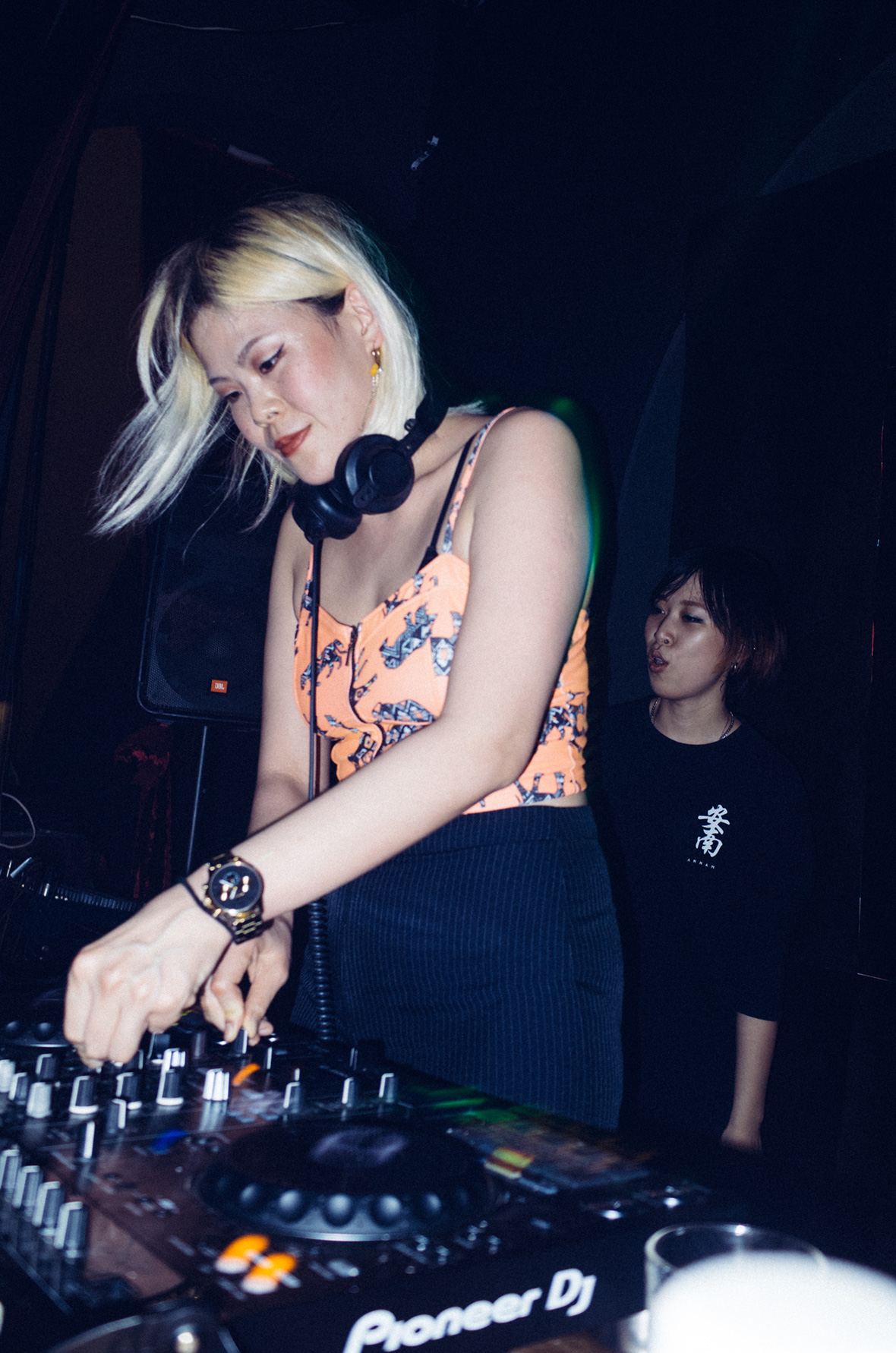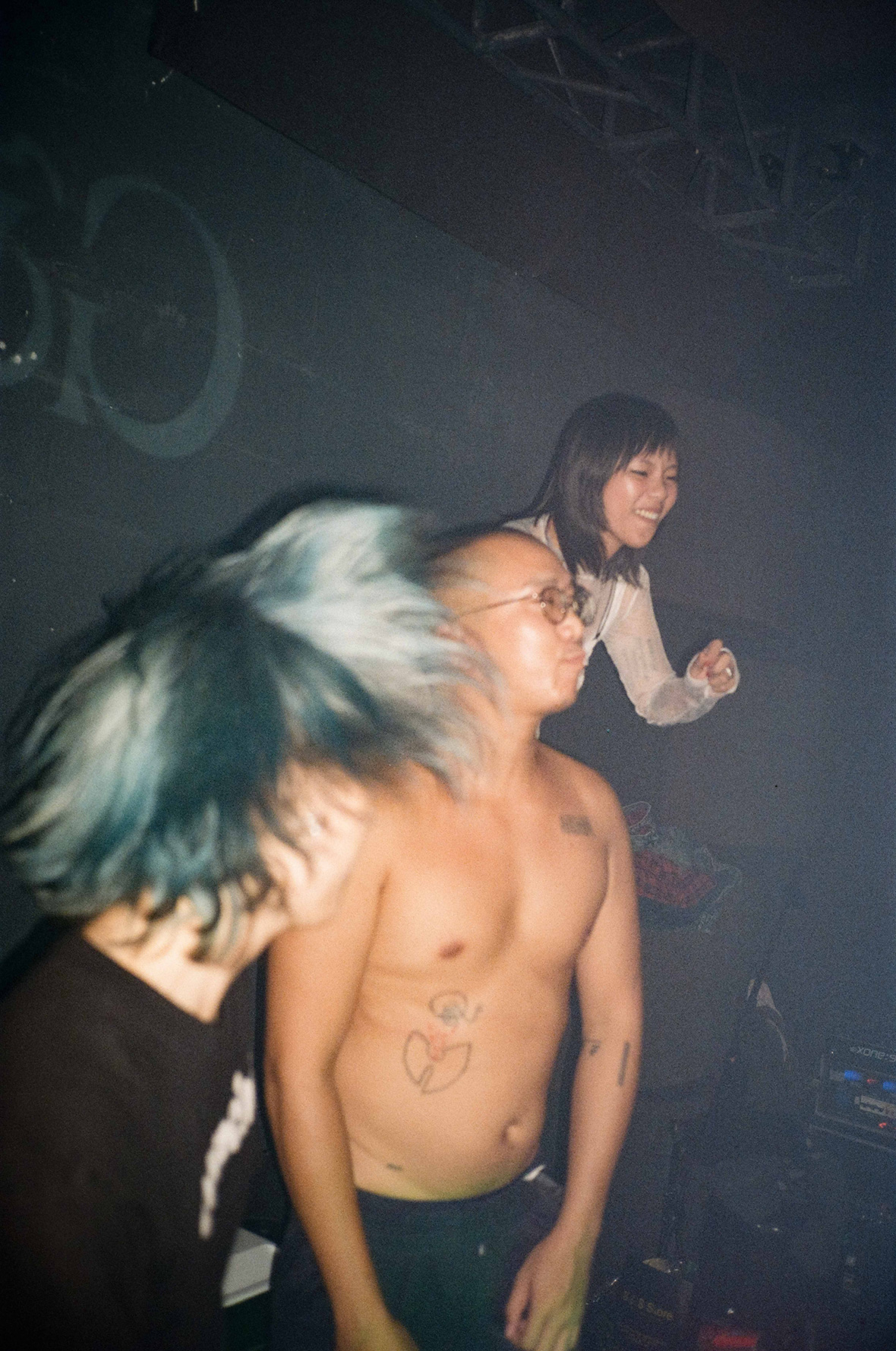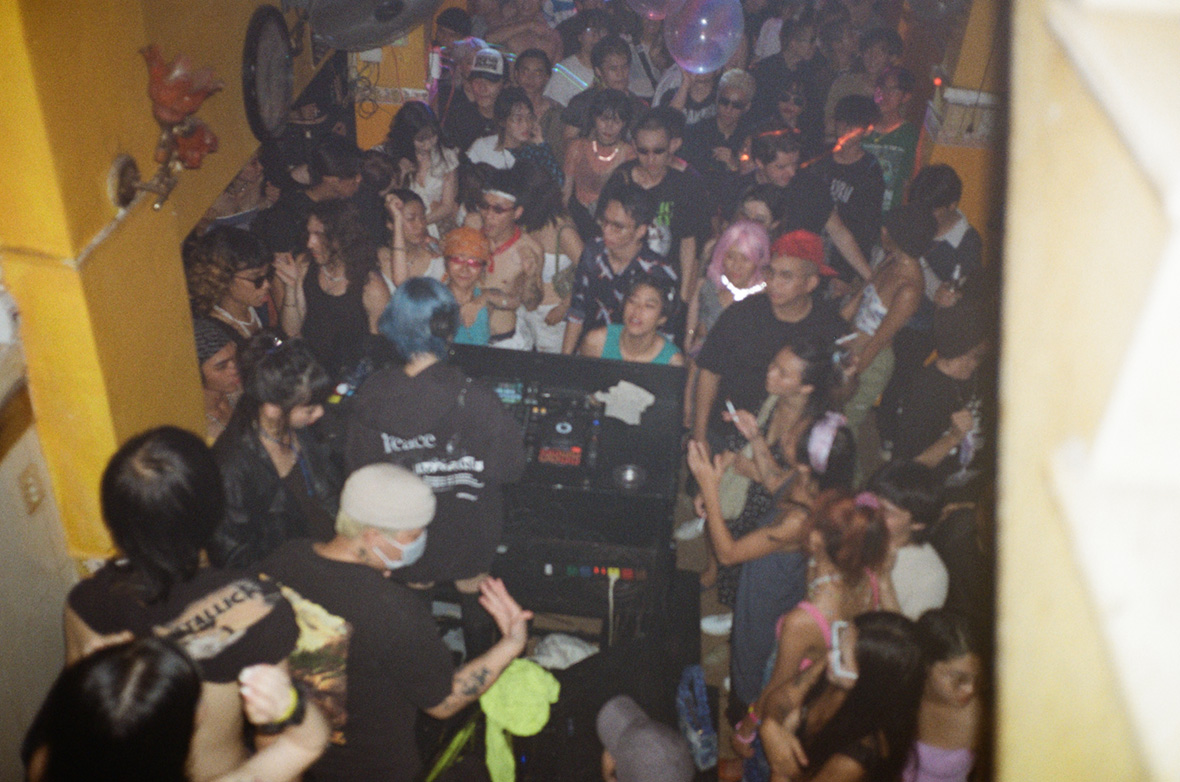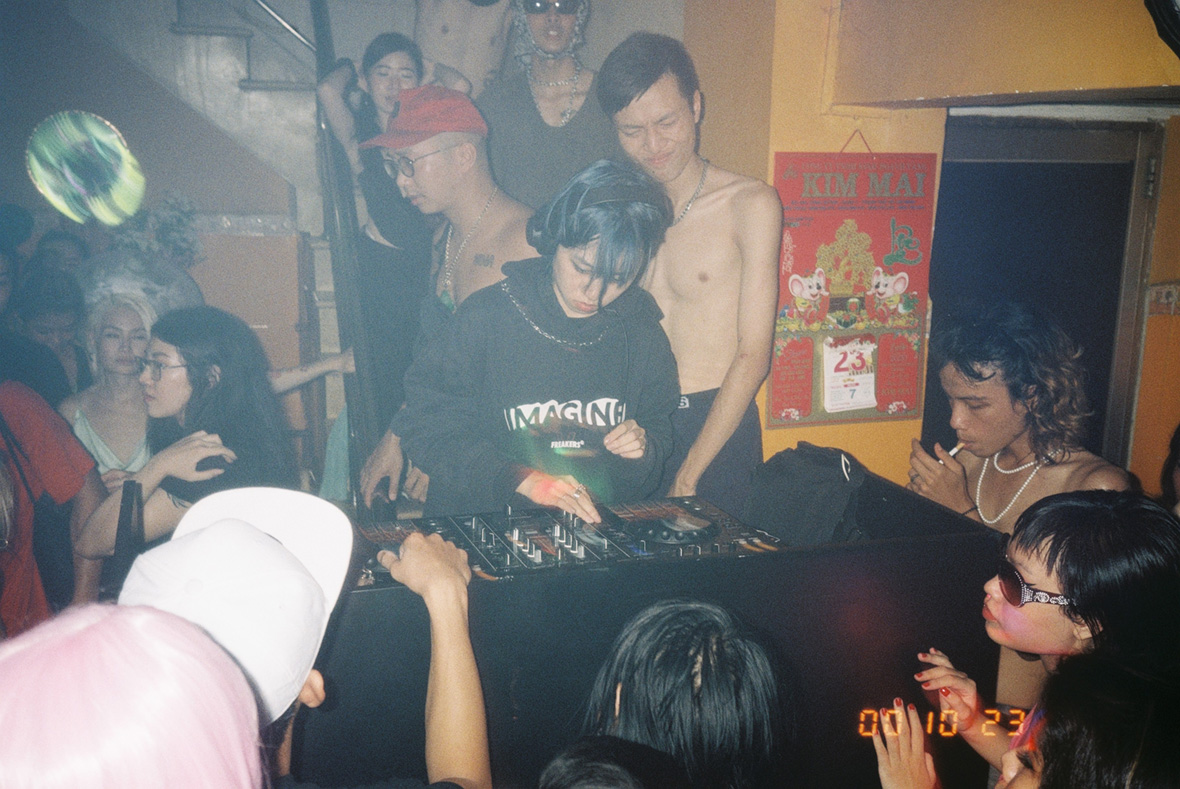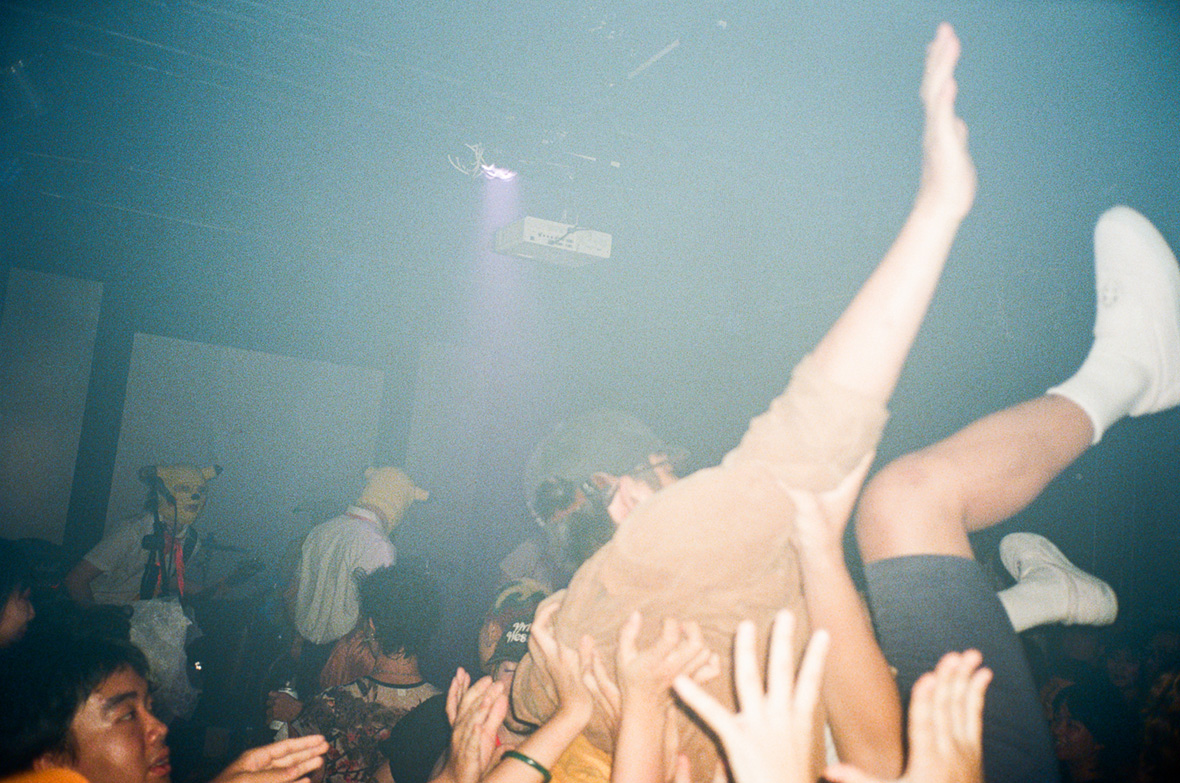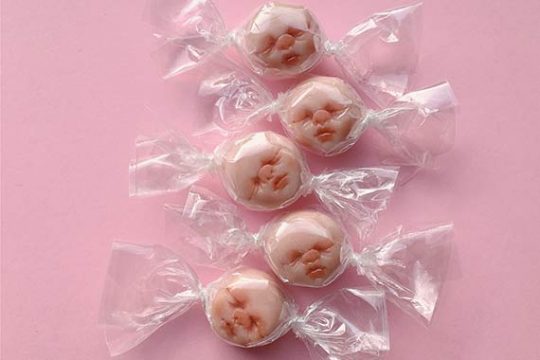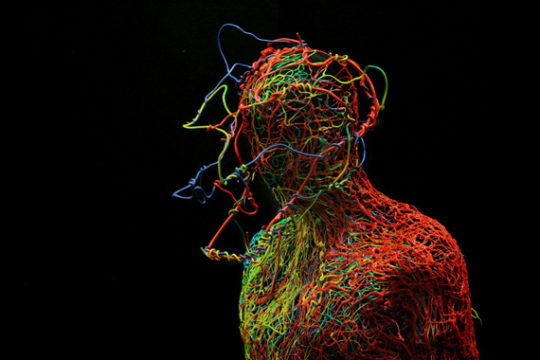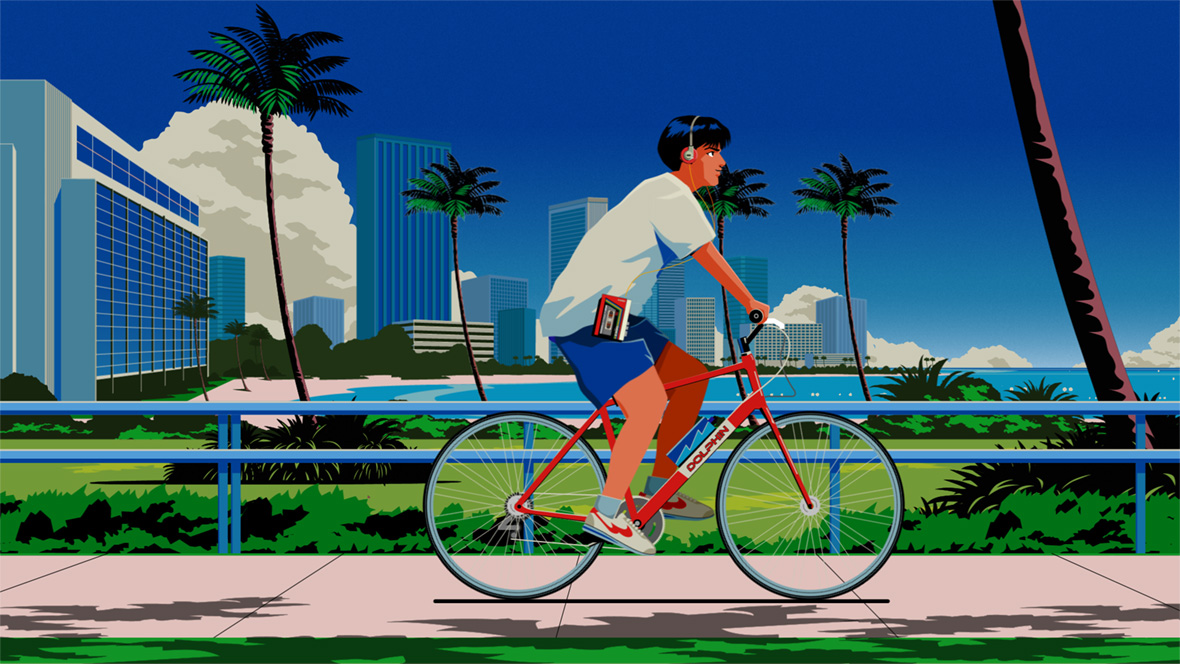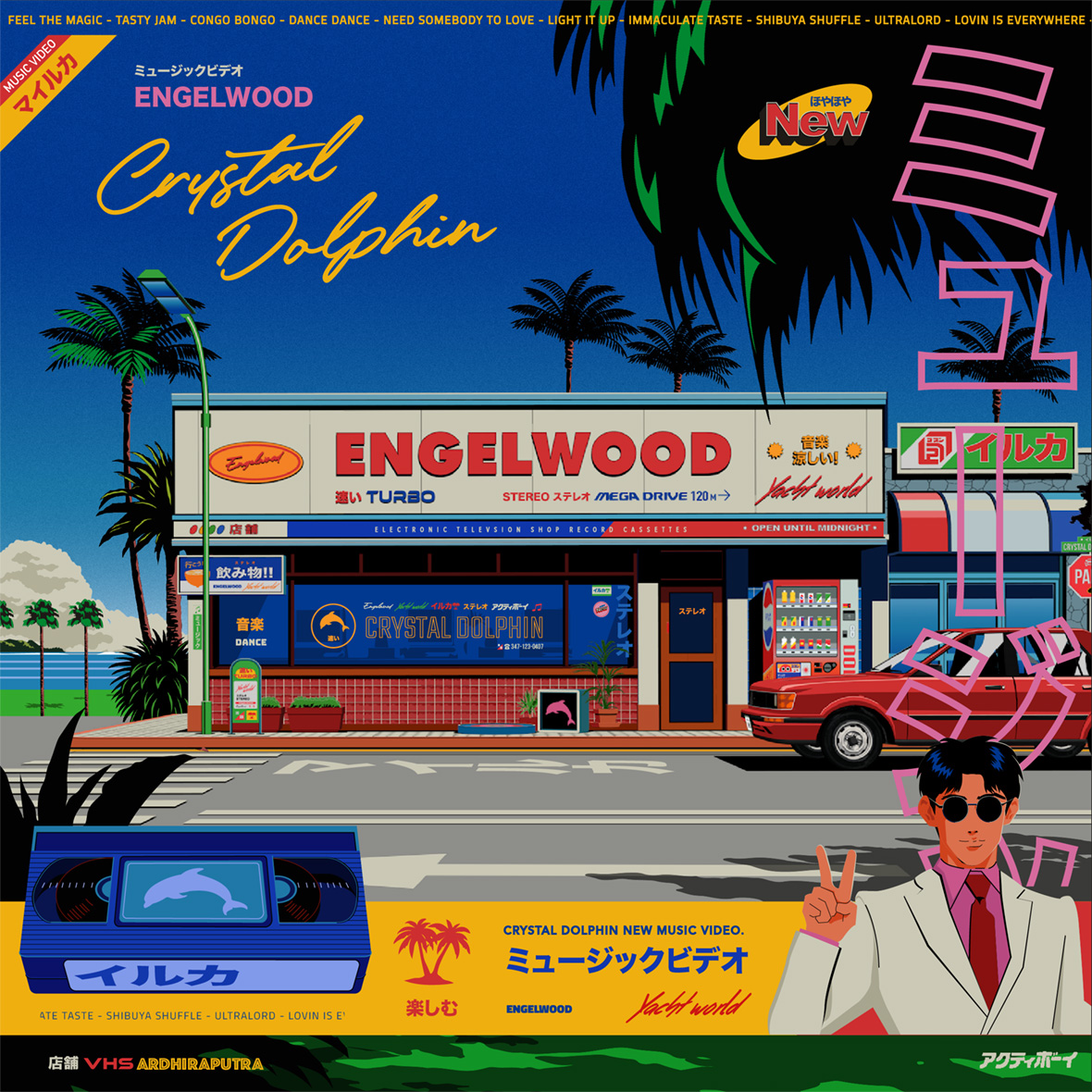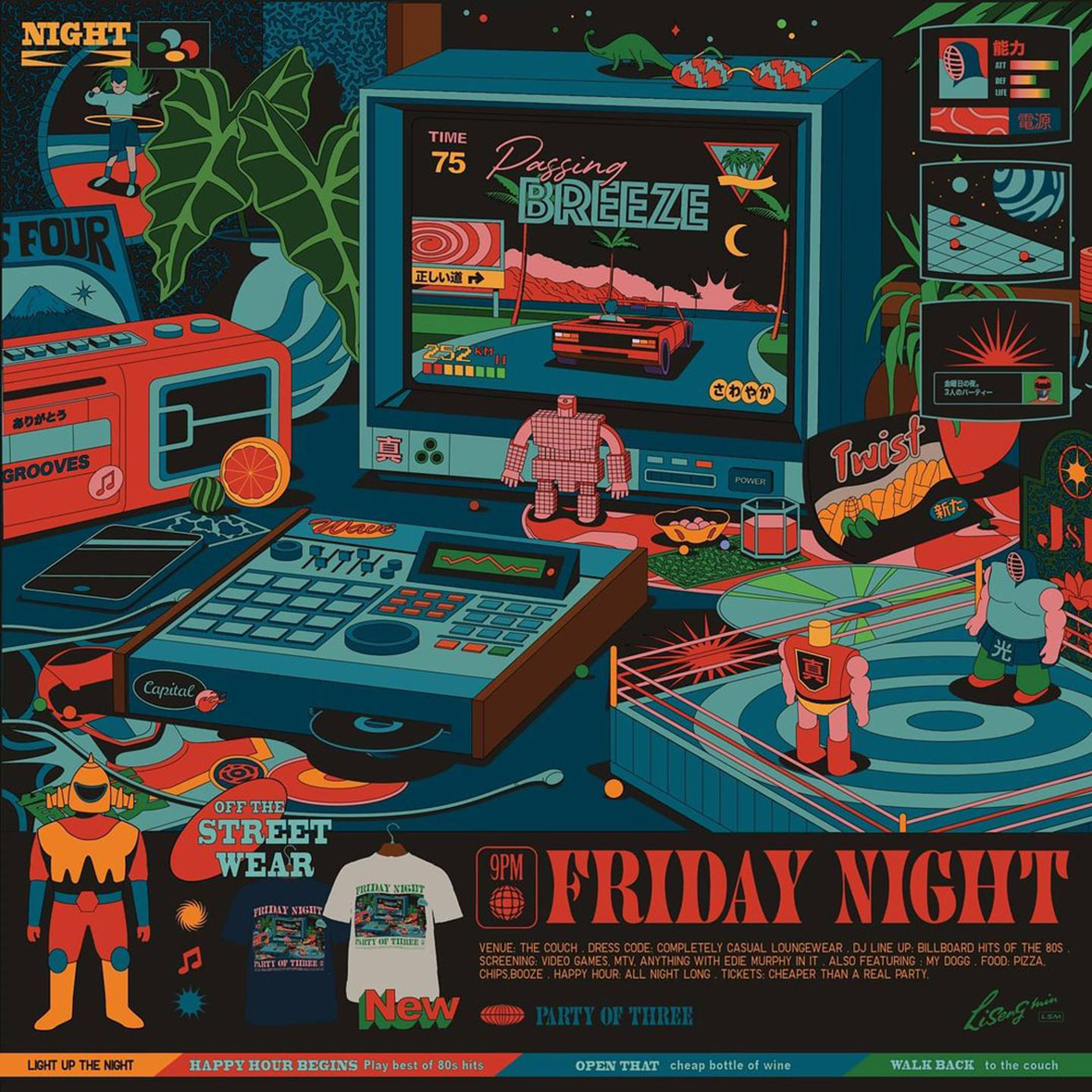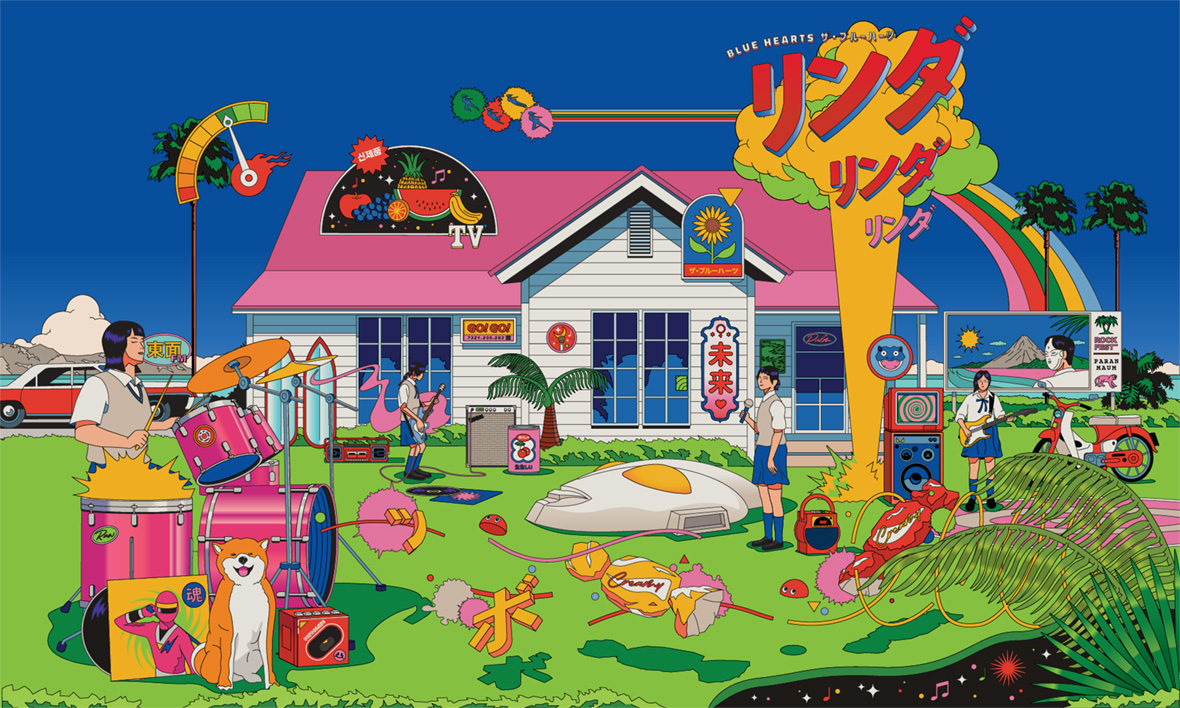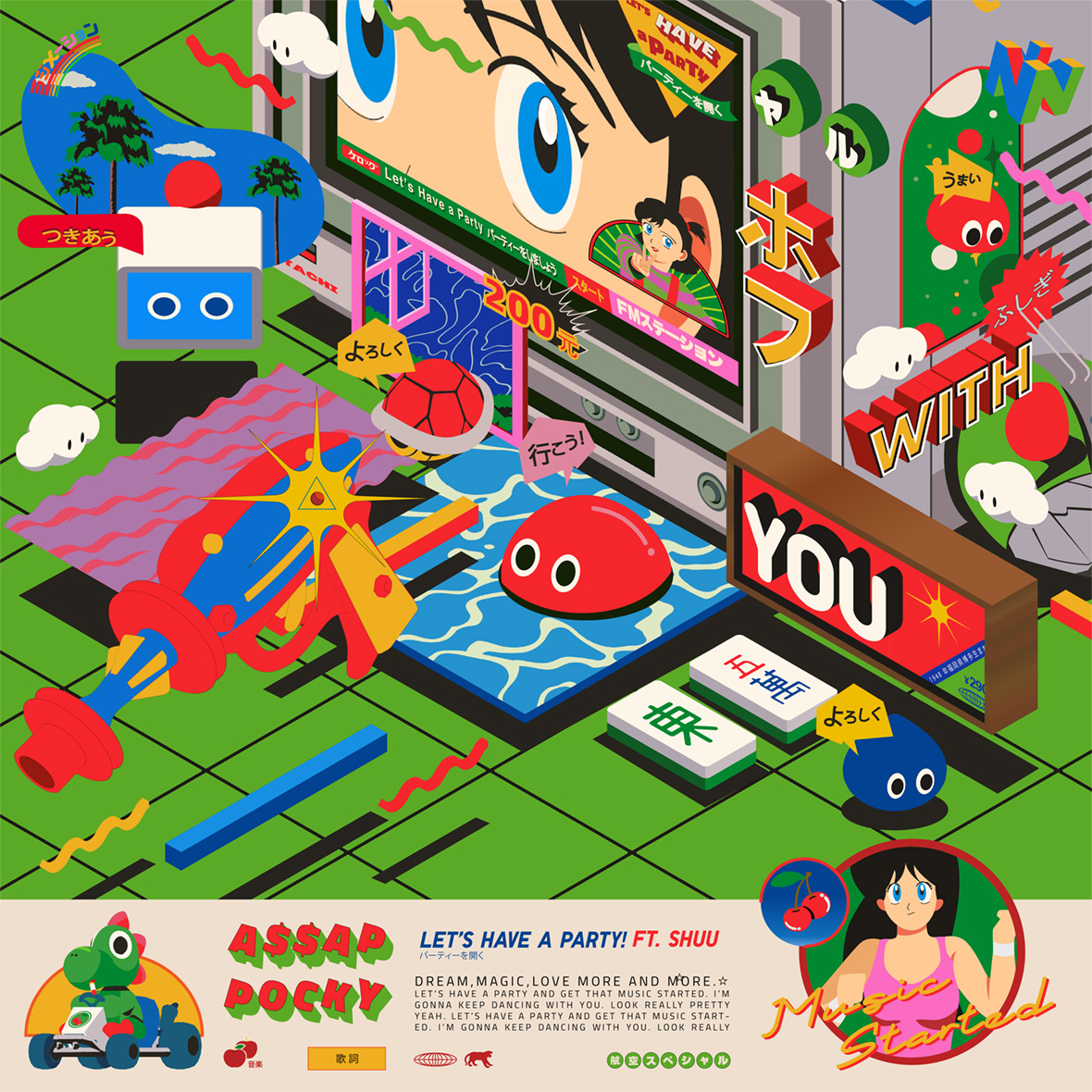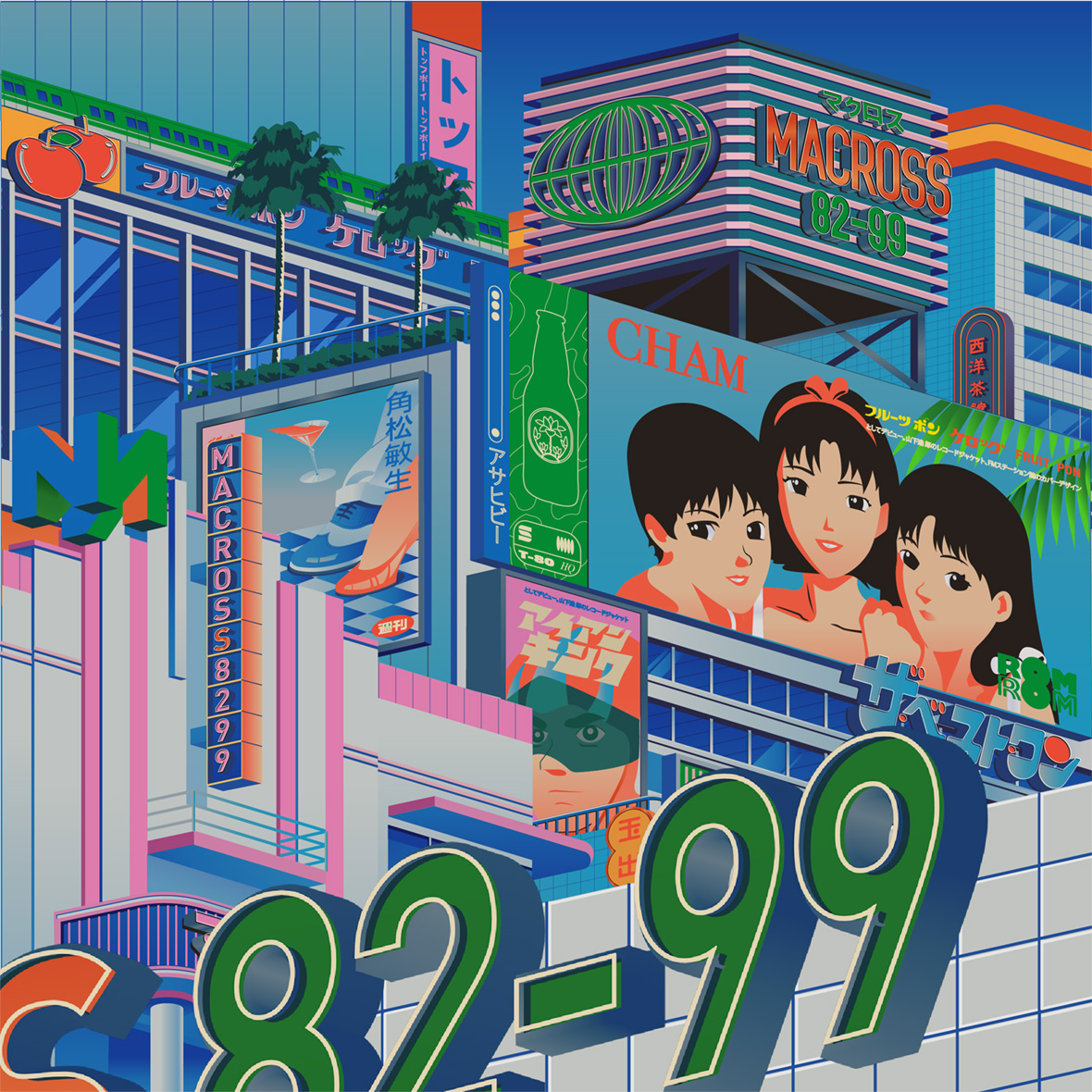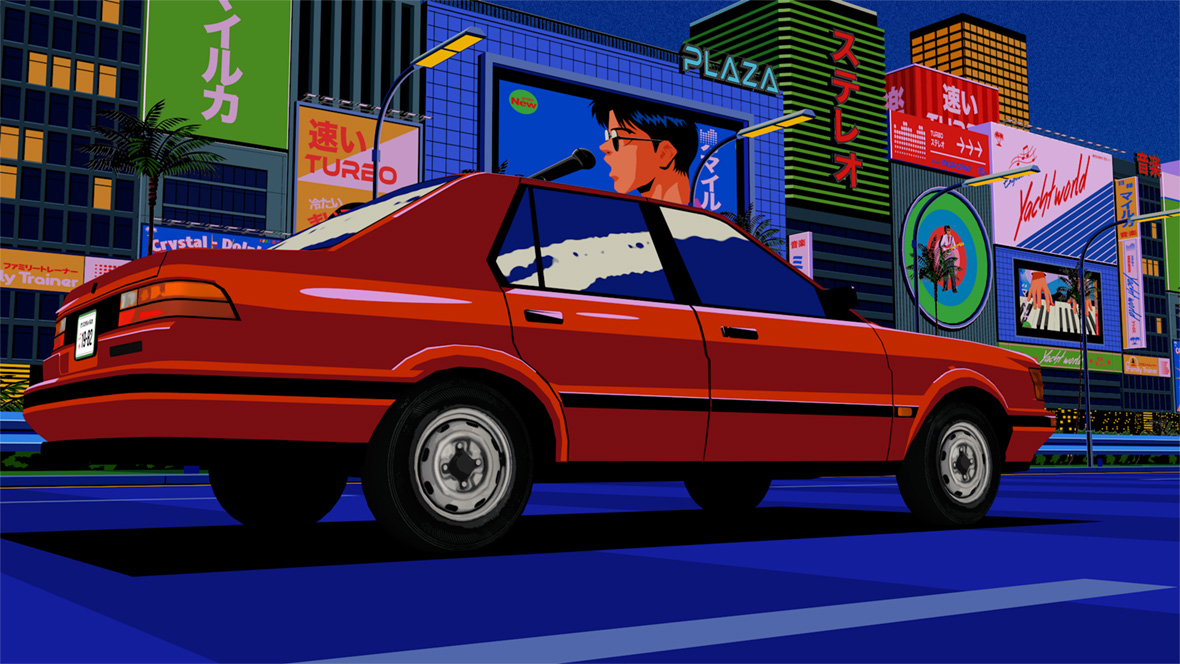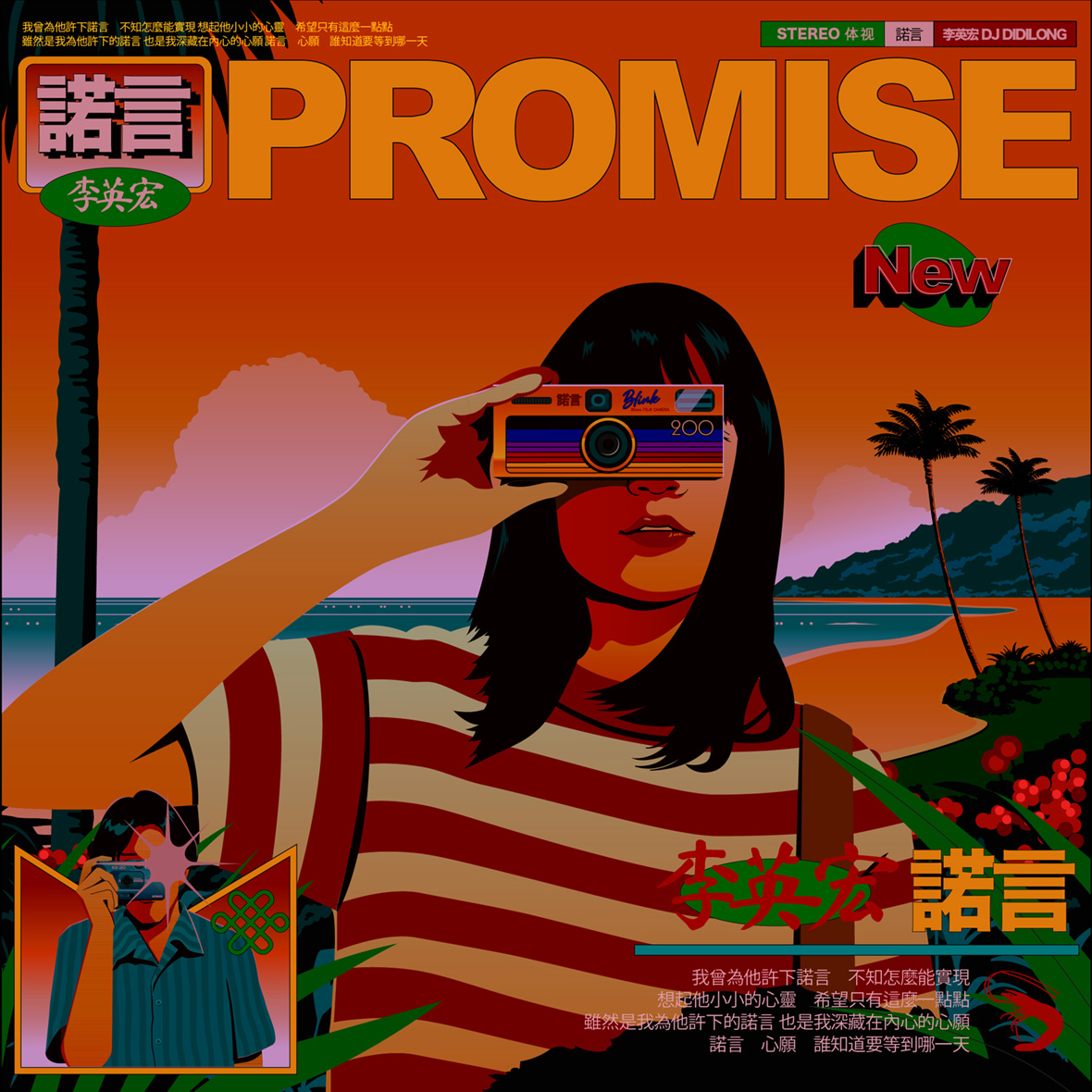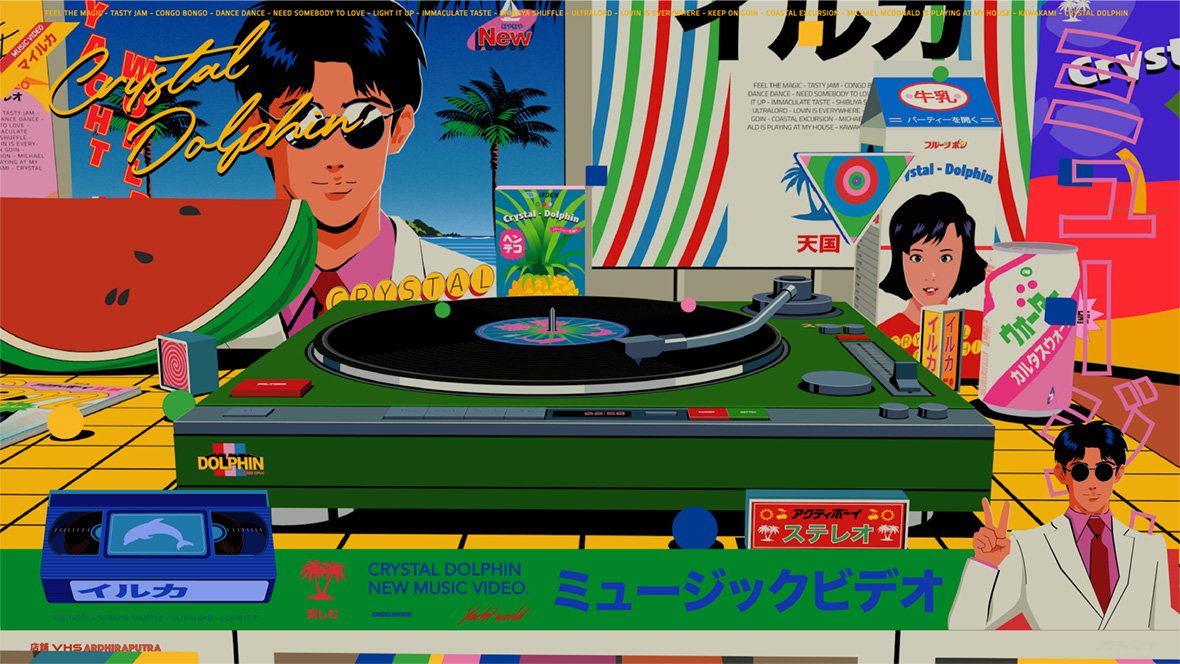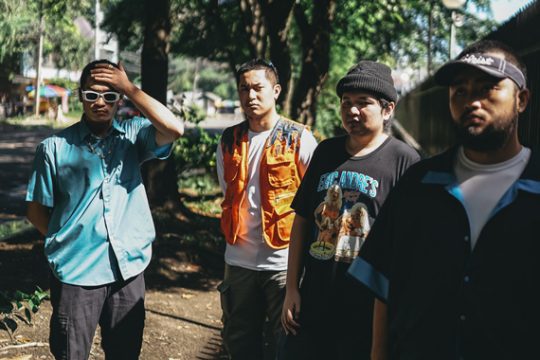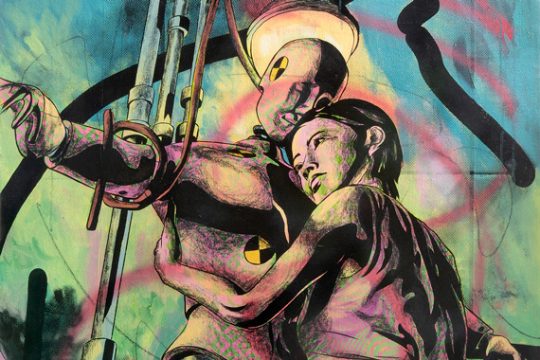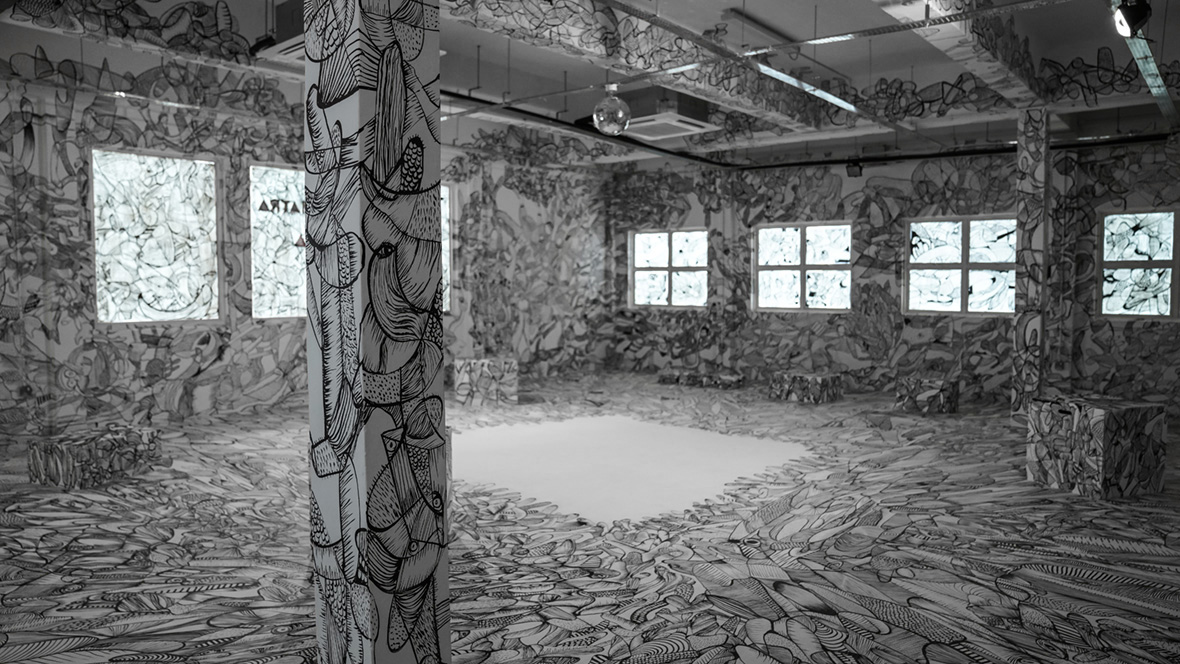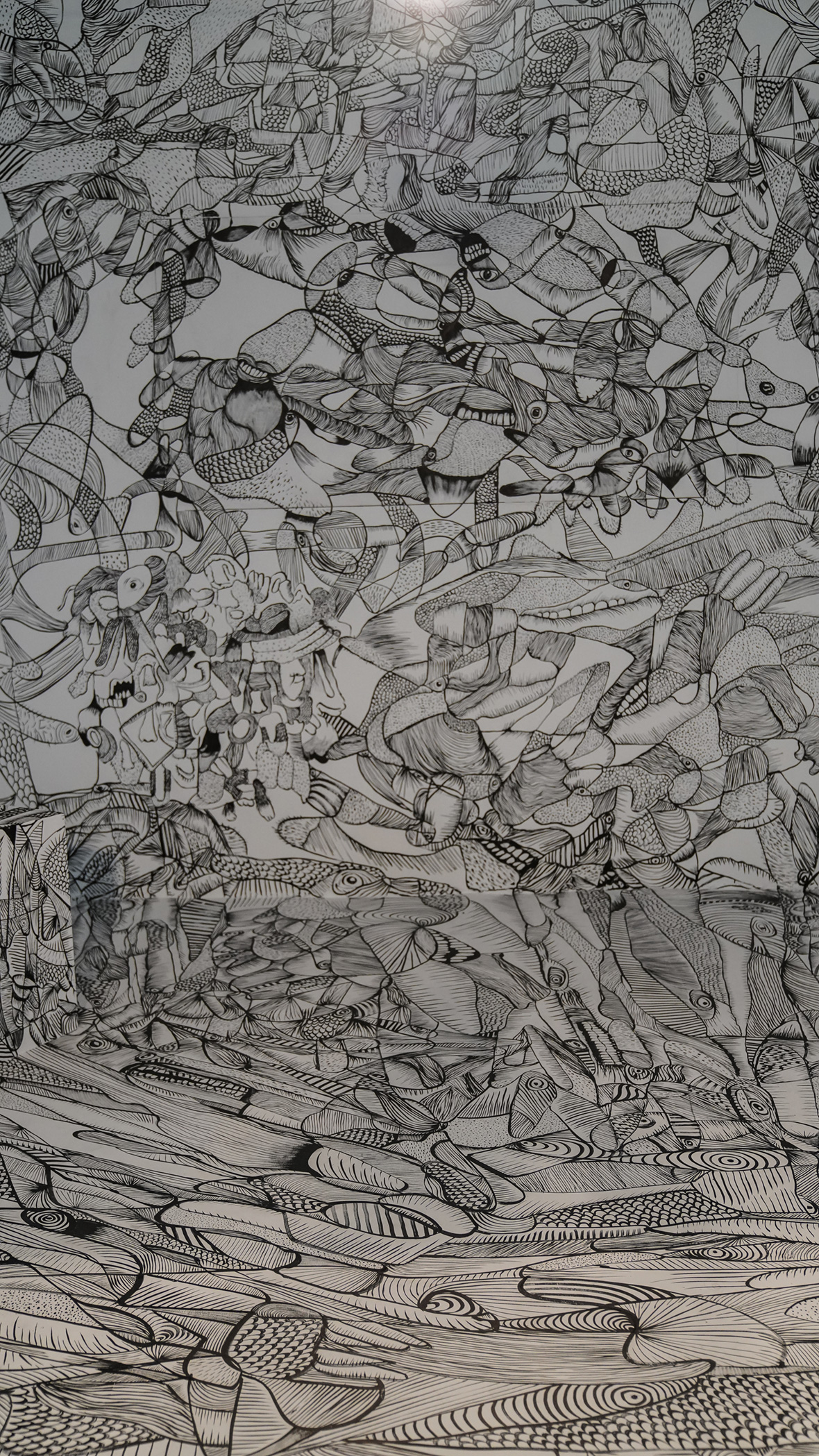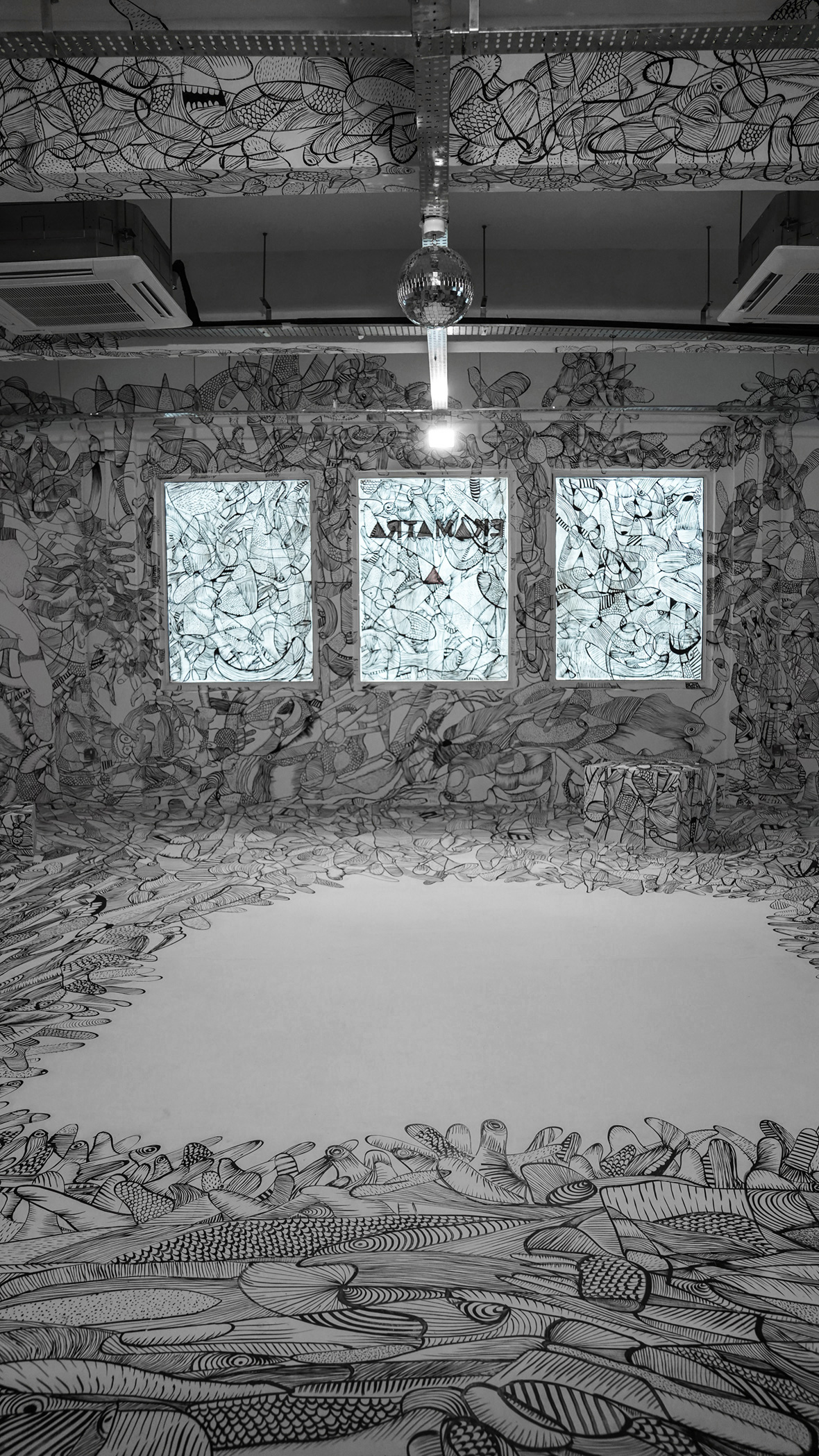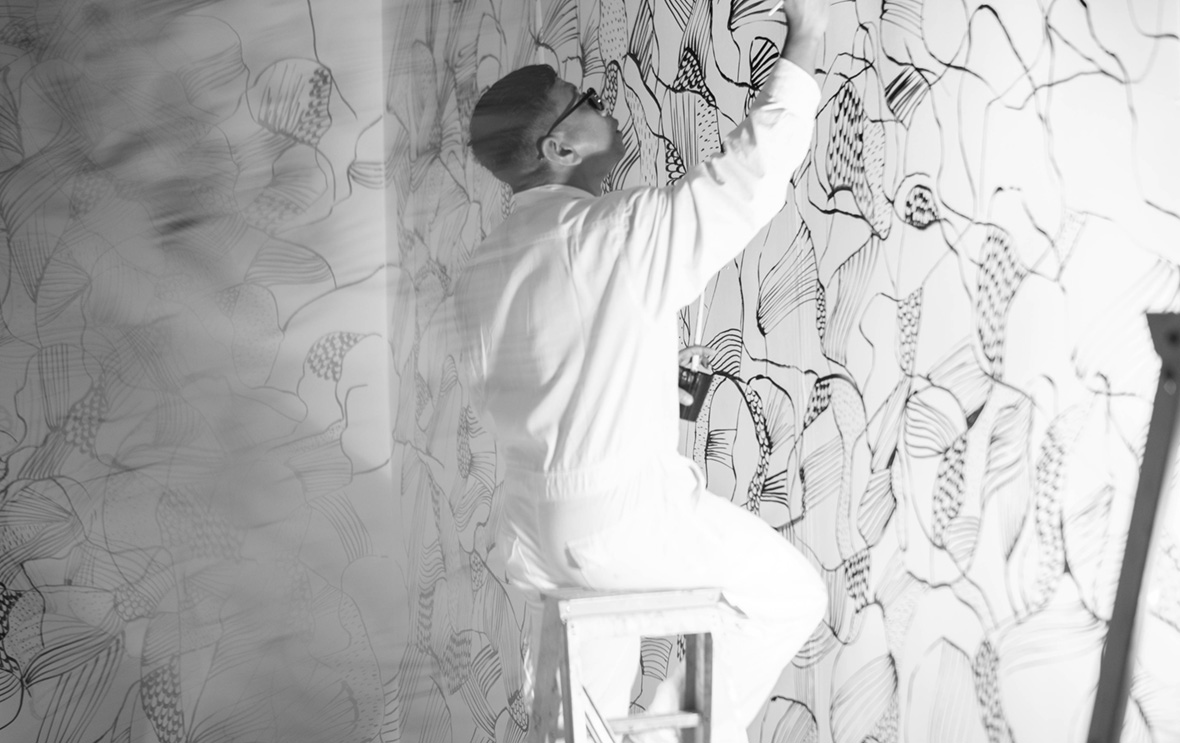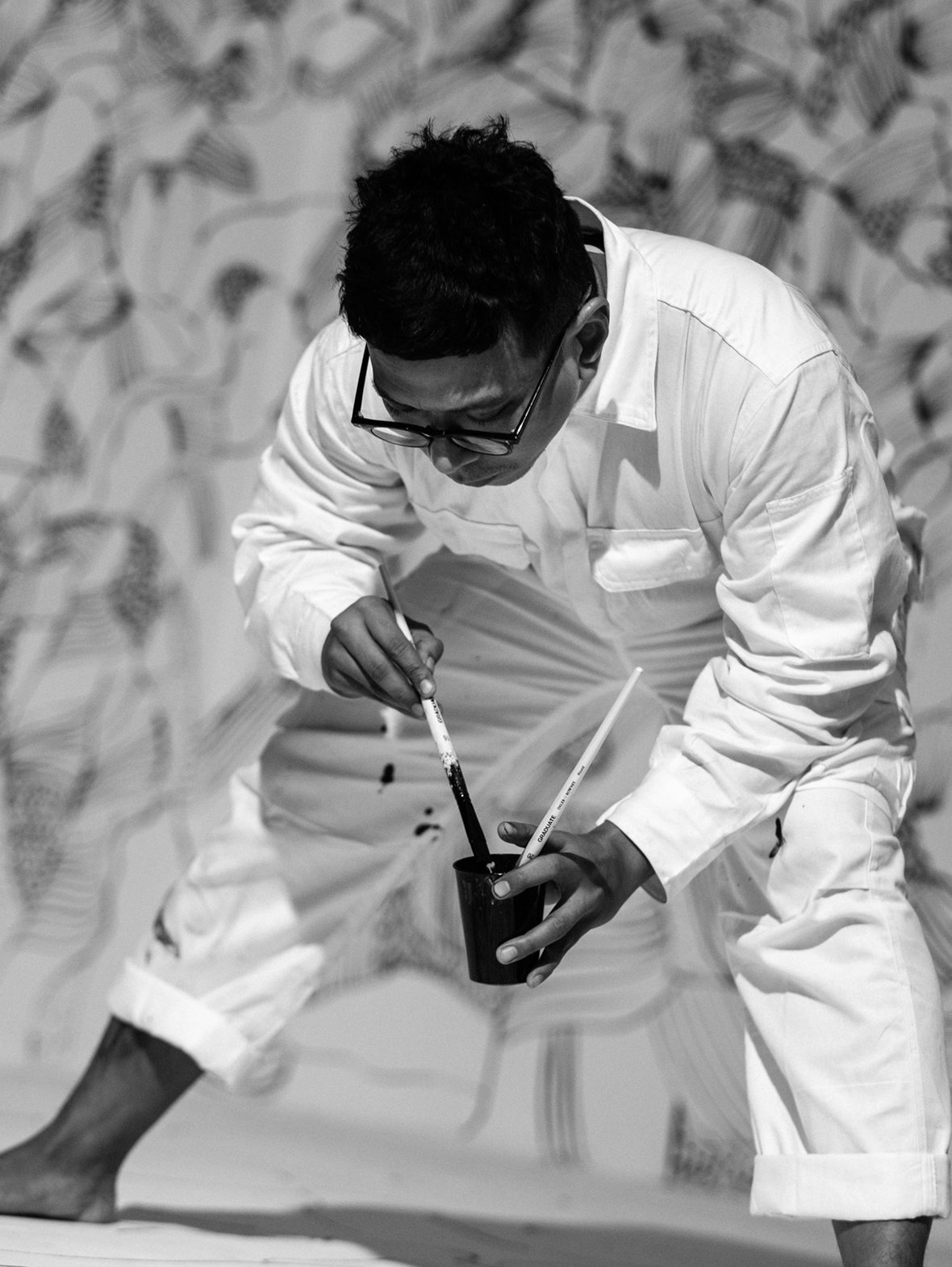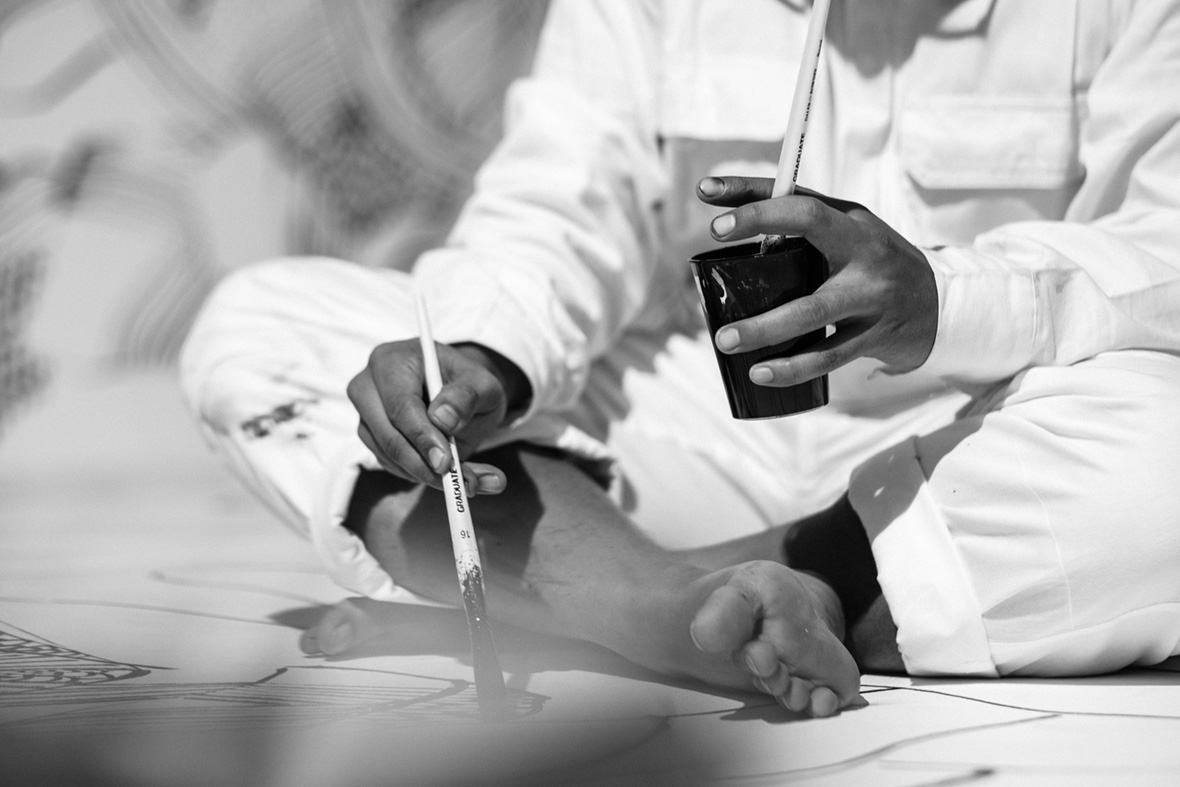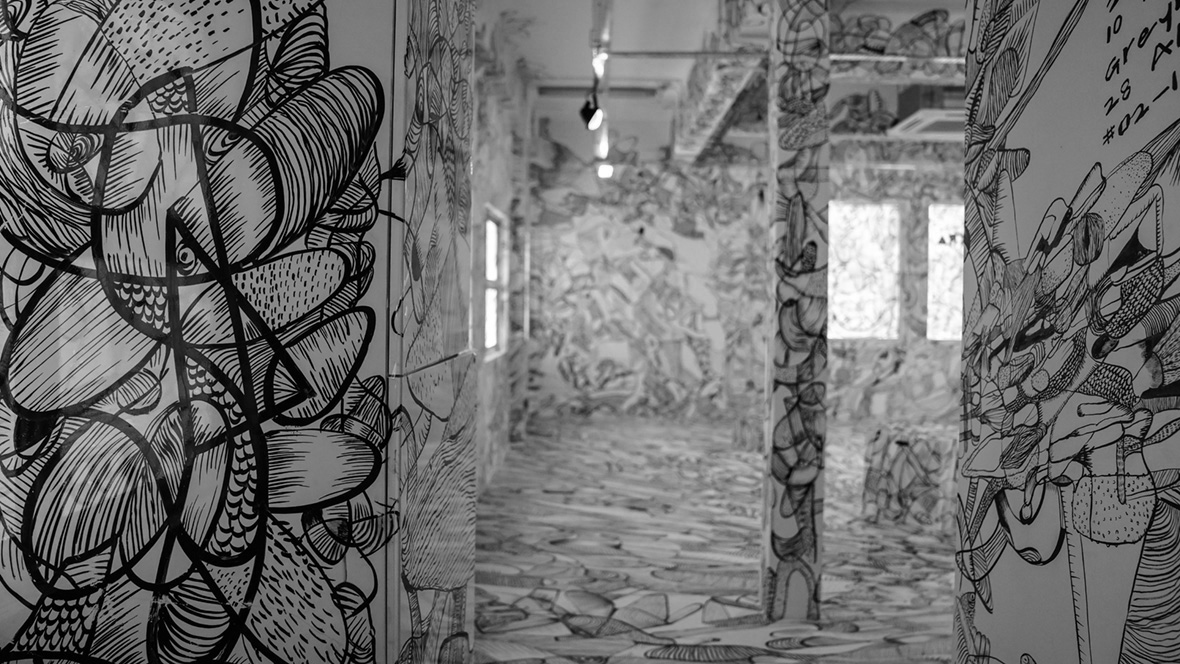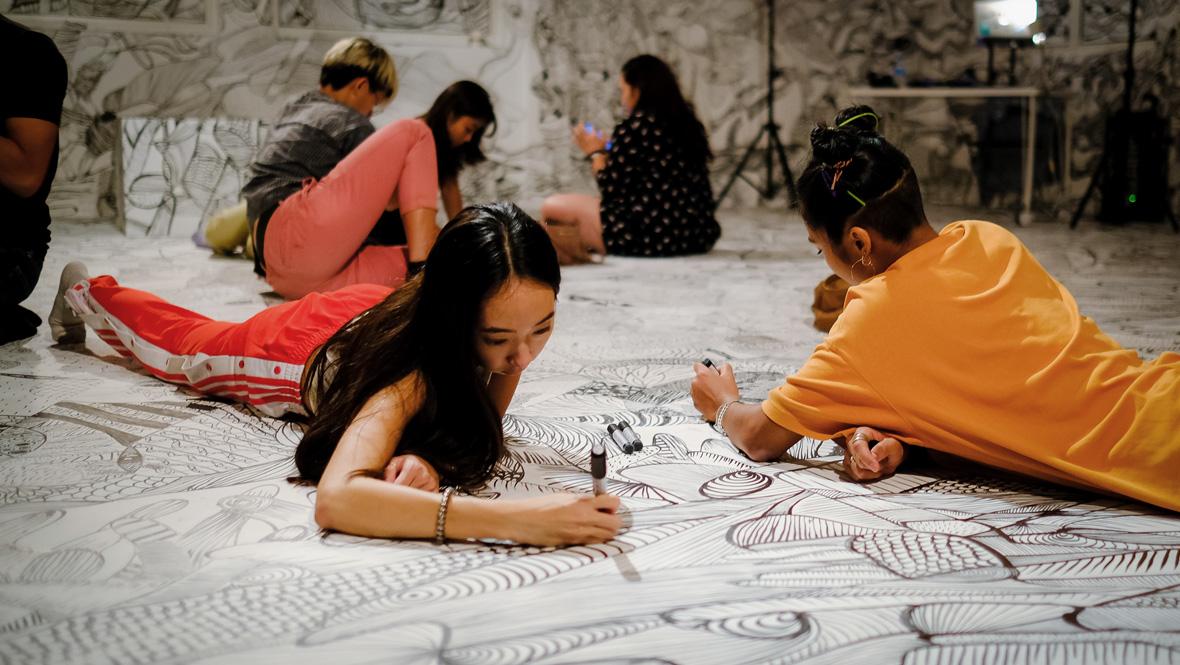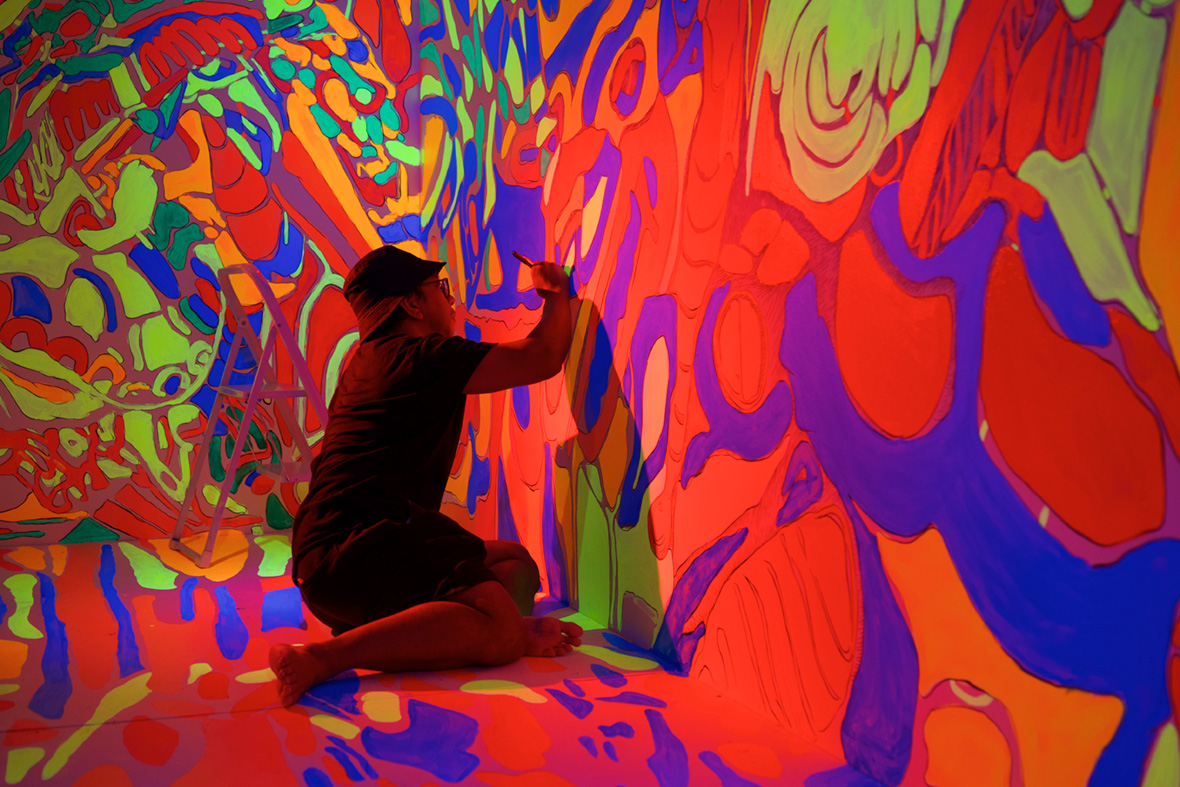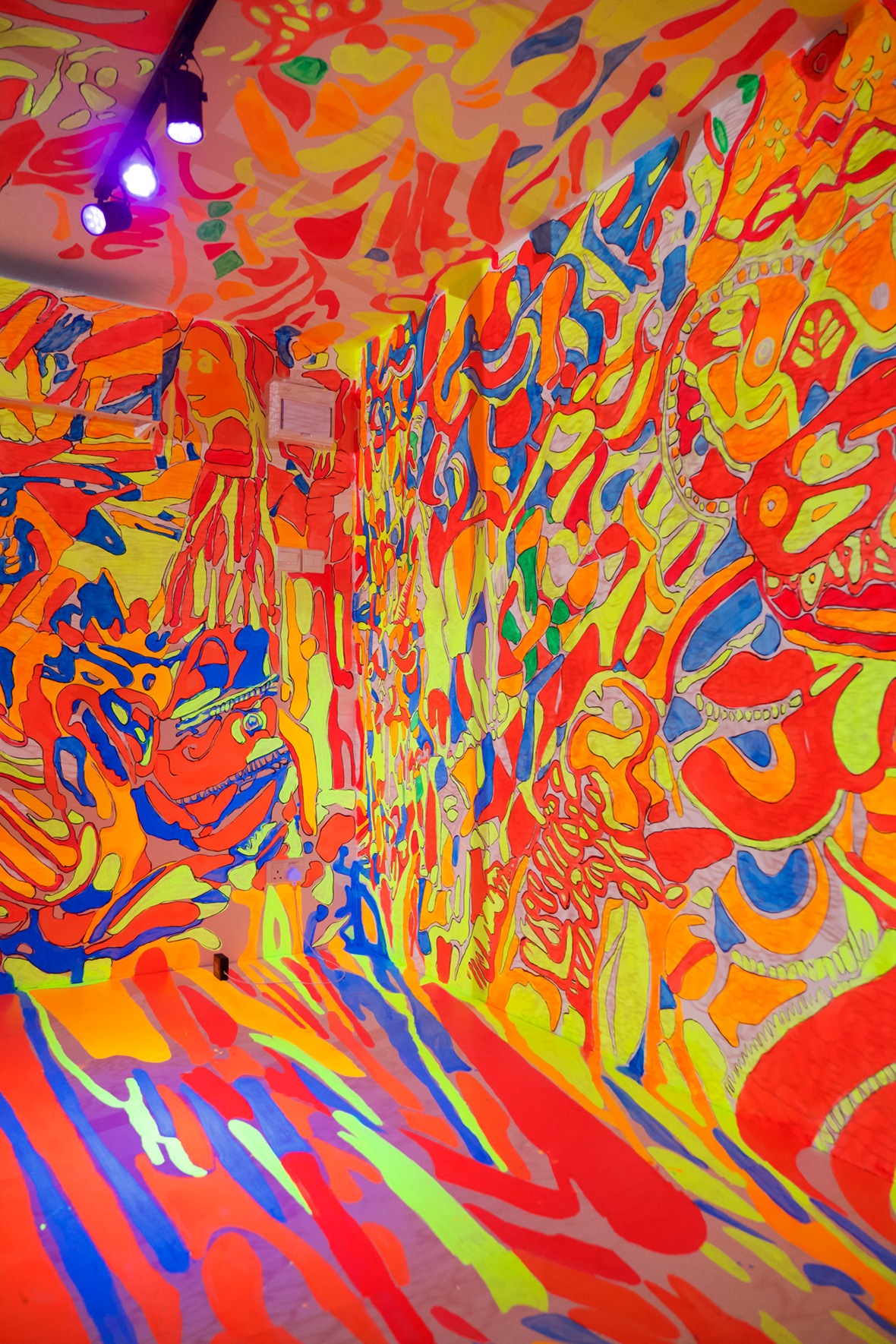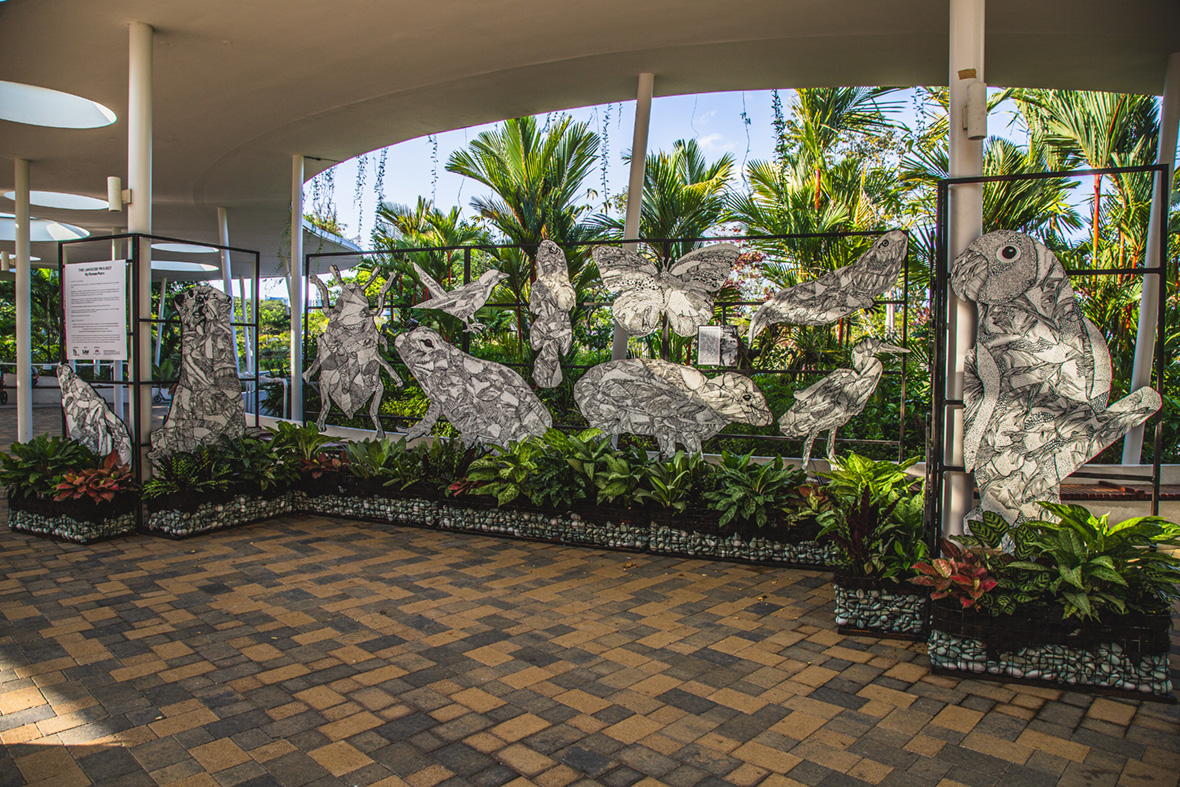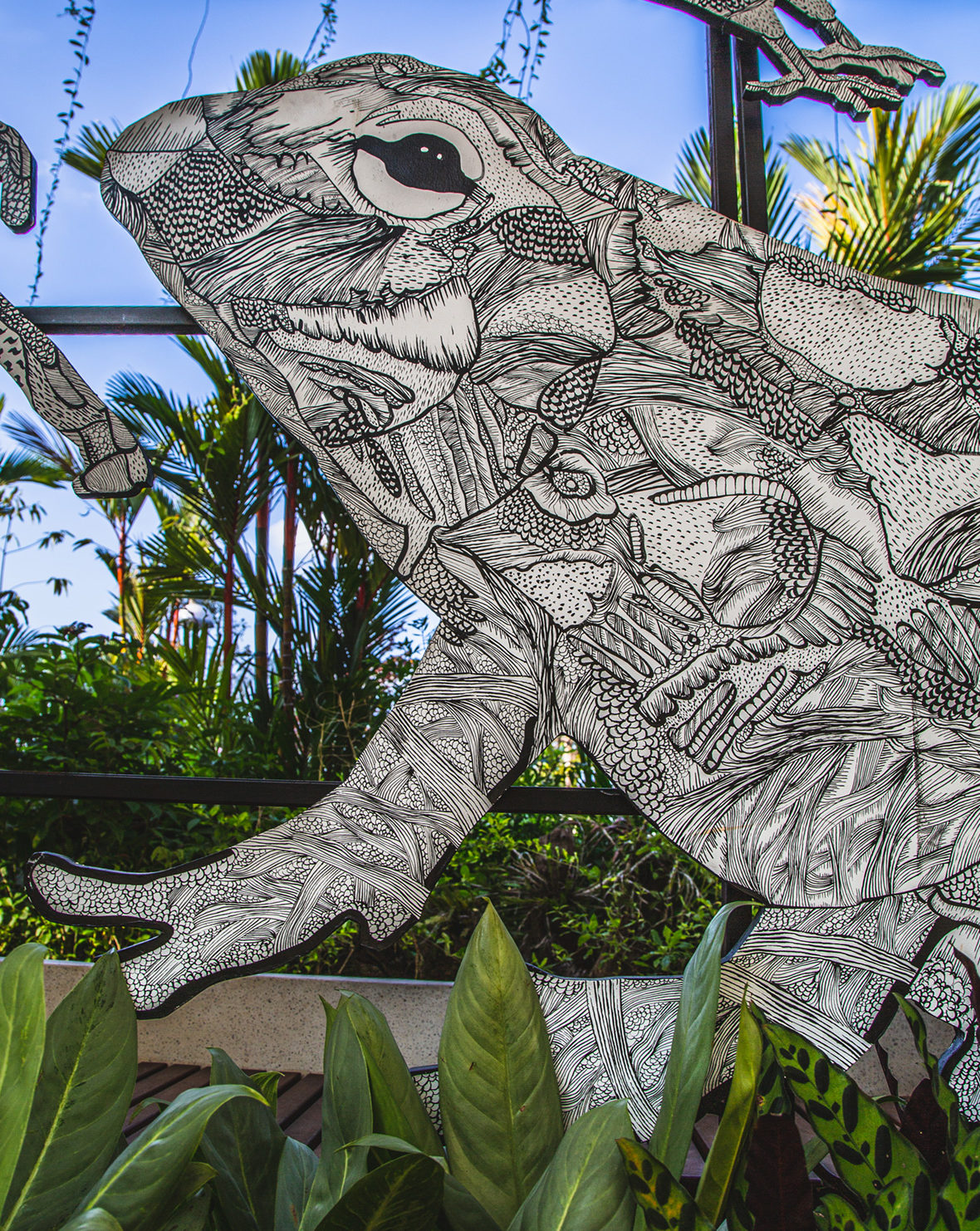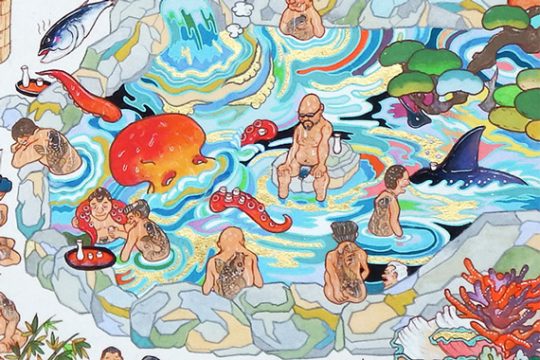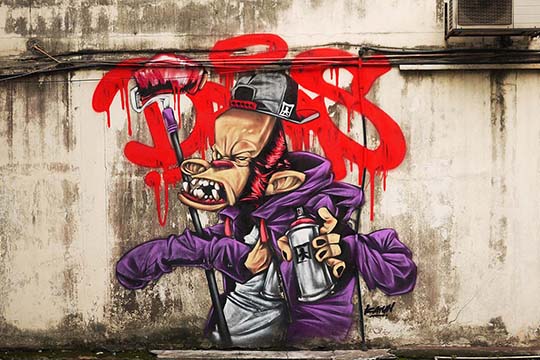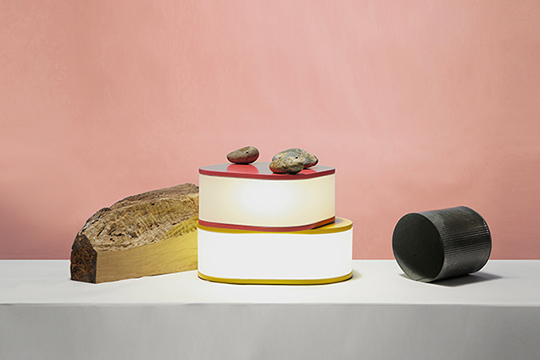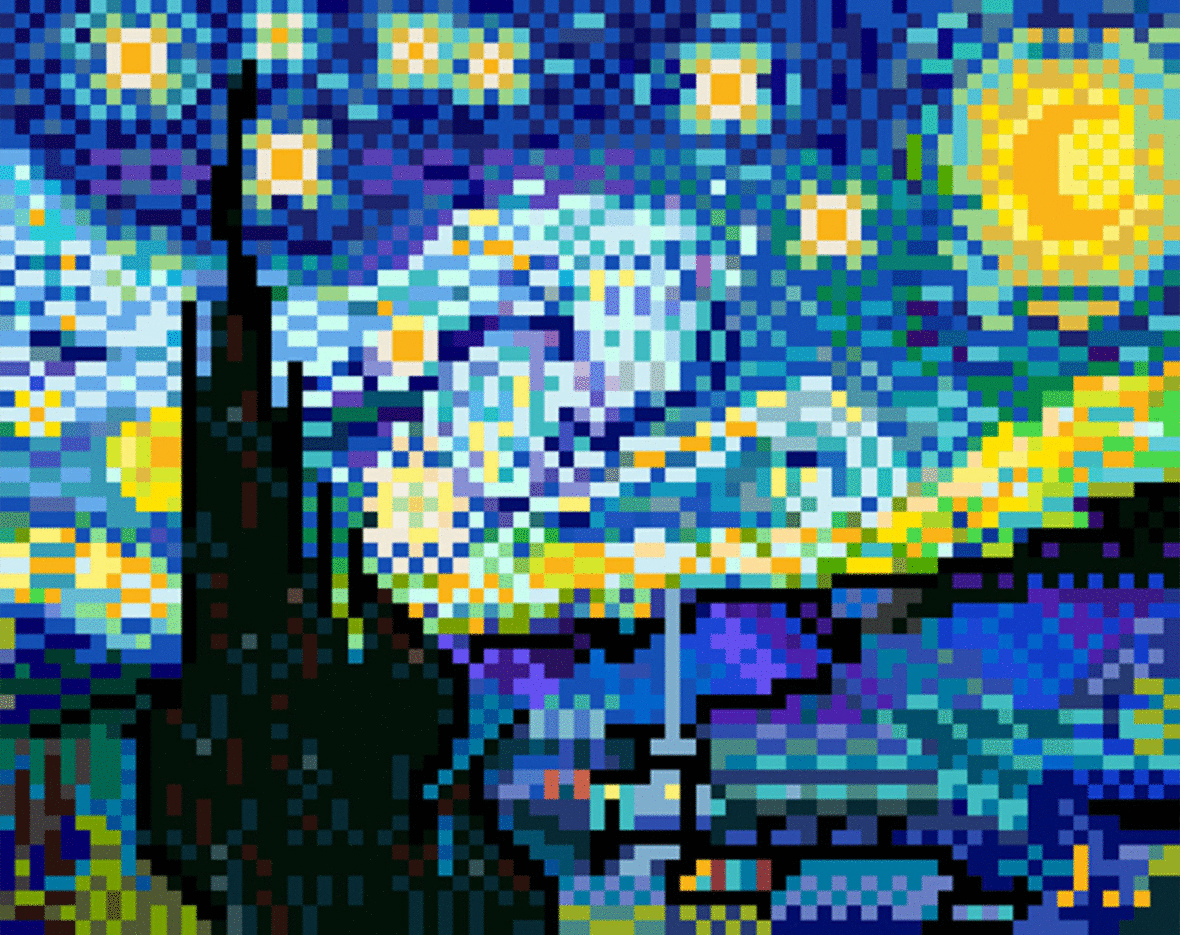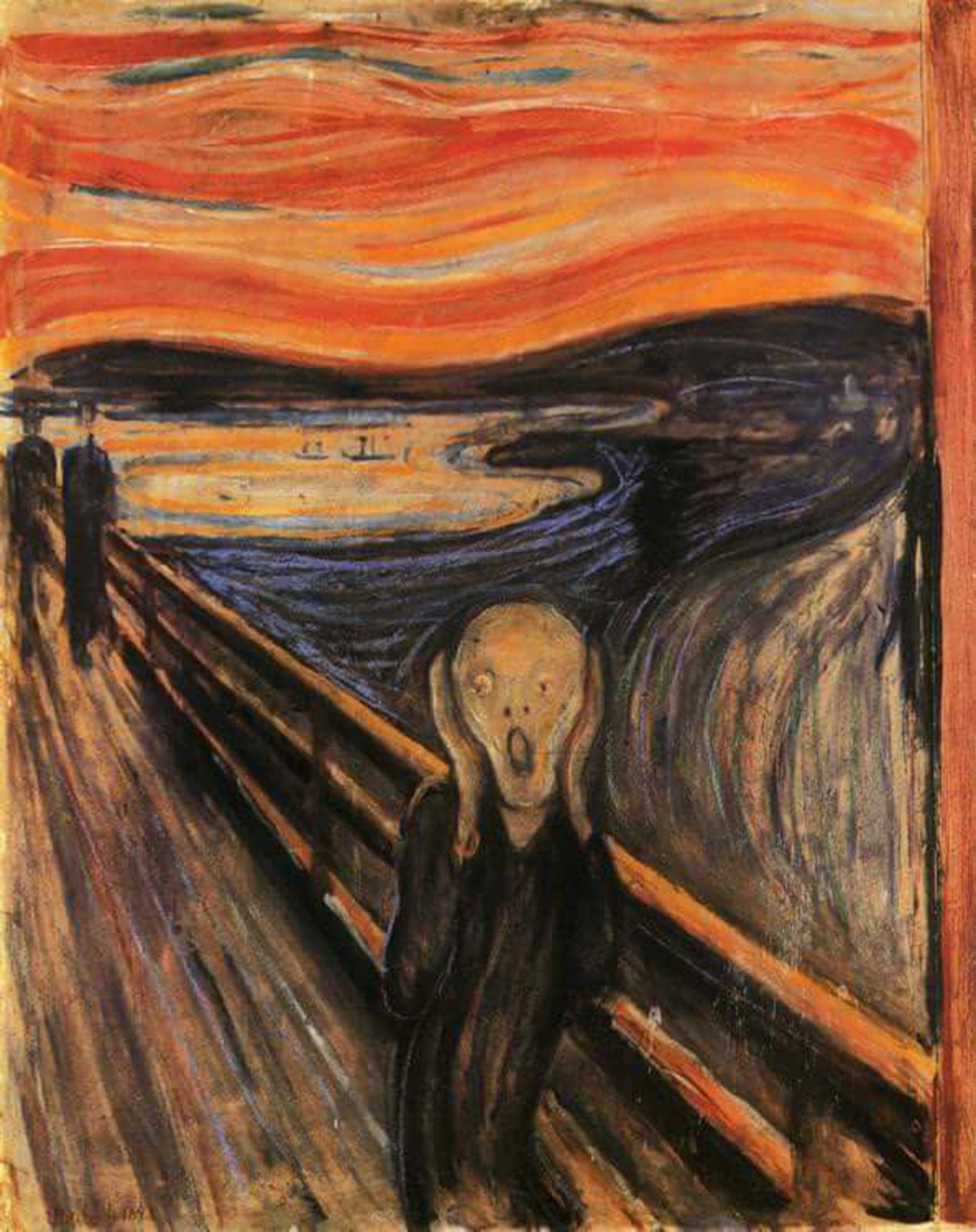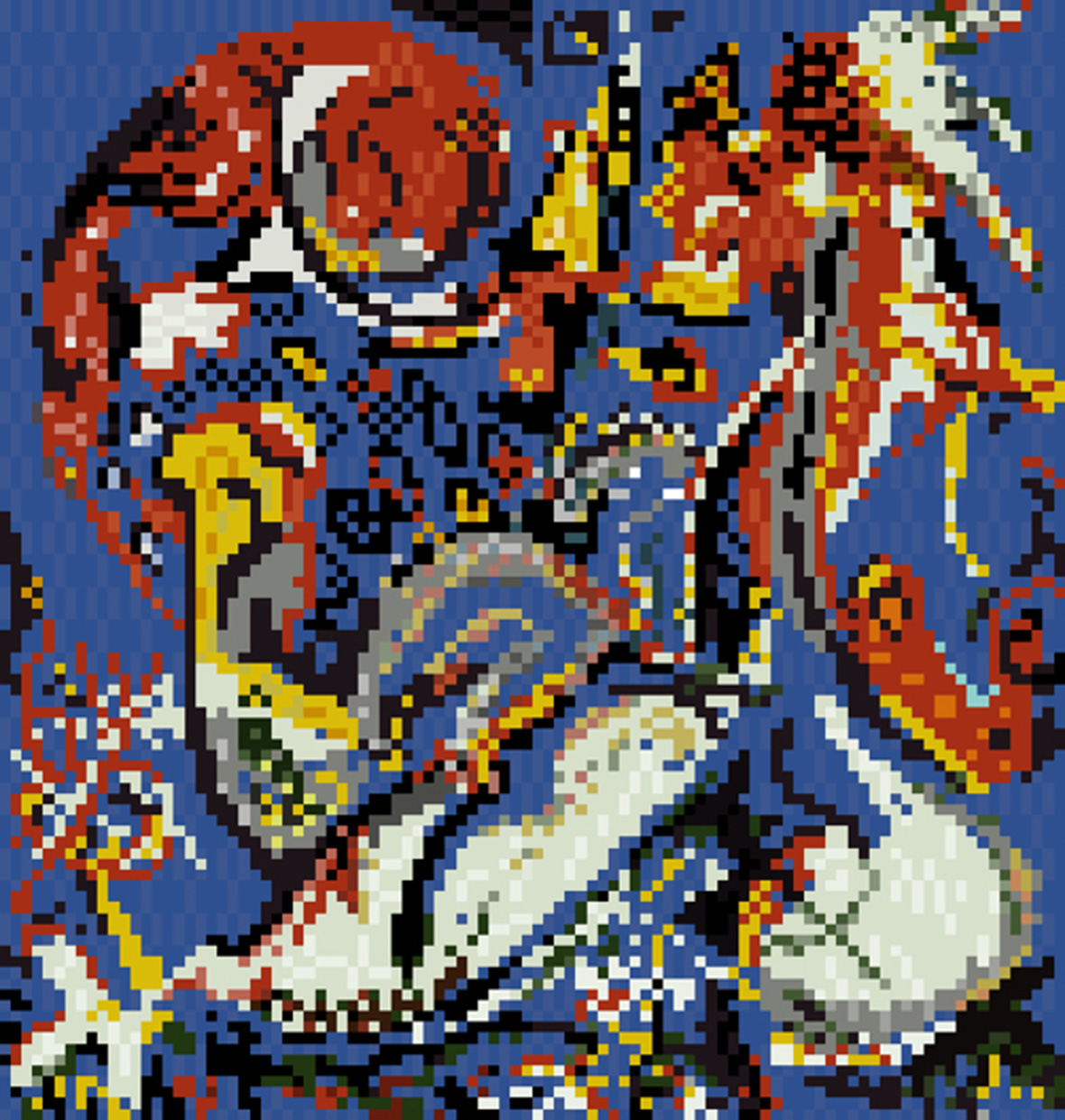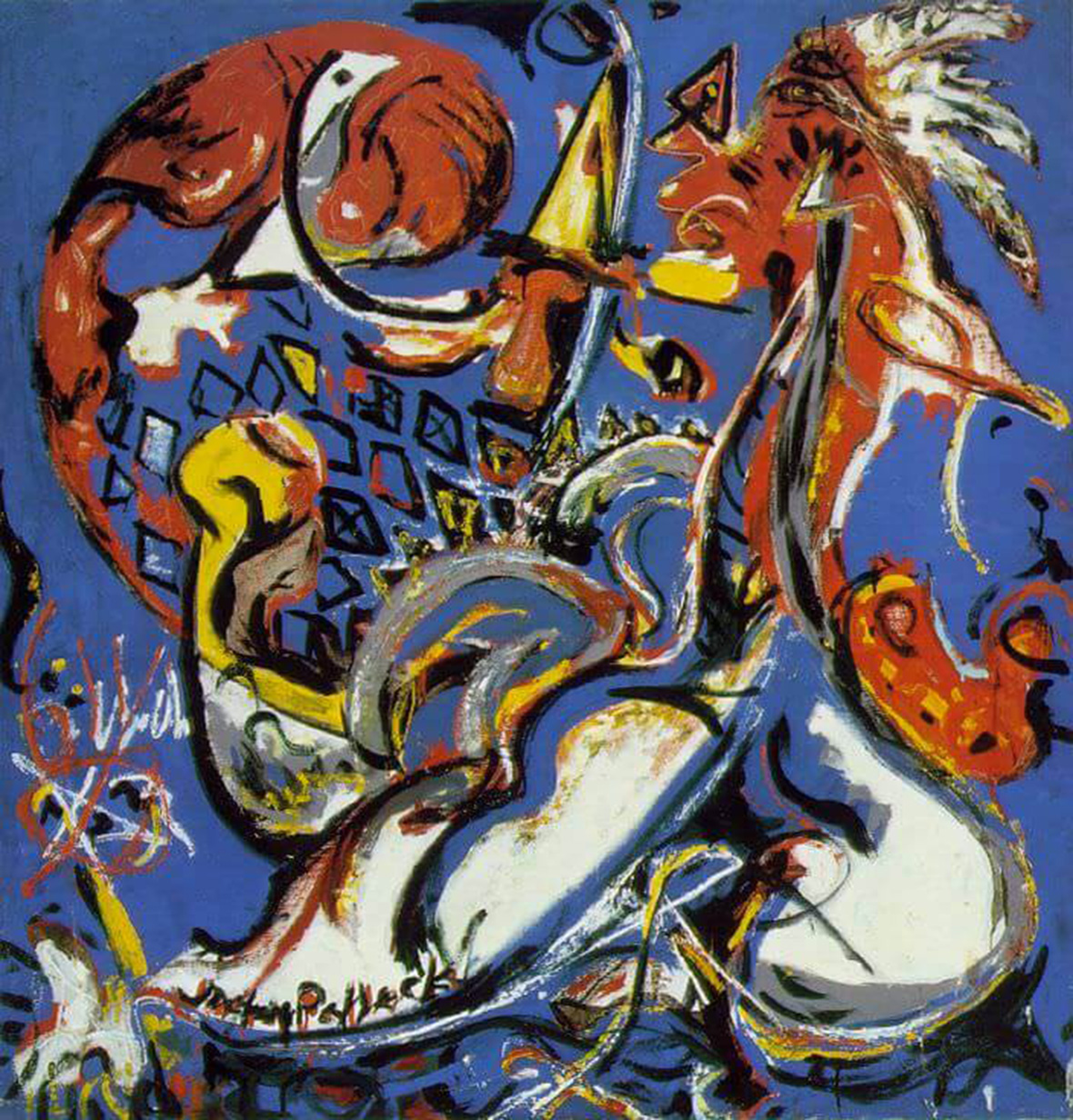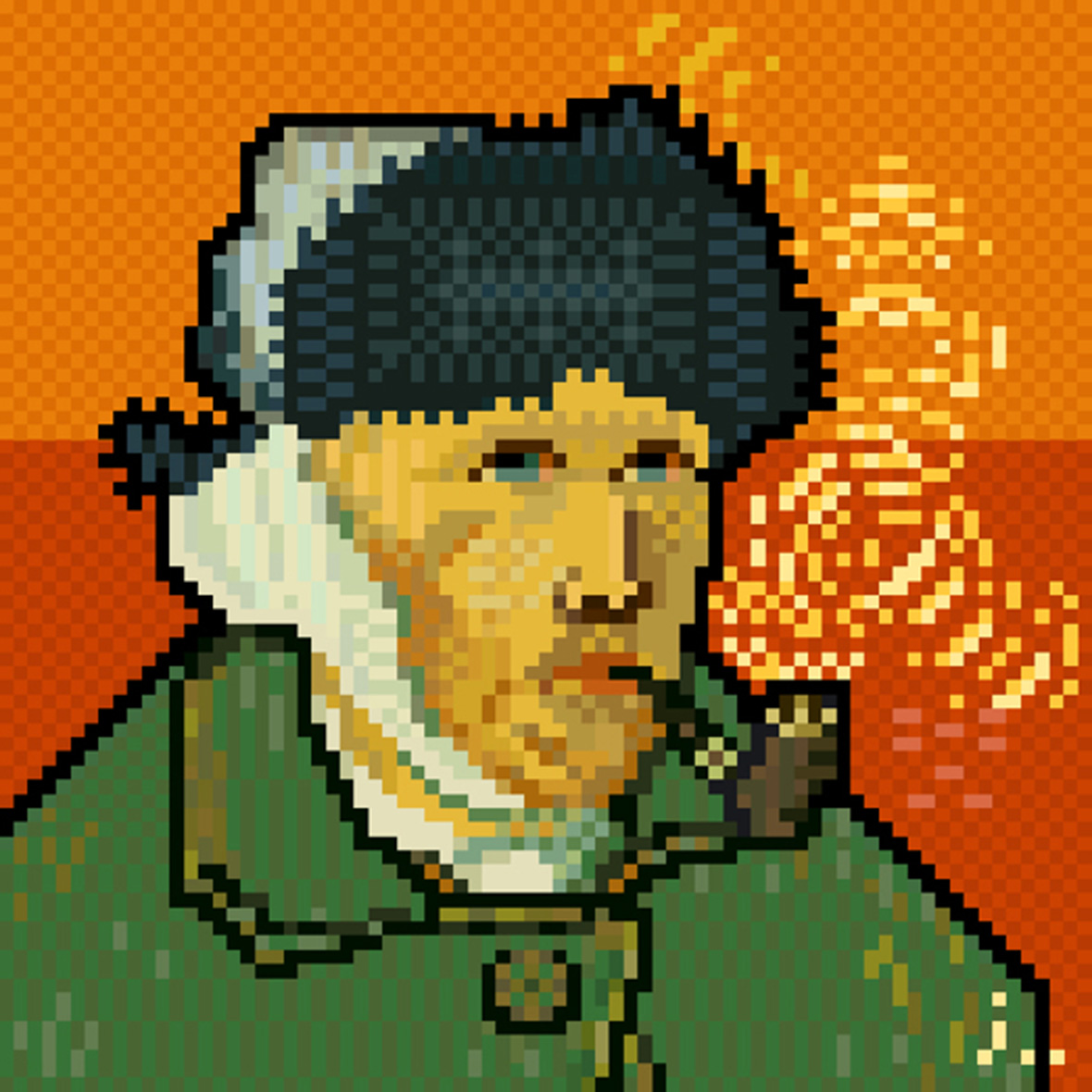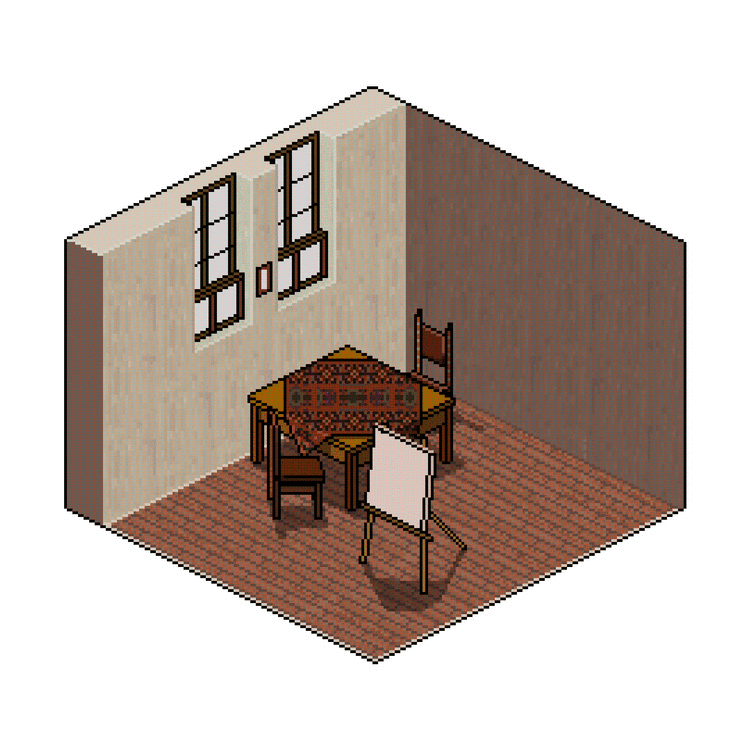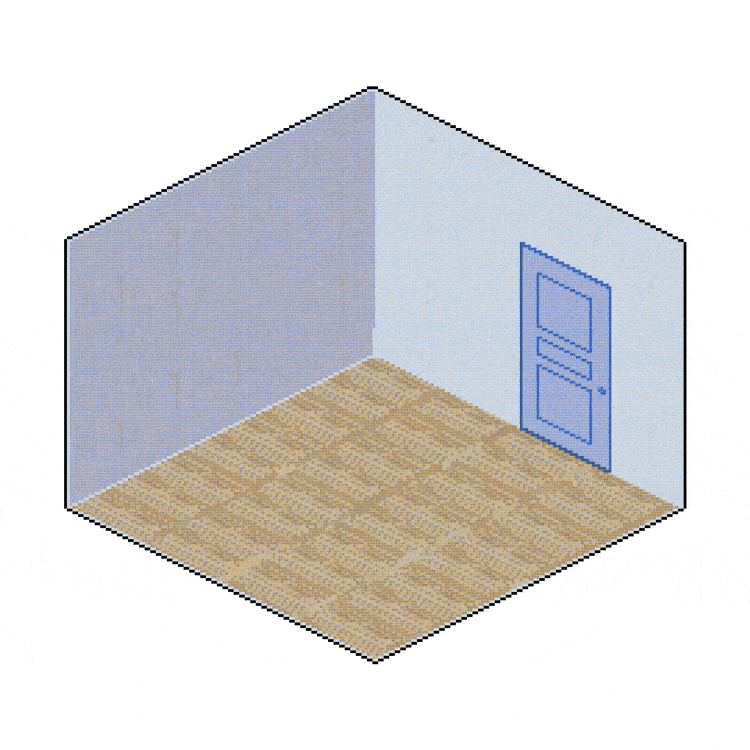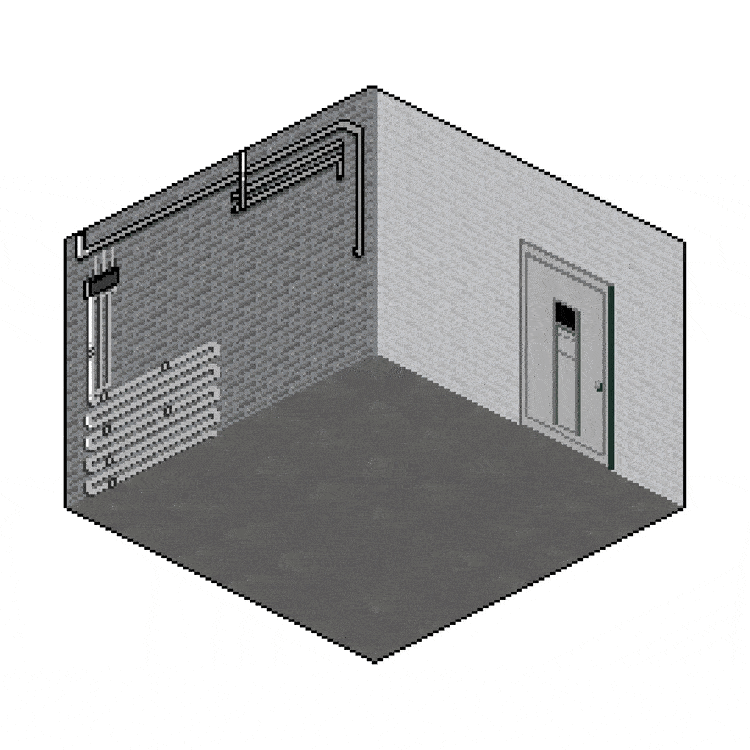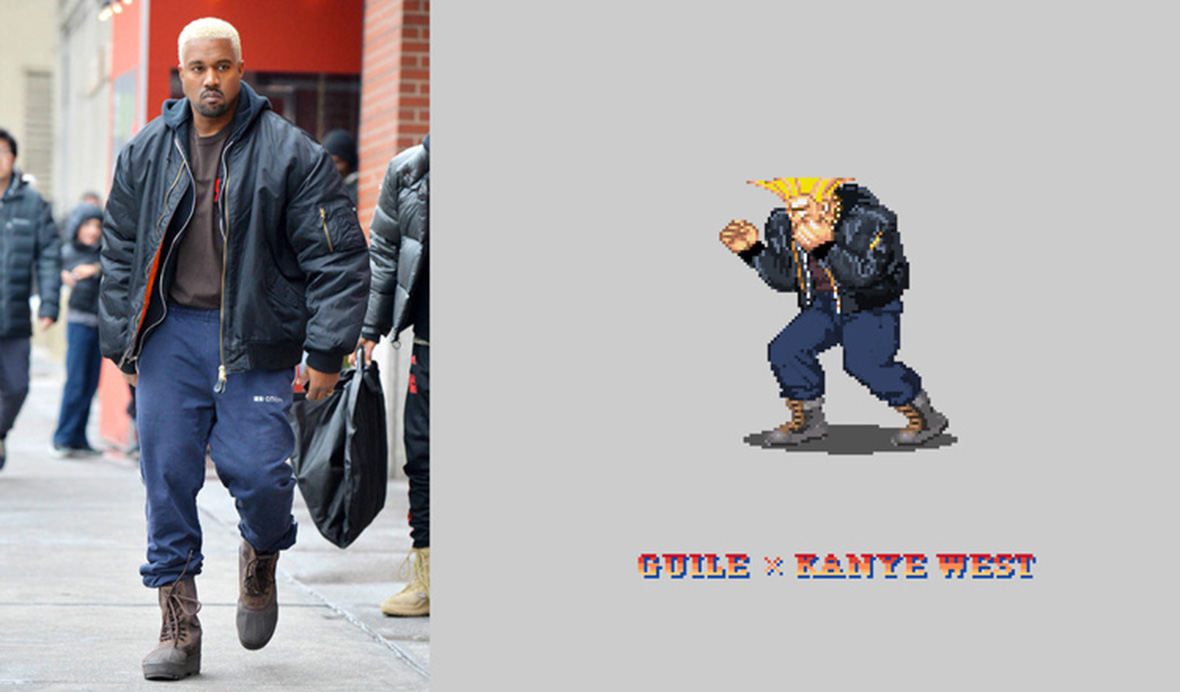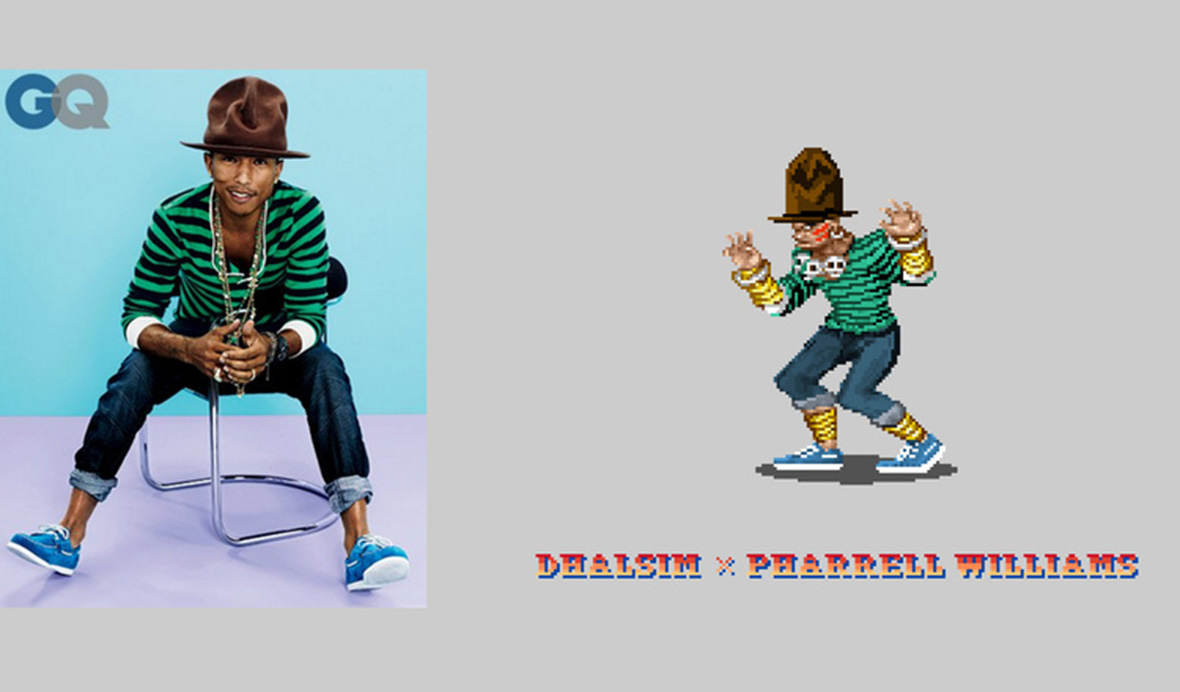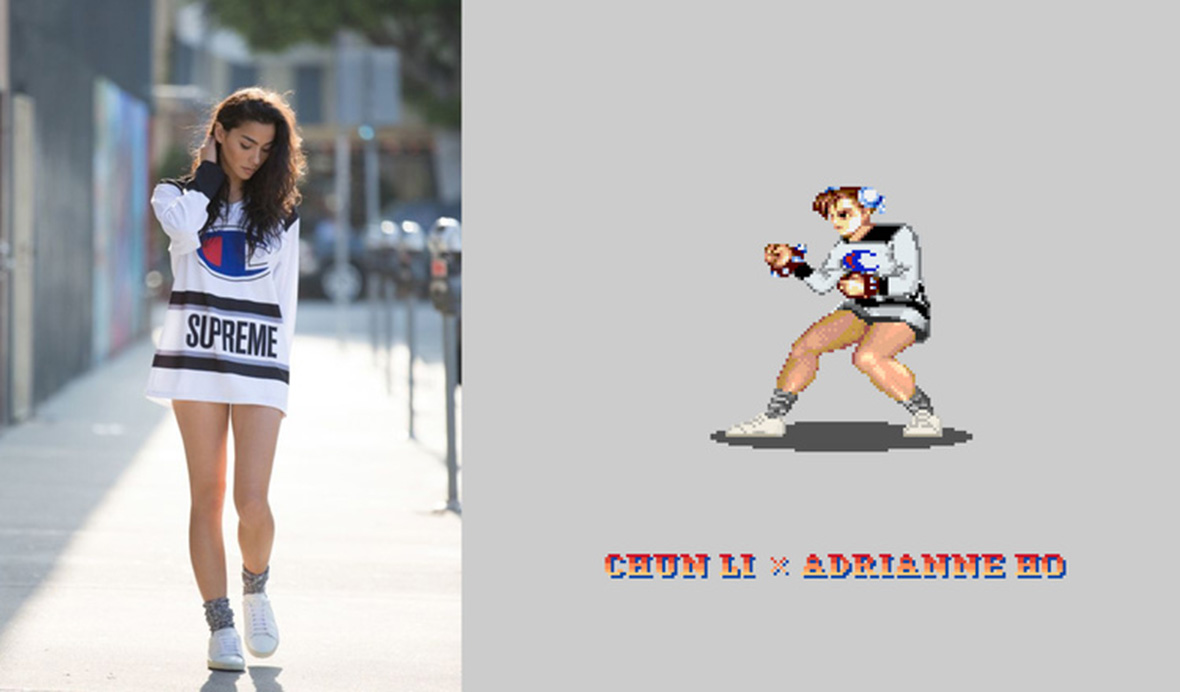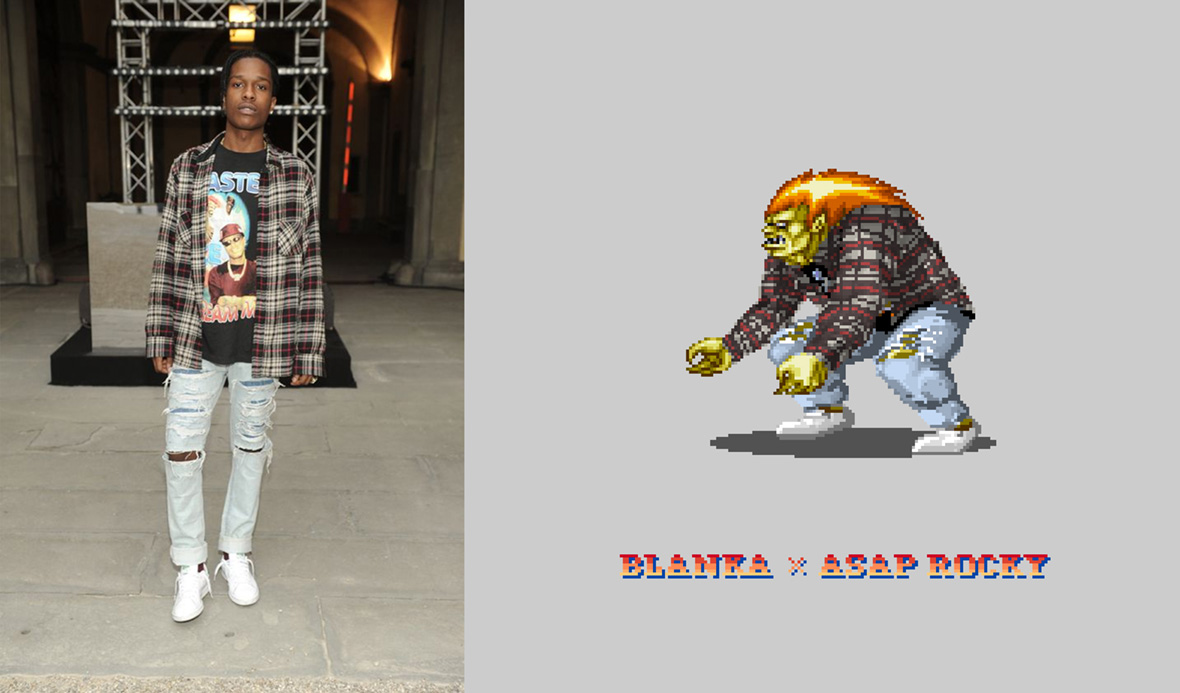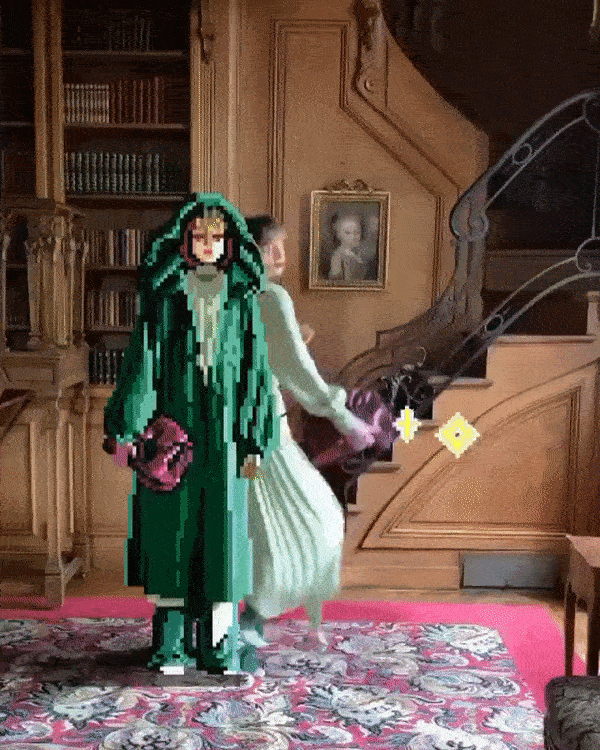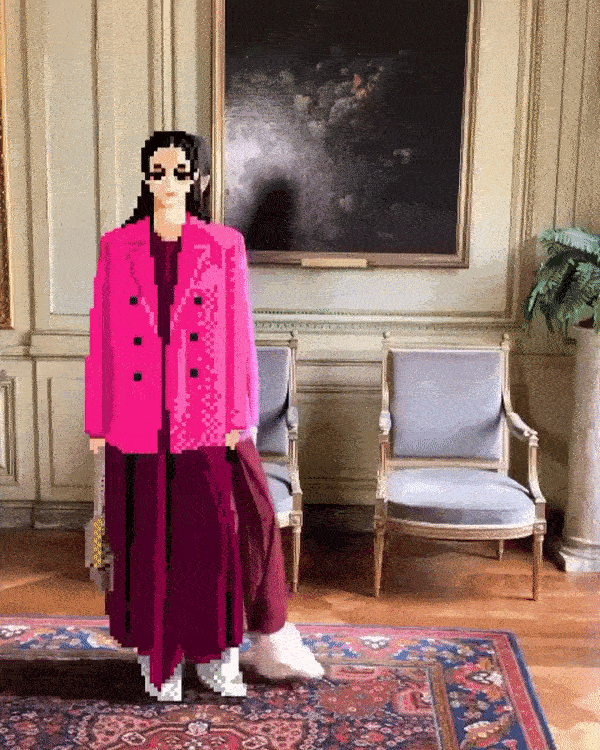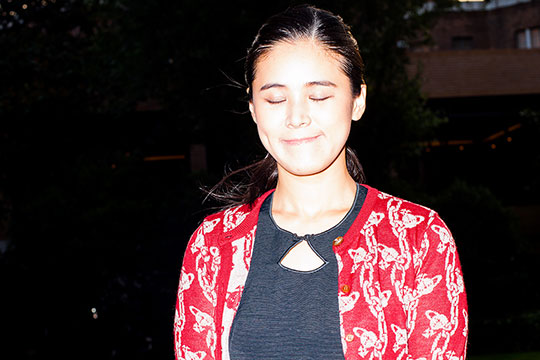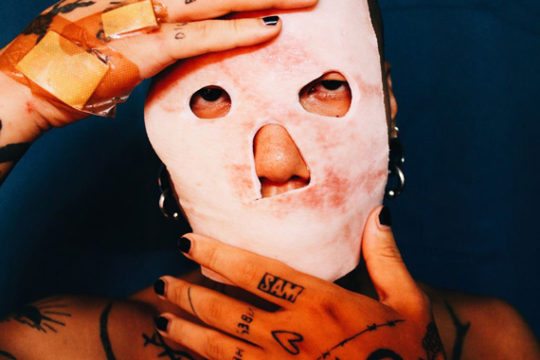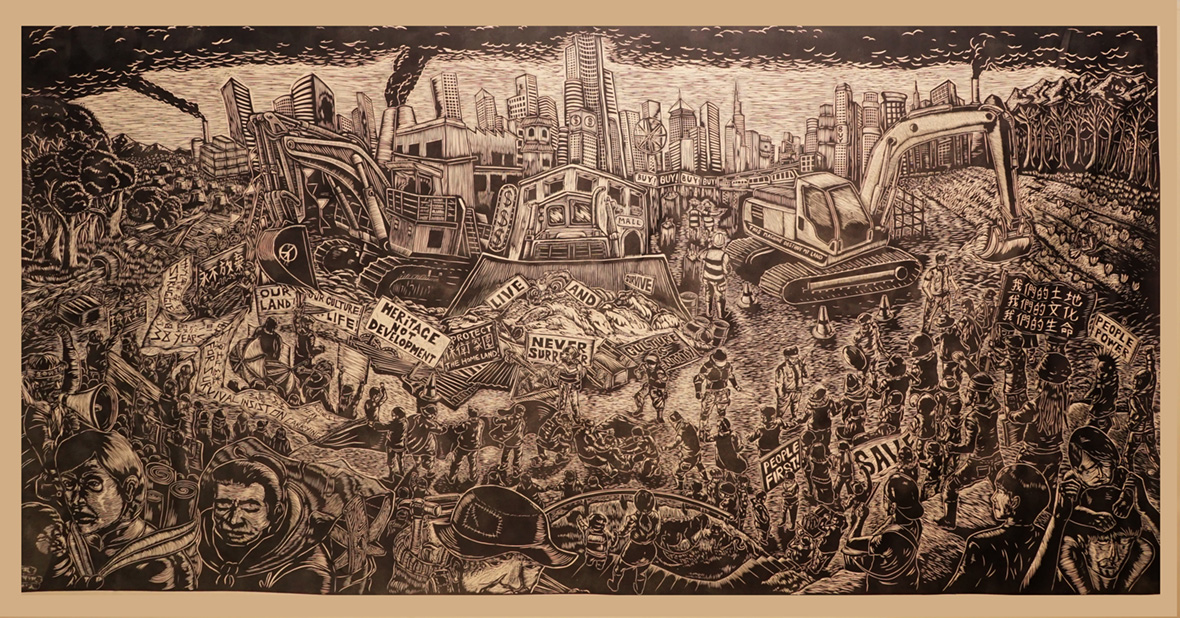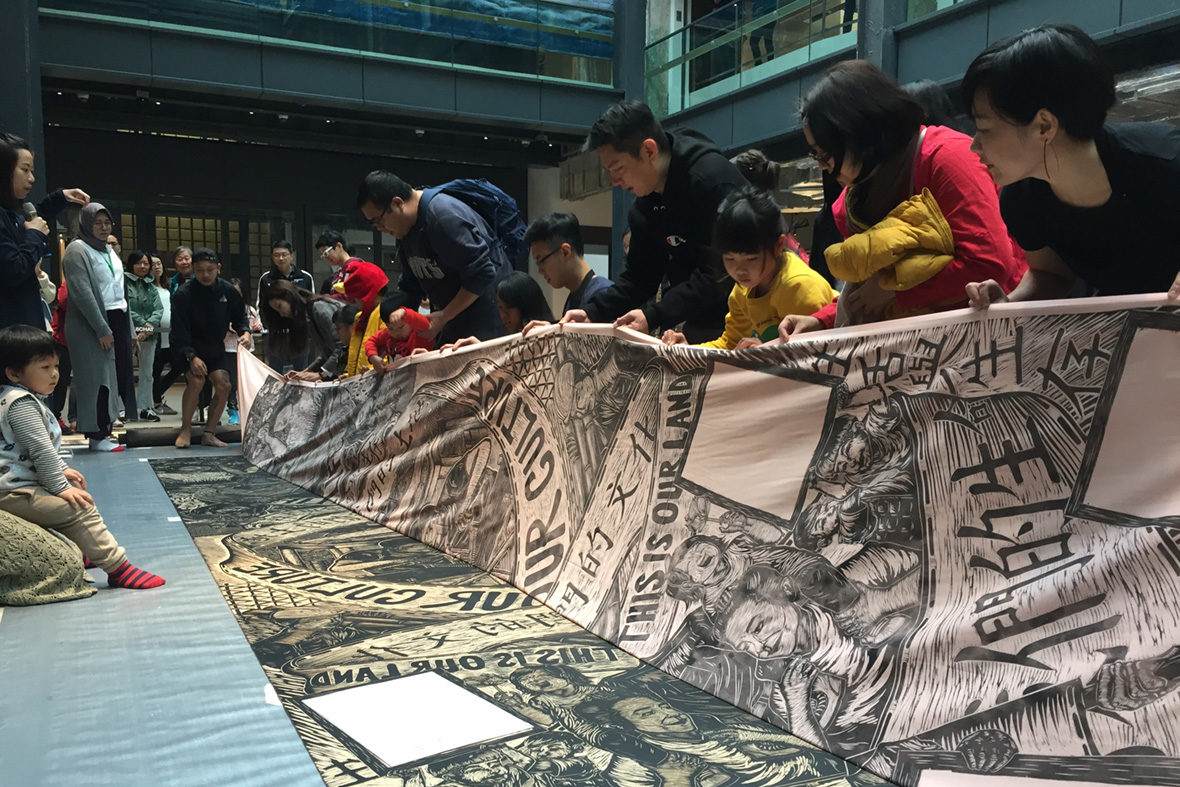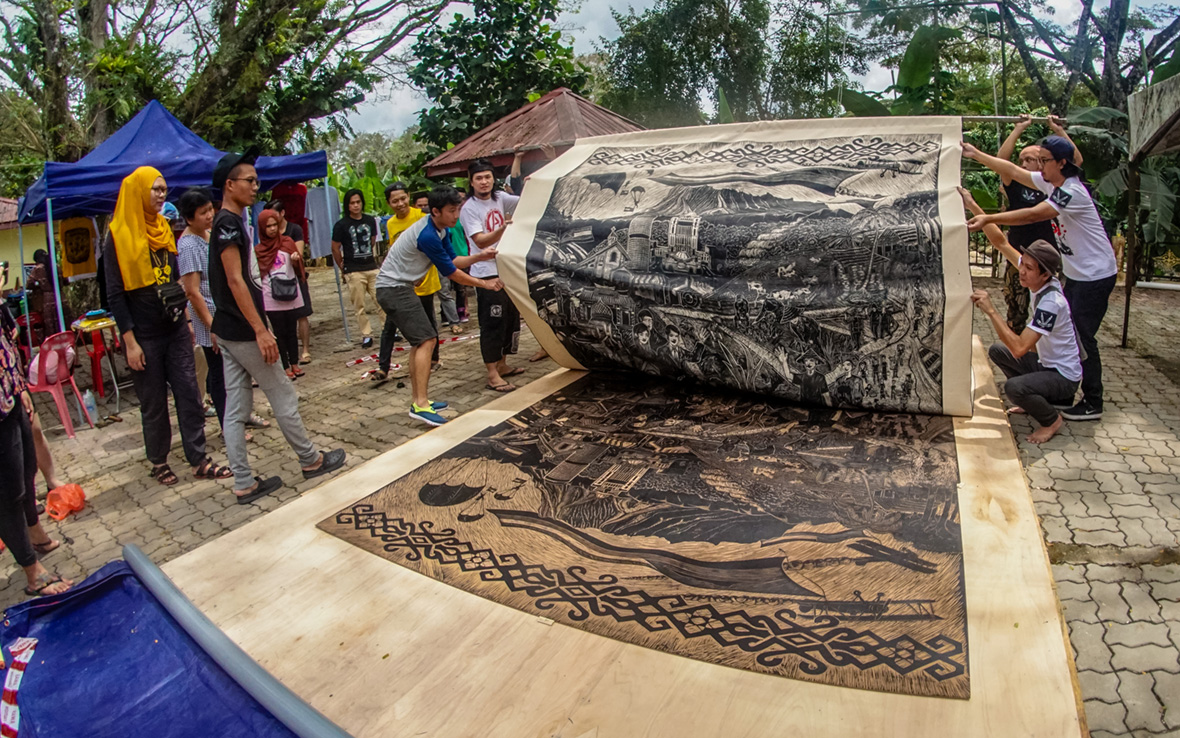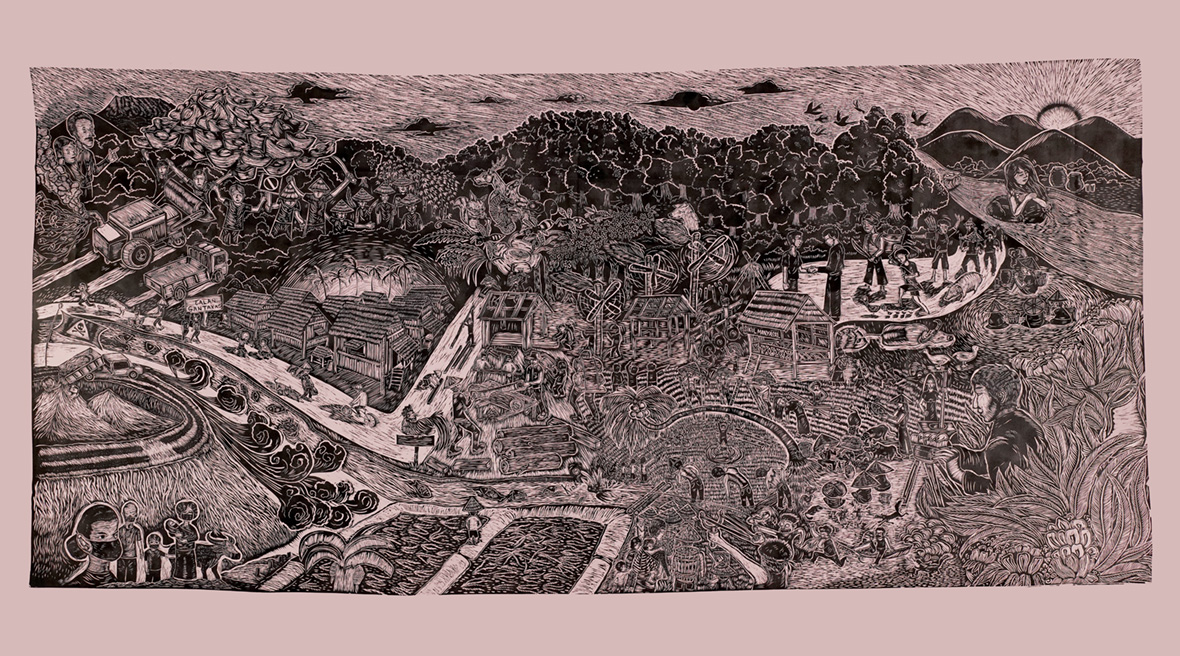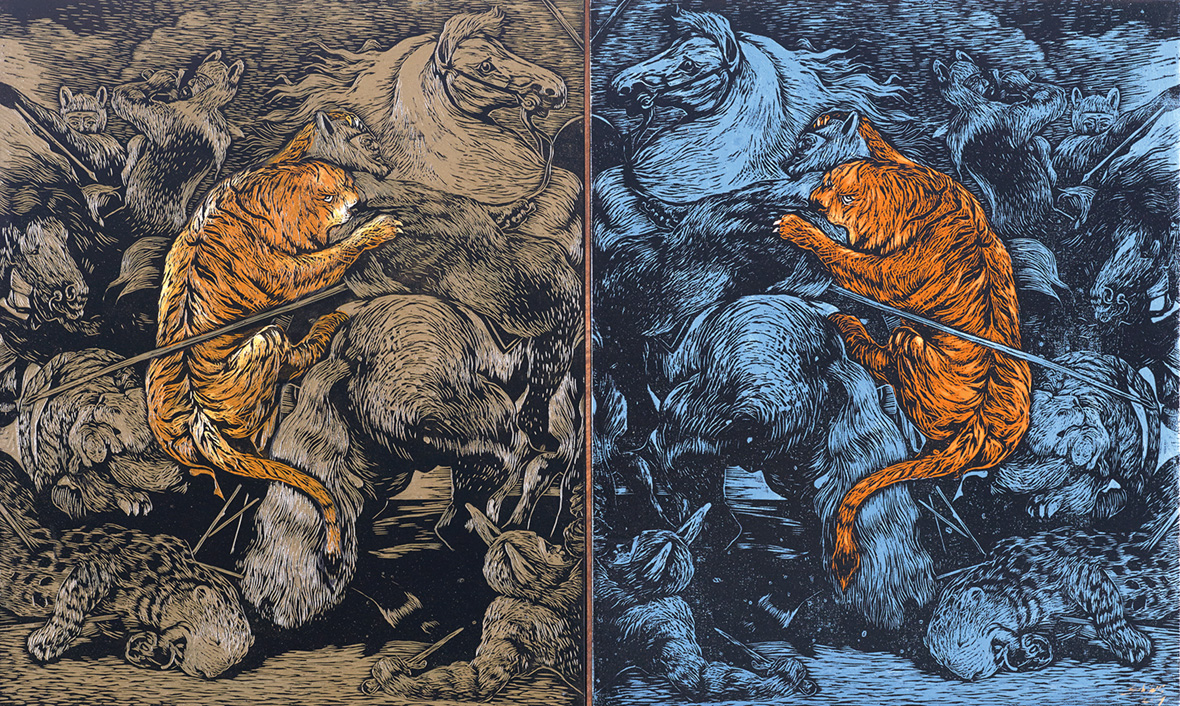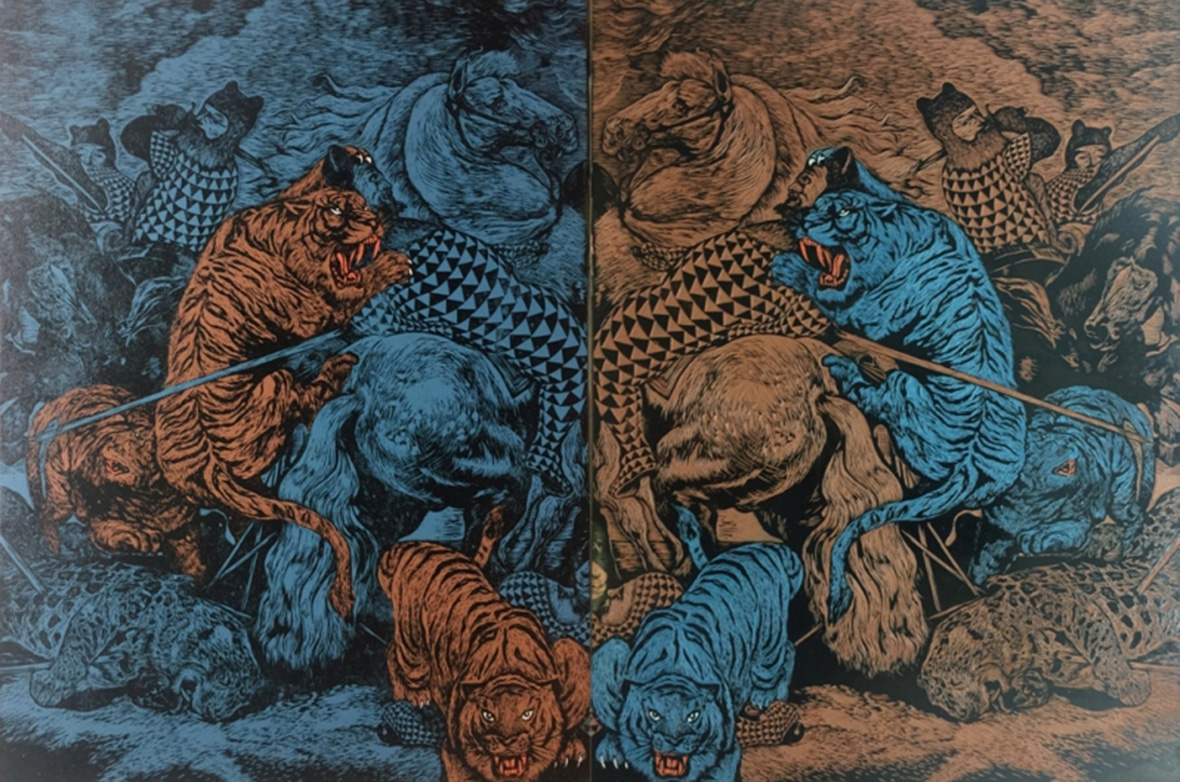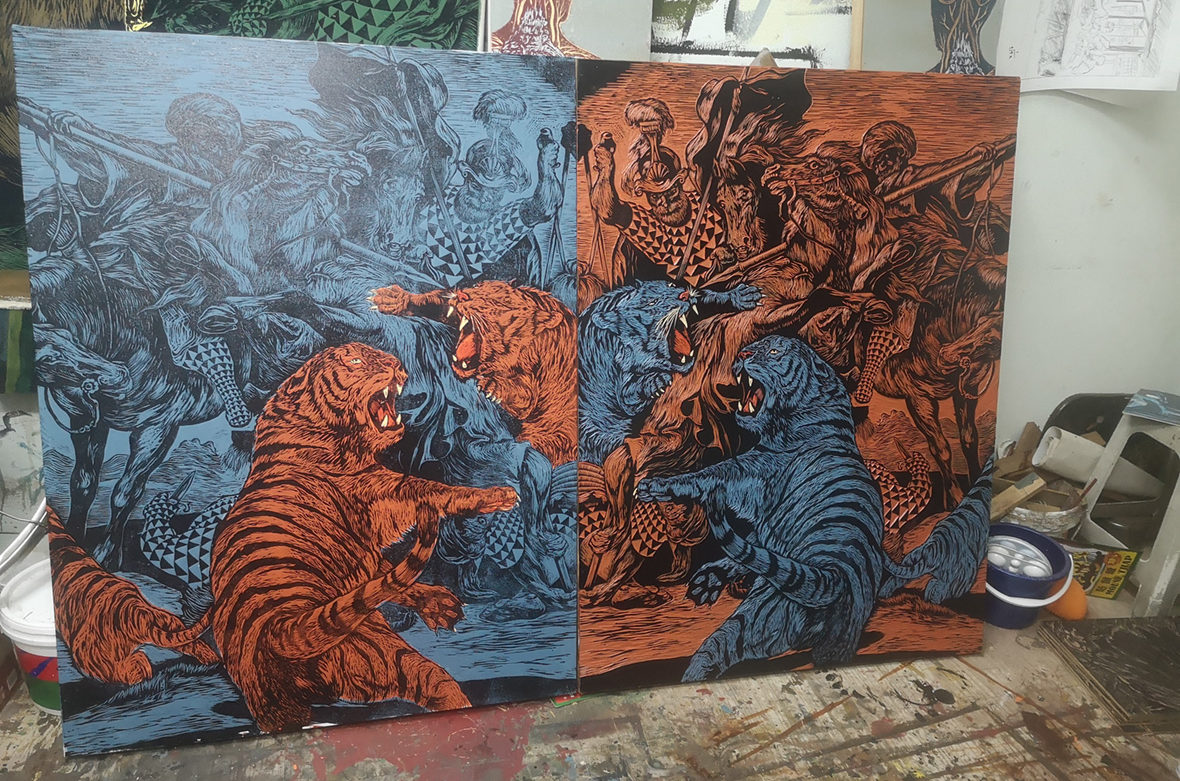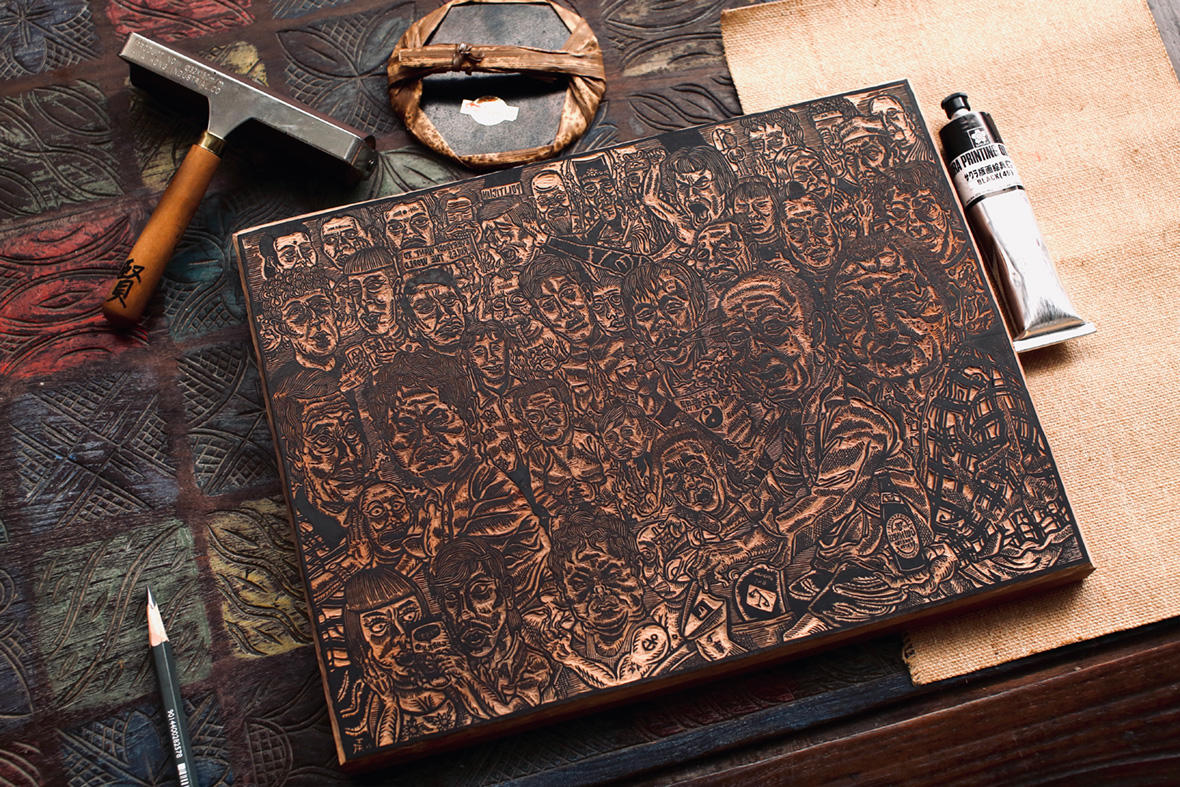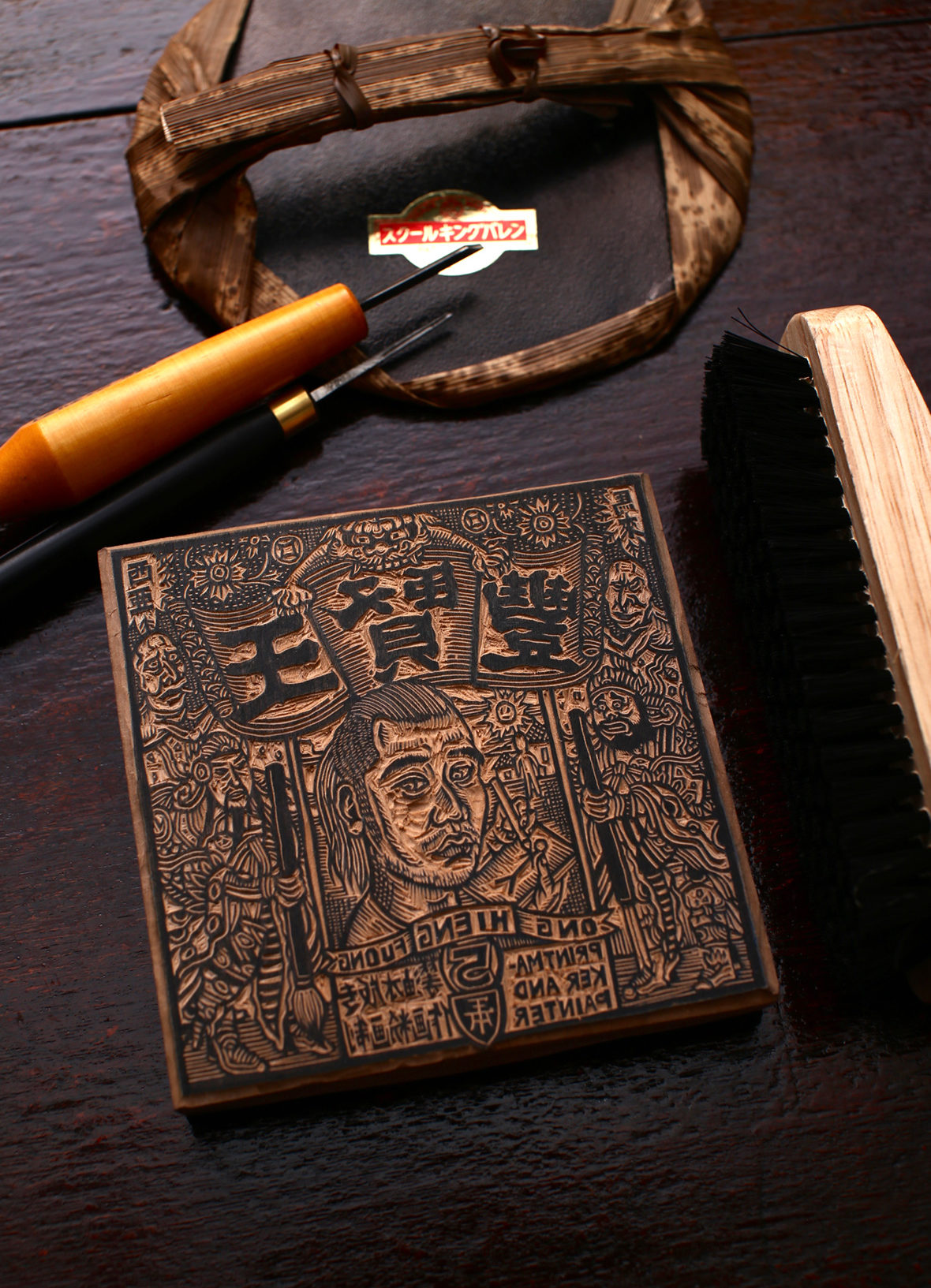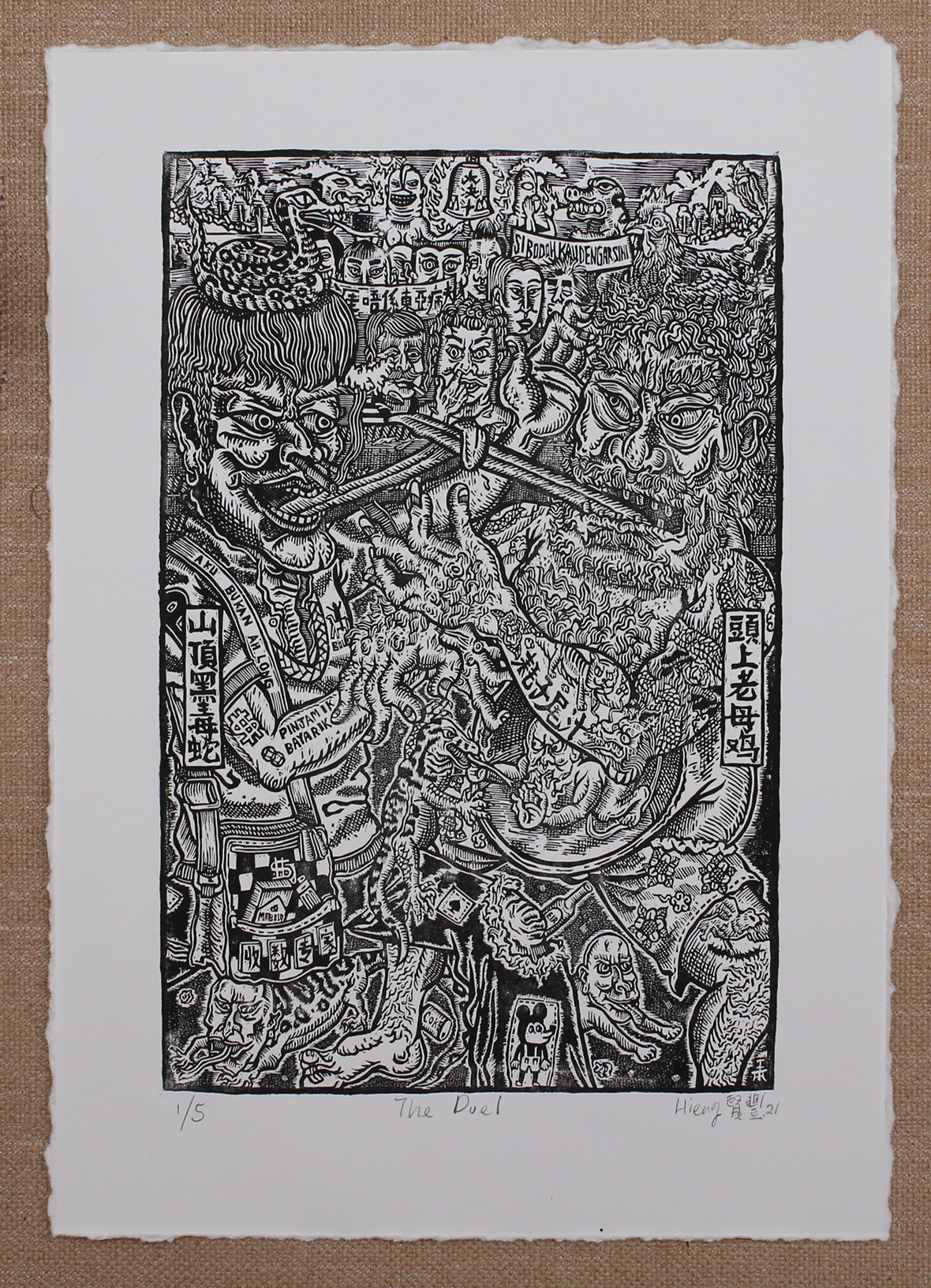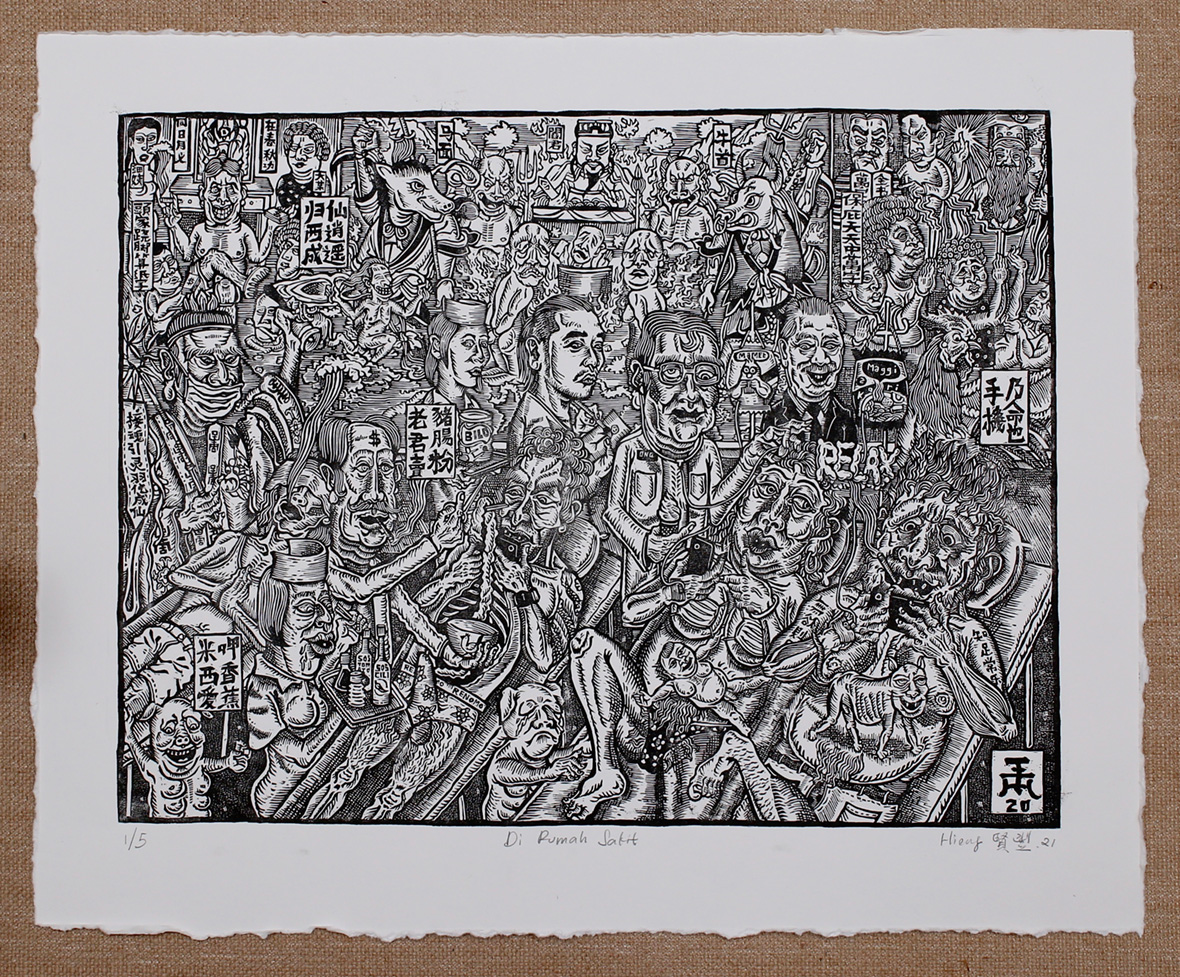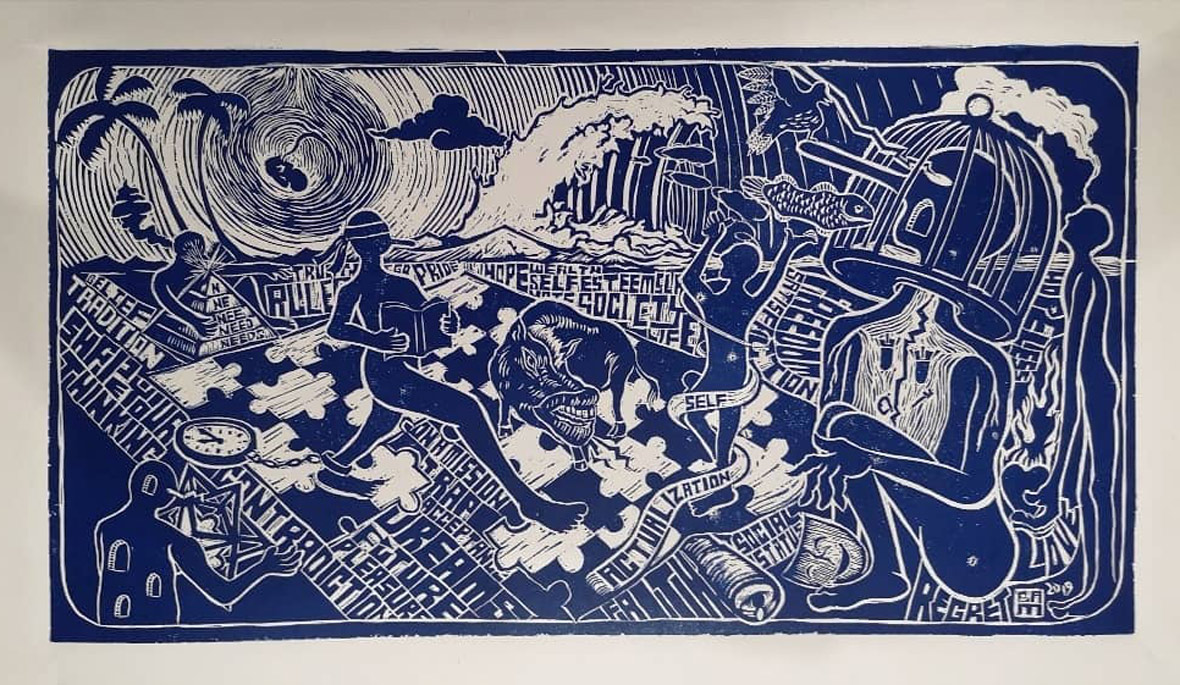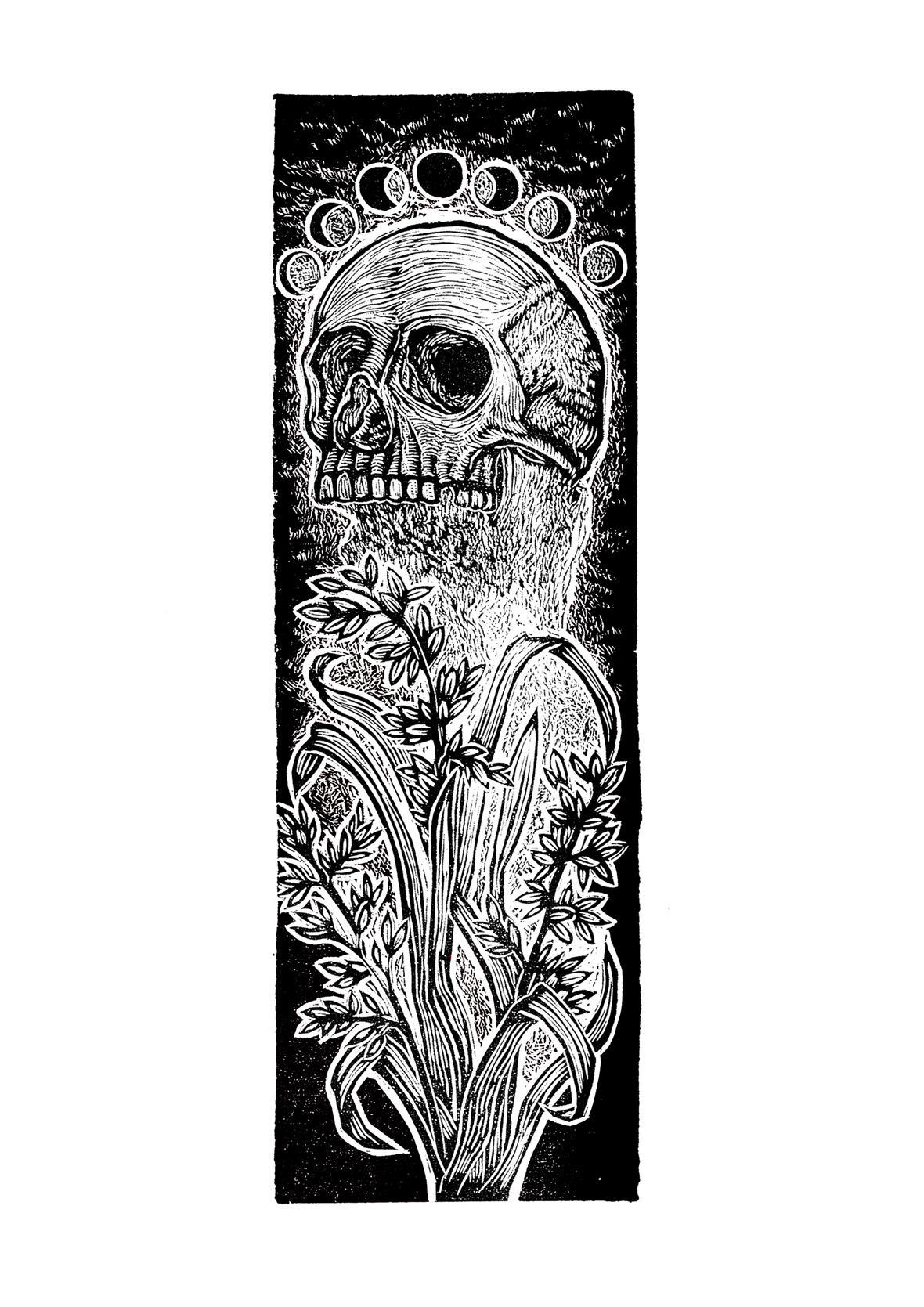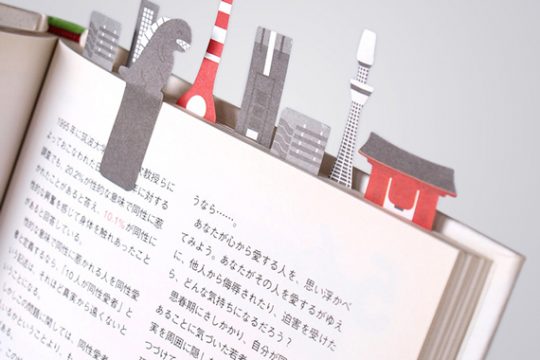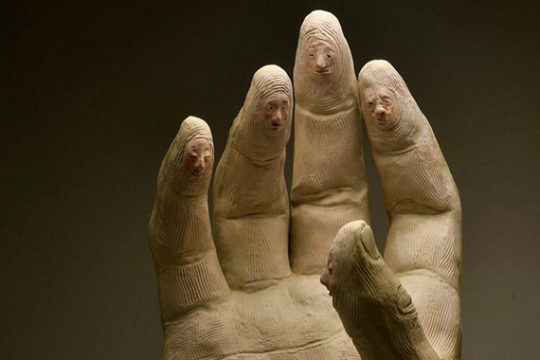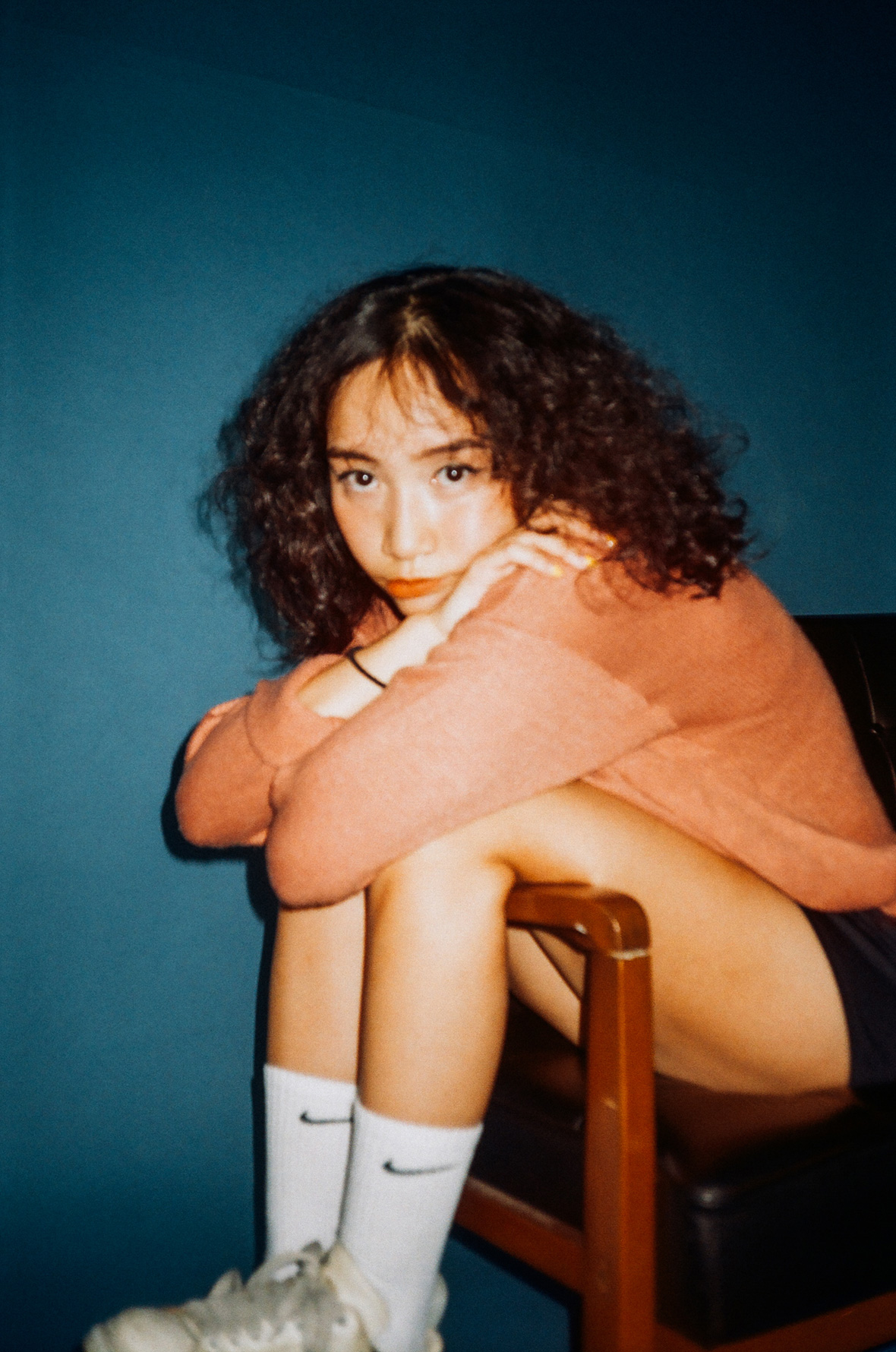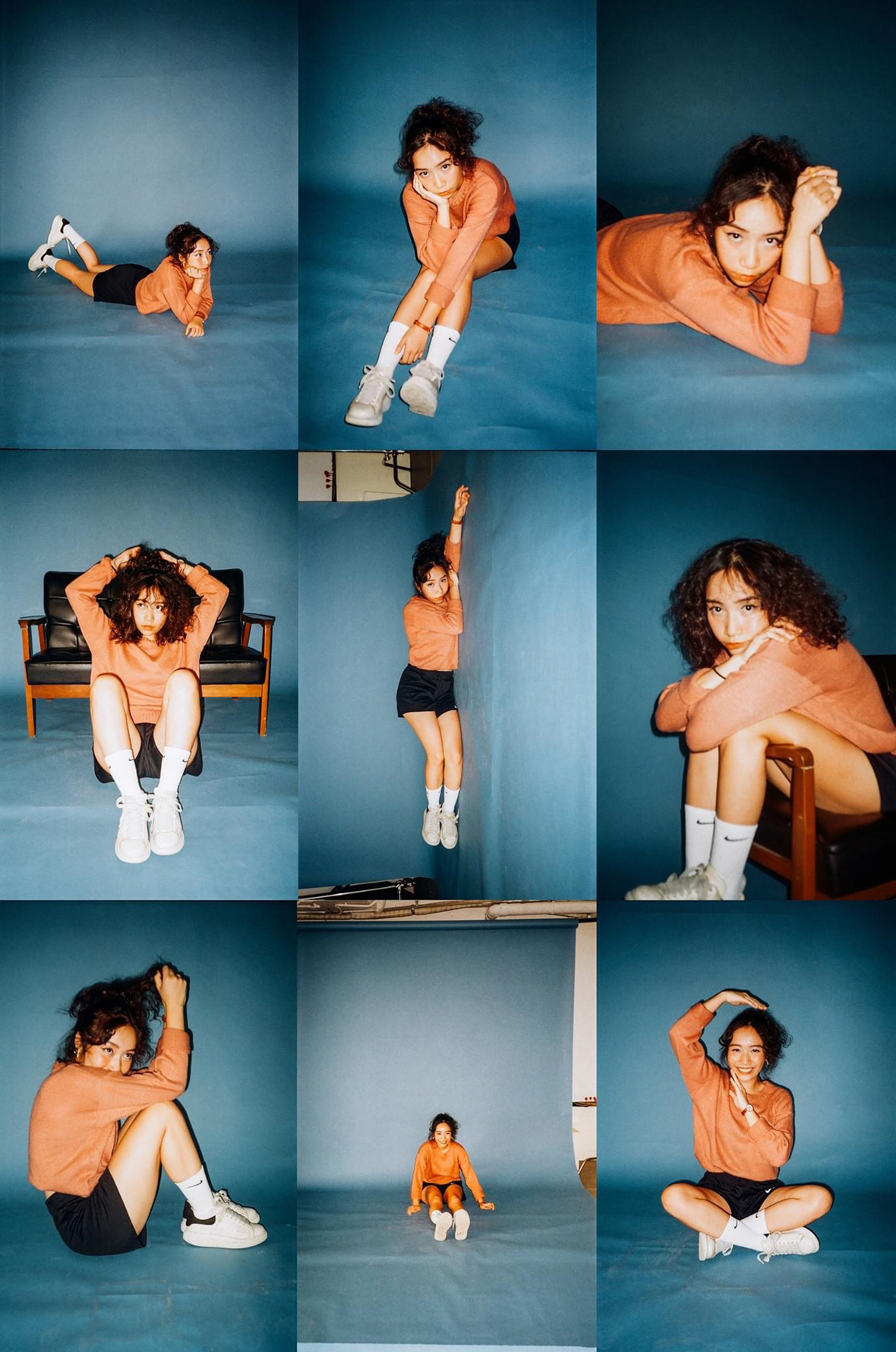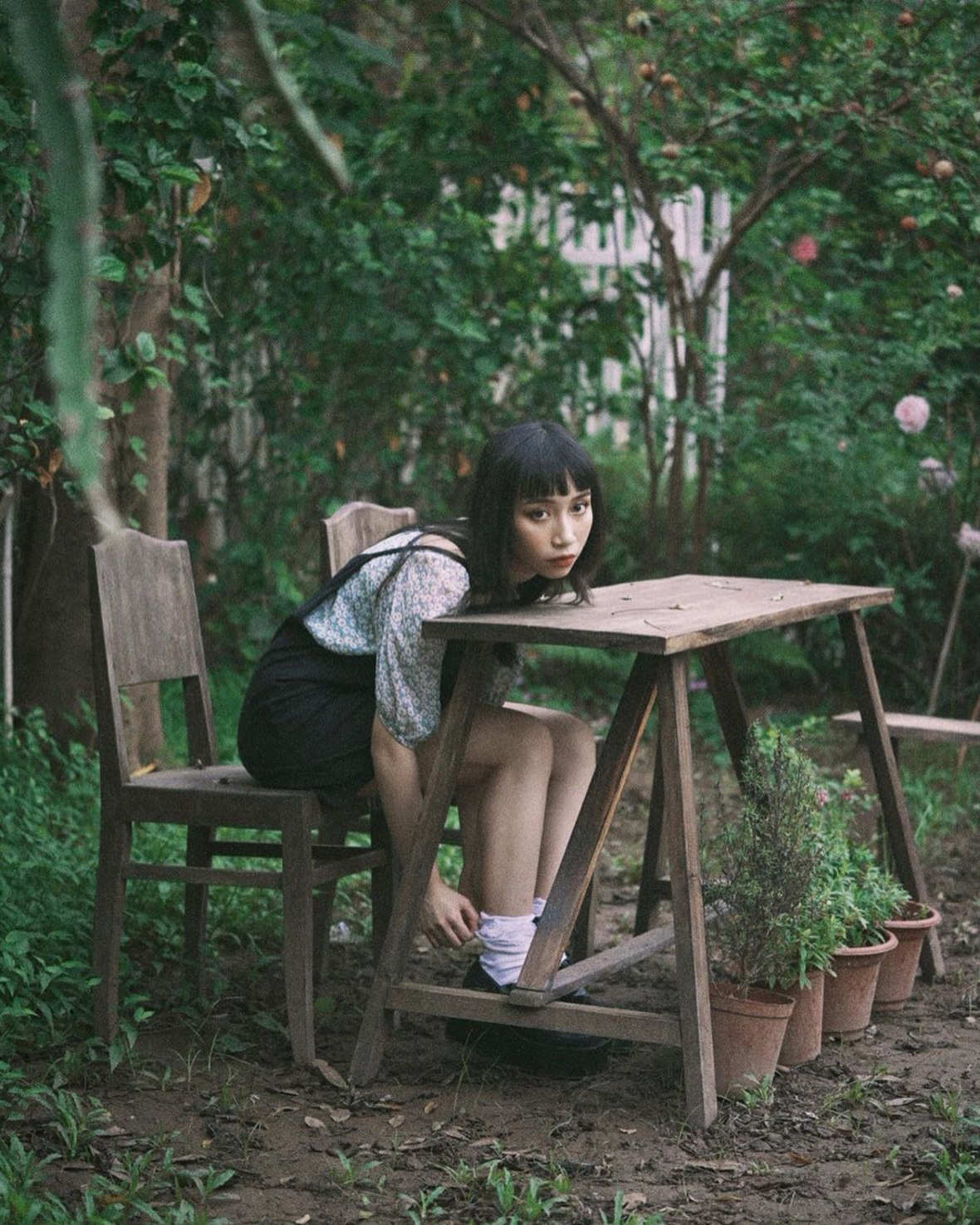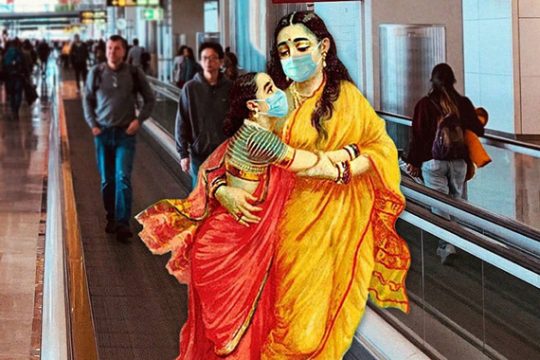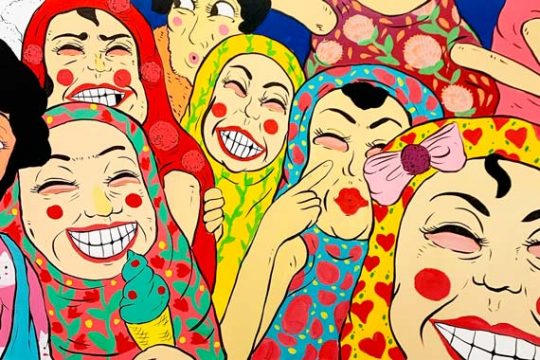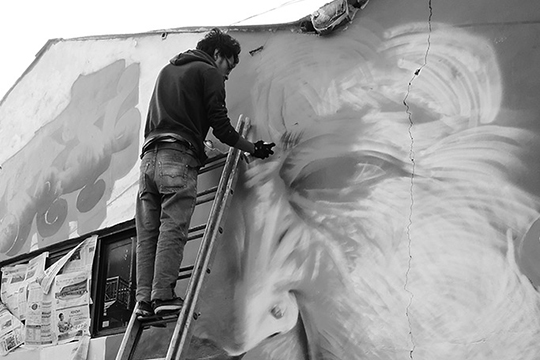
A comics-style explosion erupts in a burst of pop colors in one corner of the sprawling composition. These same colors seem to expand beyond the detonation radius, shading in the floating letterforms and various shapes that have overrun other areas of the frame. Within the same piece, clusters of black-and-white form cryptic rectangles, grainy patches of darkness, and curving lines resembling rice terraces appear throughout. These seemingly disparate art styles and patterns all neatly occupy their own space within the frame. This is Sifat Mpoq Pespaq Diriq, an artwork by Indonesian artist Harishazka Fauzan, who’s built an oeuvre of works all done in a similarly eye-popping style.
混乱无序之中,明快的色彩跳脱而,蔓延至画框之外,一路碾过这当中漂浮的字体和各式各样的图案。就在同一个画面中,黑白相间的神秘矩形贯穿始终,如梯田一样错落在一起。看似迵异的艺术风格与图案相互共存,占据着整个画面。这是印度尼西亚艺术家 Harishazka Fauzan 的作品《Sifat Mpoq Pespaq Diriq》,以令人目不暇接的独特质感创作的一系列作品。
Fauzan’s creative passion began early on, but different from most other artists, it stems from an unlikely source—the military. His father, a devout serviceman, expected him to follow the same career path, and on a trip to a military base, a young Fauzan was fascinated by the sights—the tanks, uniform insignia, and military symbols he saw captivated his imagination. “Taking photos on the base is restricted, so I started thinking: how can I remember everything,” he says. “So I tried to draw them. Since then, I’ve been interested in badges, pins, and anything military. They seemed so detailed, majestic, and sacred even.”
Harishazka 从小就喜欢创作,不同于大多数艺术家的启蒙不同,他对艺术的兴趣最早来自军旅生活。父亲是一名忠诚的军人,小时候总期望他也能参军。在一次军事基地的参观里,年少的 Harishazka 被眼前的坦克、制服徽章和军事符号所深深吸引。“基地当然不能拍照,但我总想把这一切记录下来,于是我试着用笔代替相机。从那时起,我就对徽章、别针和各种军用物品特别感兴趣。它们看起来如此精致、庄严,甚至可以说充满神圣感。”他回忆道。
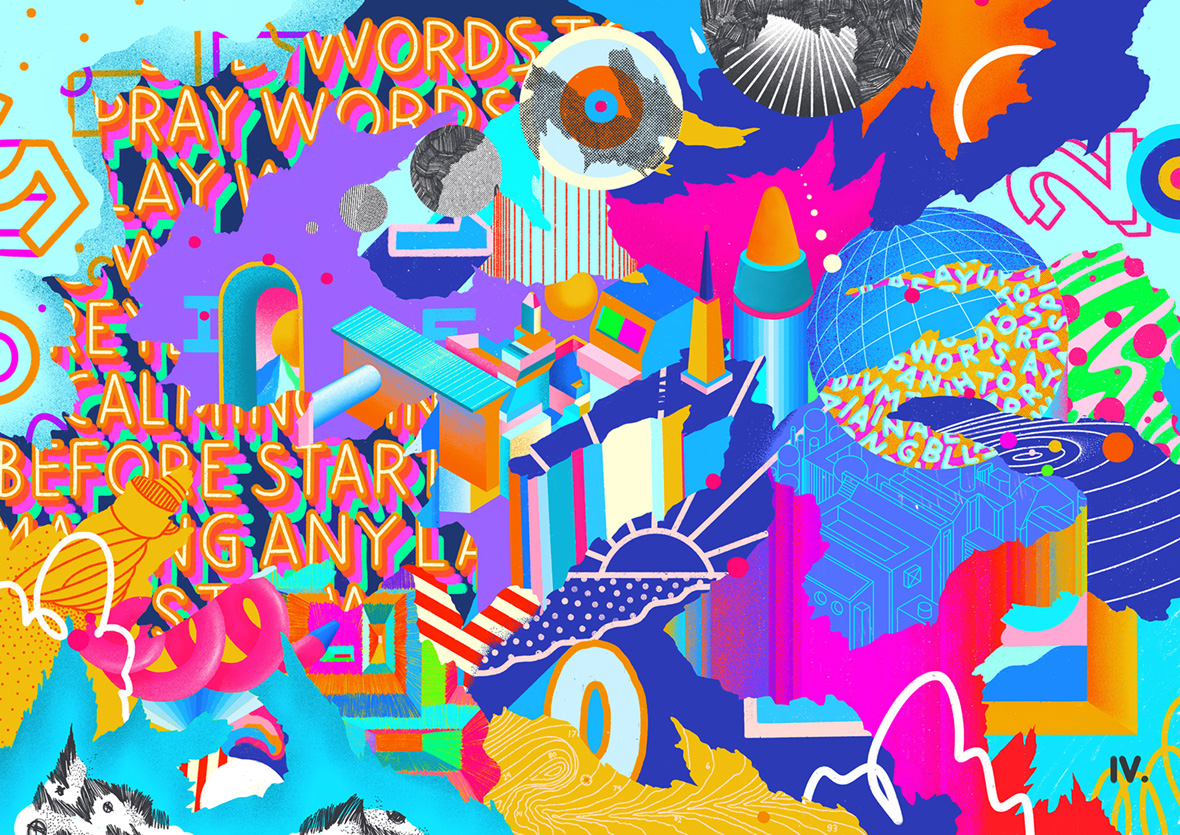
This artistic aptitude led him into the creative field as a young adult, and in university, he decided to study interior architecture. While he isn’t a practicing architect, these studies still largely influence his illustrative works today.
For the uninitiated, Fauzan’s art can seem random, cobbled together in a spontaneous manner, but in reality, everything is exacting. From the design of every shape to the placement of every object, everything is planned to a tee. It’s a meticulousness that’s been ingrained into him due to his architectural background. “Most of the methods I learned carried over to my current creative process, such as my approaches toward composition, clean linework, and collecting data,” he says. “Everything has to be measured and be in order. It feels like I need to turn on my spatial senses whenever I begin working, and my art ends up responding my surroundings in an architectural way: wind directions, sun trail, lighting arrangements, and so on.”
凭借自身的艺术天赋,他早早地进入了创意领域。大学期间,他决定选读建筑专业。虽然没能成为一名建筑师,但这段学习经历对他现在的插画作品带有很大的影响。
在外行的人看来,Harishazka 的作品看似随意,像是自发拼凑在一起,但实际上,一切创作经过深思熟虑。从每个形状的设计到每个物体的摆放,每一处的细节都极其考究。这种一丝不苟正源于他的建筑学习背景。他说:“我在大学学到的大部分理念延续到了我现在的创作中,例如构图方法、简洁的线条和数据收集。一切都必须经过仔细考量才行,保证有条不紊。我感觉每次创作时,都需要用到我的空间感,而我最终的作品也会以建筑的方式,呼应我所处的环境,譬如风向、太阳轨迹、灯光的布置等等。”
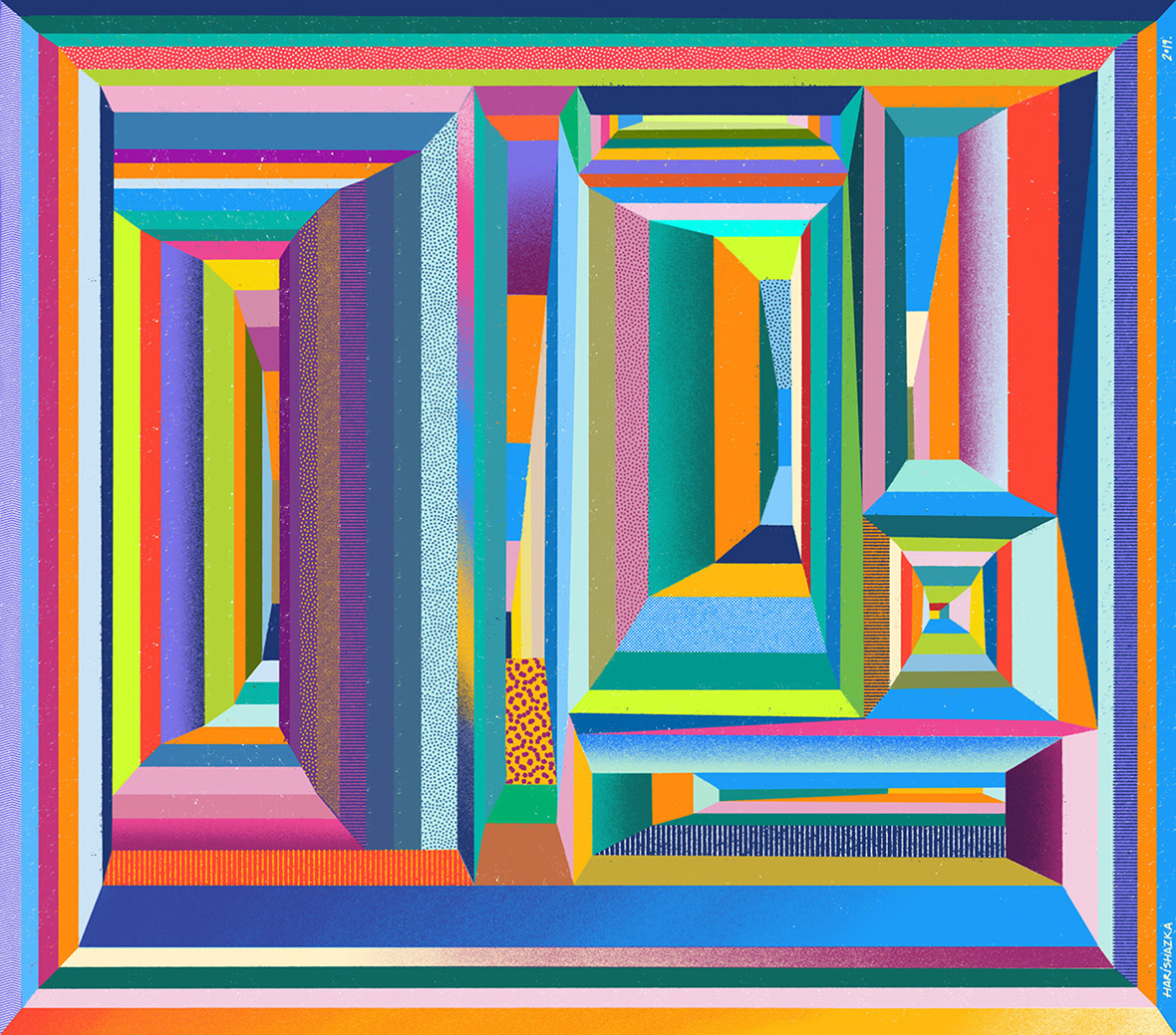
Despite the calculated approach, Fauzan’s ideation process is much less premeditated. His colors are also often decided on spur of the moment, as he believes an instinctual approach to colors will yield even more exciting results. Through his vivid colors and arrangement of patterns, he aims to visualize emotions and memories. “My works are about freezing time, recording everything in a particular moment,” he says. “Seeing my works again in the future can feel like entering a gateway into my past.”
框架上的深思熟虑,让创意的过程变得随意了起来。他选择的色彩往往是即兴而定,听从直觉,有时能达到意想不到的效果。他希望能通过生动色彩与图案编排,将情感与记忆视觉化。他说:“我的作品旨在凝固时间,记录某个特定瞬间的感觉。当我在未来某一天,重新回顾这些作品时,我会感觉像穿越时空,回到了过去。”


Fauzan believes one of the most meaningful works he’s created in recent times was during the pandemic-induced lockdown. Titled Linimasa, Jilid Pertama, the piece was a departure from his earlier styles, though still painted in an array of vivid colors. It also ended up being one of his most time-consuming pieces. “This work kept me sane since I needed a huge diversion,” he says. “I learned a lot about myself creating this piece: I learned how to be more patient, because of the sheer amount of colors I used; I learned about overcoming my fear of technical issues and embracing new challenges. It usually takes four or five months for me to complete an artwork. This one took four.”
Another piece created during the height of the pandemic was Hari-Hari Huru Hara Menanti Hari Hura-Hura, which translates to “Waiting for Brighter Days in these Chaotic Days.” This particular piece was meant to be a visual diary of when the first lockdown happened in Jakarta. Similar in style to Linimasa, Jilid Pertama, the piece is composed of interlocking orbs that form a winding tunnel. Its’ meant to evoke imagery of the smoke trail of an out-of-control rocket, which he believes is an apt symbol of the chaotic times. And like smoke, the chaos of today will inevitably dissipate to give way to clear skies.
在 Harishazka 最近创作的作品中,他觉得最有意义的是一幅在疫情封锁期间完成的画作。这幅作品名为《Linimasa, Jilid Pertama》,与他早期的风格背道而驰,是他耗时最长的作品之一。“在我最需要的时候,这幅作品帮助我保持清醒。在创作这幅作品时,我对自己有了更深入的认识。因为要使用大量色彩,我学会了如何变得更有耐心;我学会了如何克服对技术性问题的恐惧,勇敢迎接新的挑战。我通常四五个月才能完成一幅作品,这幅画就用了我四个月的时间。”
他在疫情爆发期间创作的另一幅作品是《Hari-Hari Huru Hara Menanti Hari Hura-Hura》,意为“在混乱的日子里等待光明”,记录了雅加达第一次封城的样子。其风格与 《Linimasa, Jilid Pertama》相似,由球形线条交织成蜿蜒的隧道,令人联想起失控火箭的烟雾轨迹,他觉得这恰如其分地象征了这个混乱时代的面貌。同样,如烟雾一样,今日的混乱终有一天会烟消云散,重现晴朗的天空。
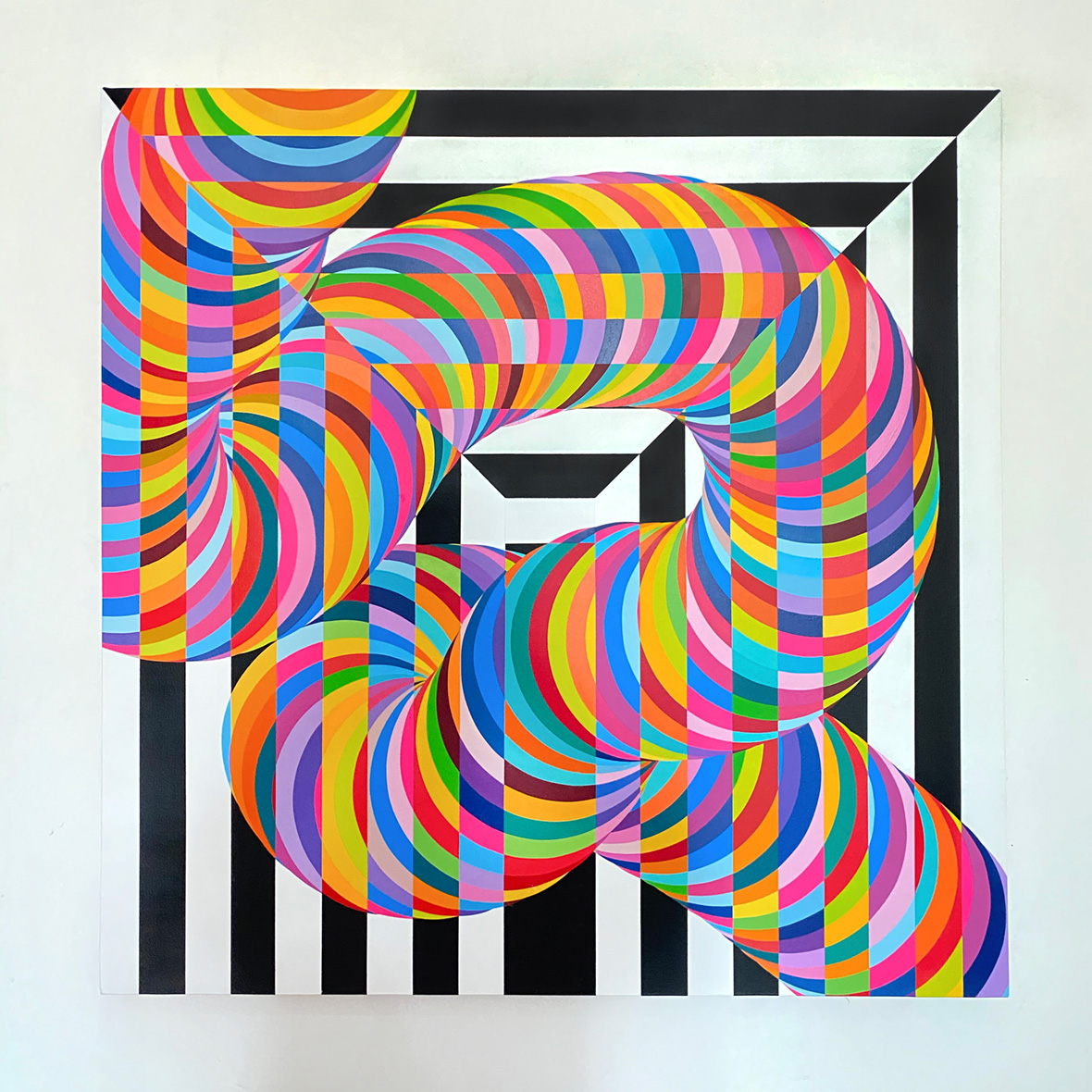
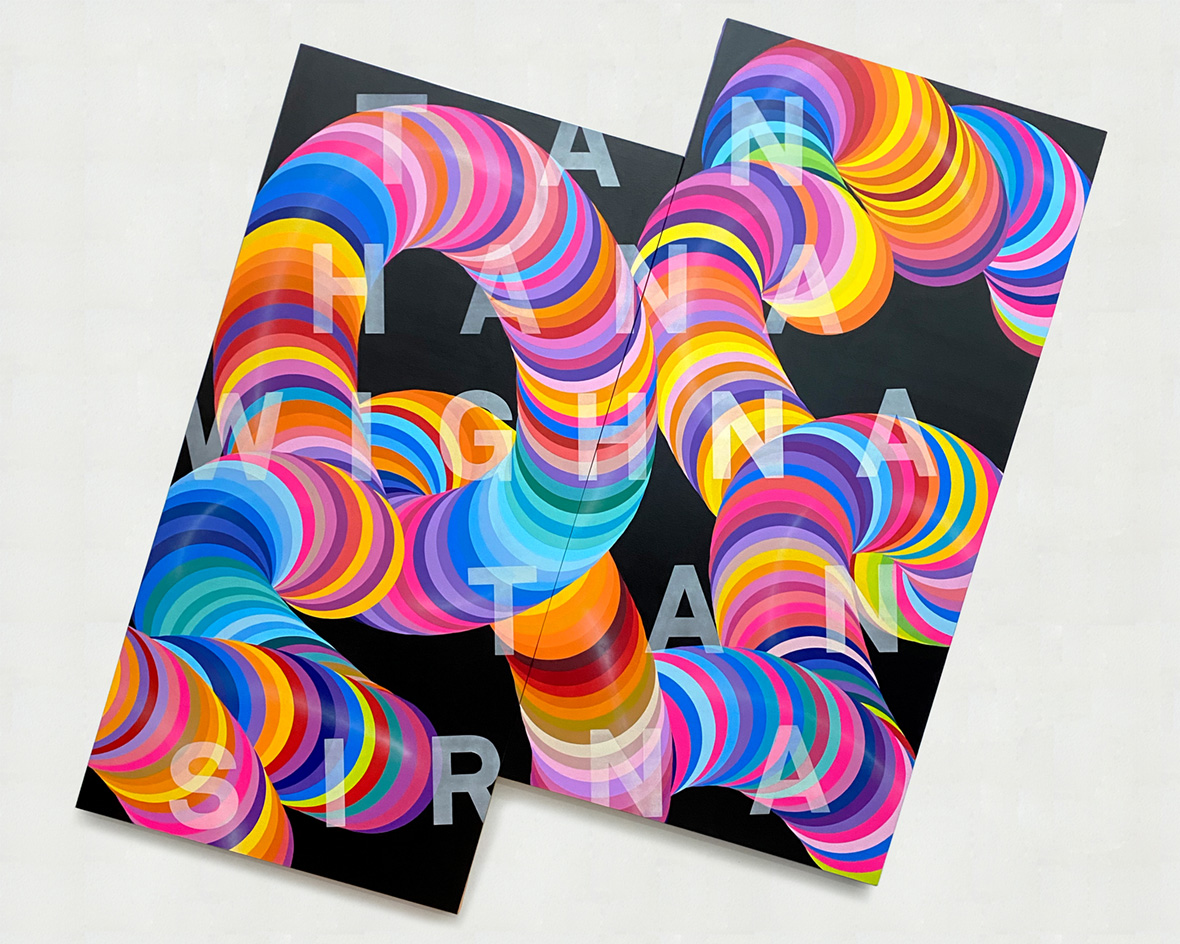
Fauzan keeps an open mind to the world and his artistic endeavors. In recent years, he’s begun dabbling with a variety of tangible mediums, including painting on canvases, creating wall-sized murals, and even making installation pieces.
No matter the medium though, the same sense of joy and optimism radiates from Fauzan’s work. Each canvas is a jamboree of color and commotion, and the shapes that Fauzan has conjured seem to glide freely within the composition. Even though he may touch on darker themes at times, they’re viewed through a lens of hope, of optimism for the future, and ultimately, they’re celebratory in nature—they celebrate the beauty of now while harboring hopes for an even more beautiful future.
Harishazka 对于世界和自己的艺术创作始终保持开放。近年来,他开始尝试各种艺术媒介,包括在画布、壁画上的绘画,甚至也尝试制作装置。
不管是哪一种艺术媒介,他的作品始终散发出一种欢乐与乐观。每幅画都是色彩与情感的狂欢,由他所构思的形状仿佛在画面中自由滑动。即便是在创作更严肃的主题,也透露着充满希望和对未来的乐观态度,归根到底,他的作品都是一种庆祝——庆祝当下的美丽,同时心怀对美好未来的期盼。
Like our stories? Follow us on Facebook and Instagram.
Website: www.harishazka.com
Instagram: @harishazka
Behance: ~/harishazka
Contributor: David Yen
Chinese Translation: Olivia Li

